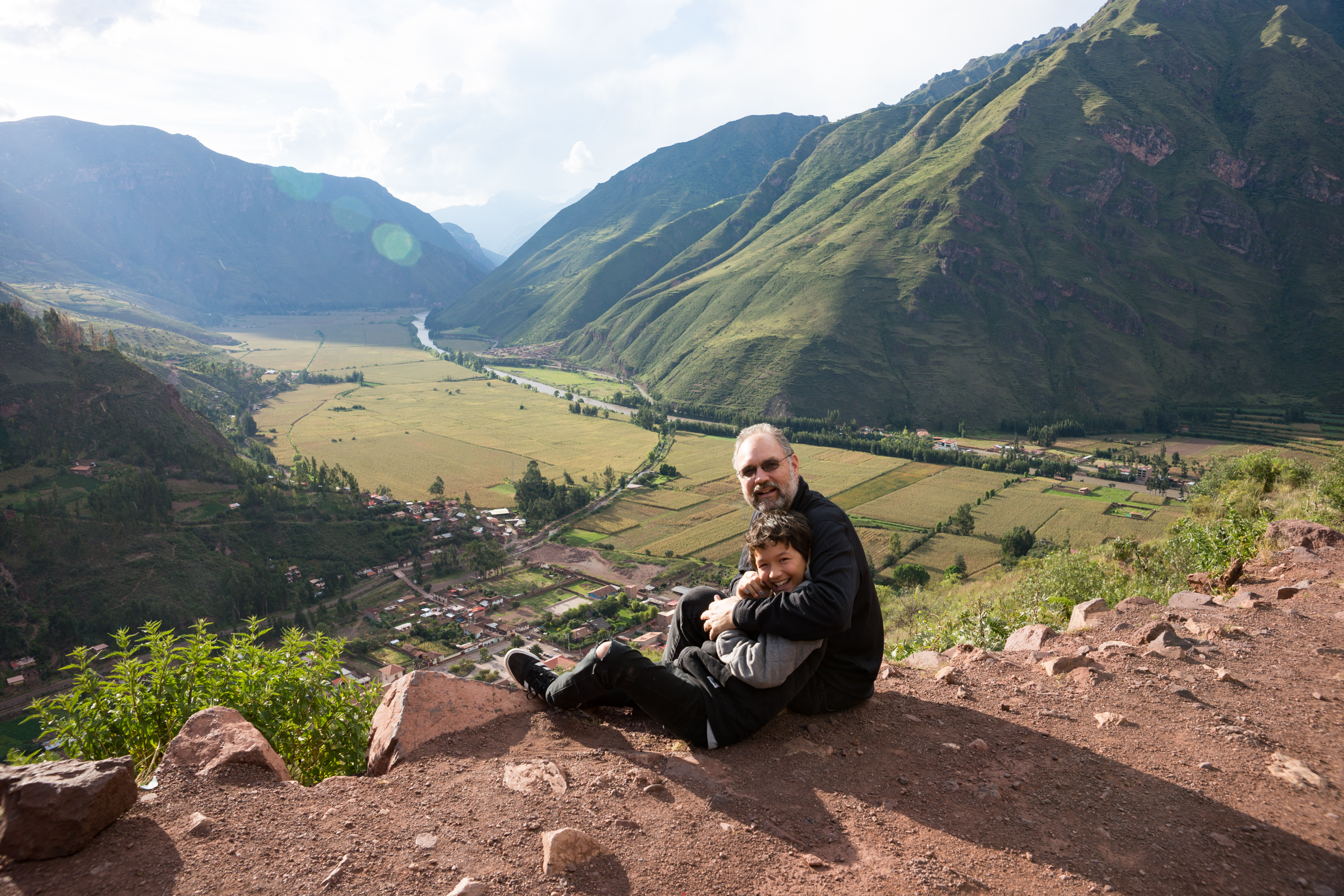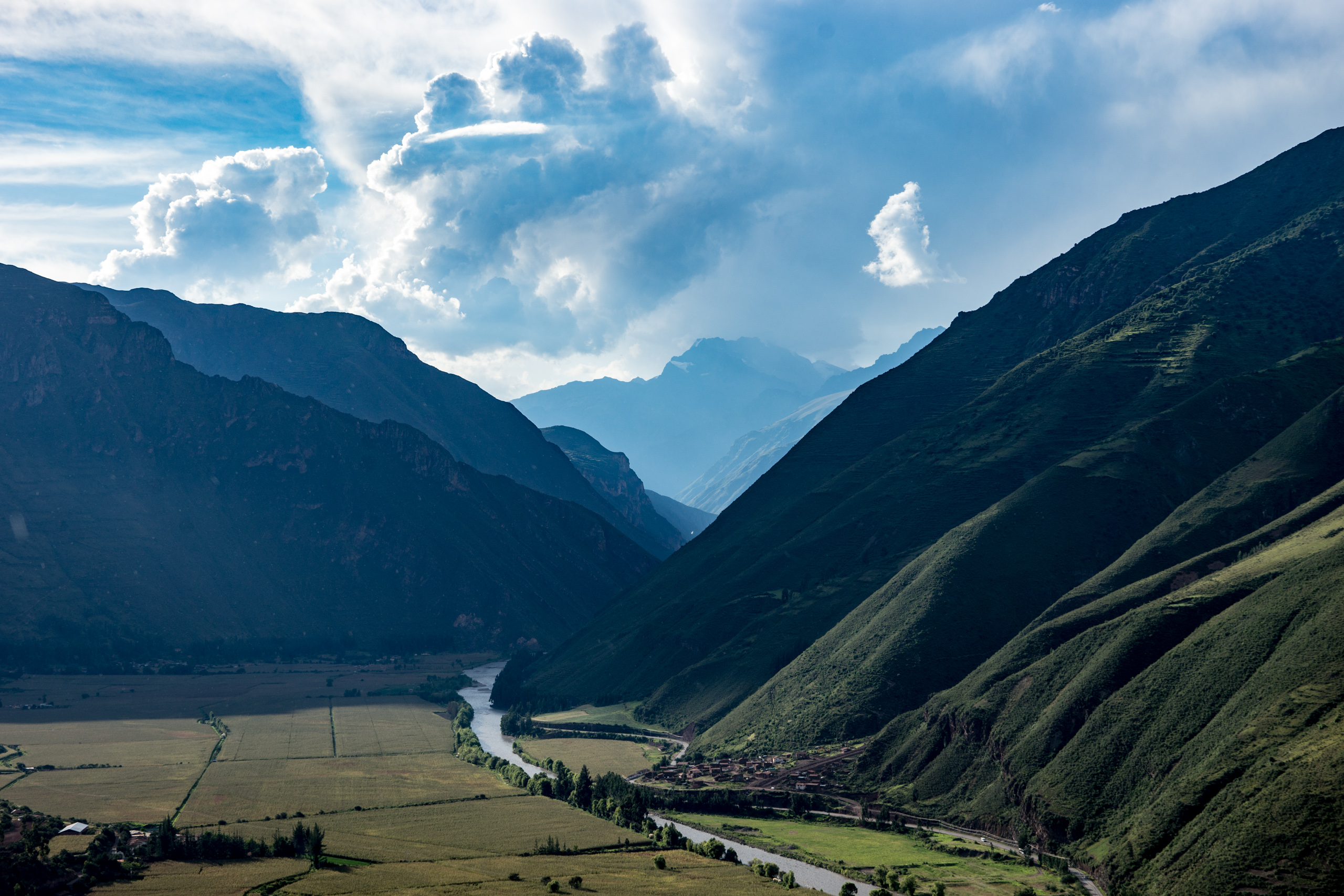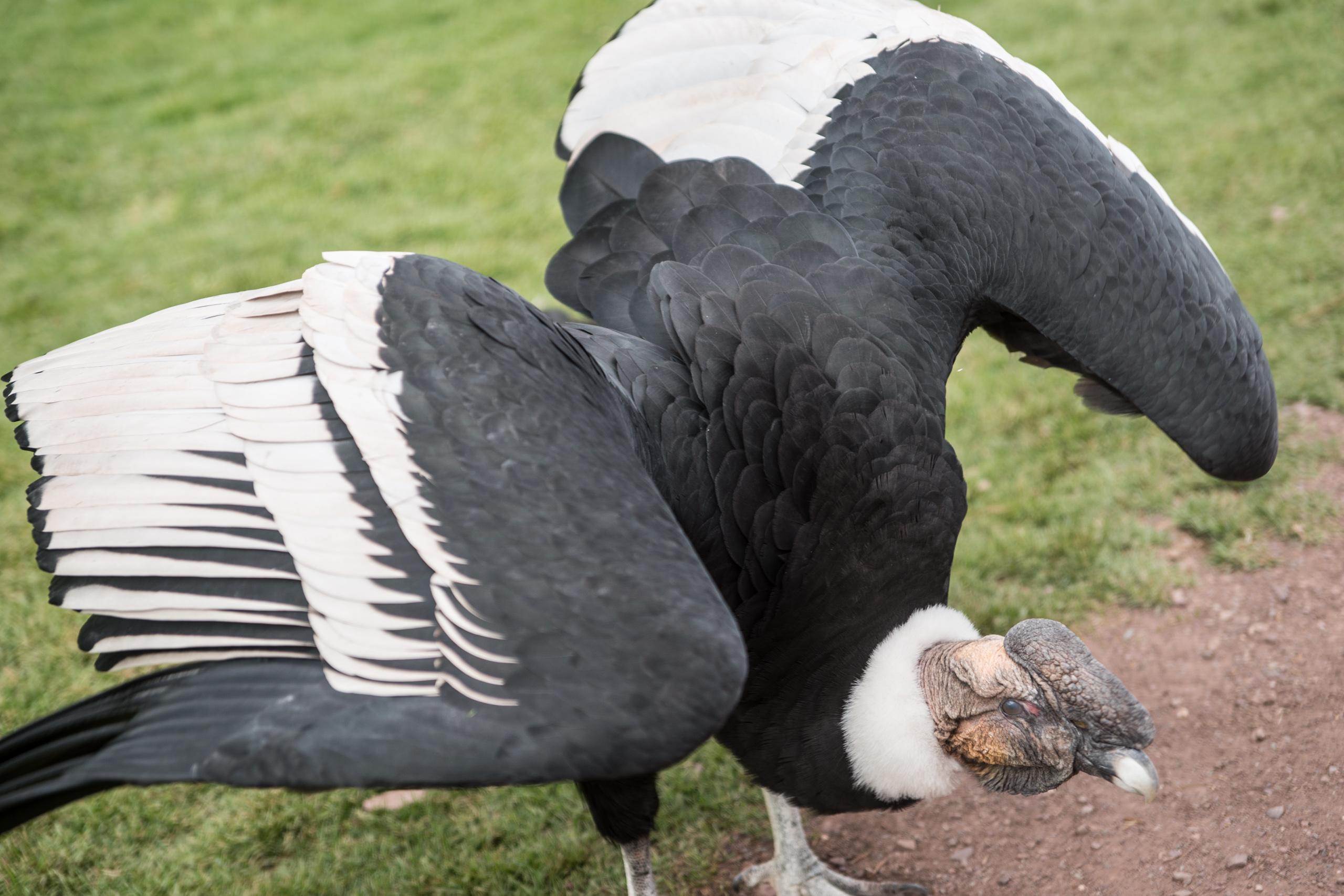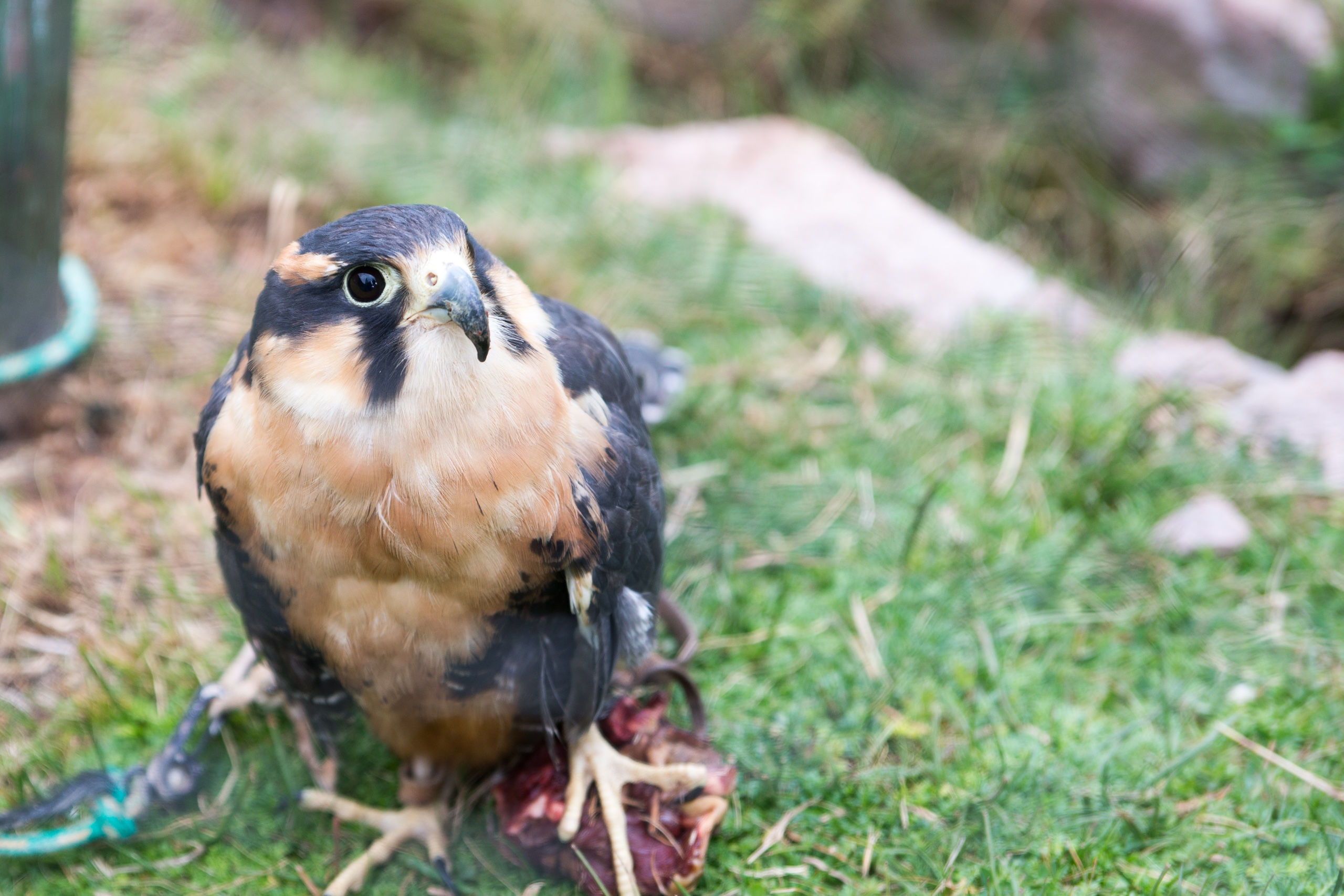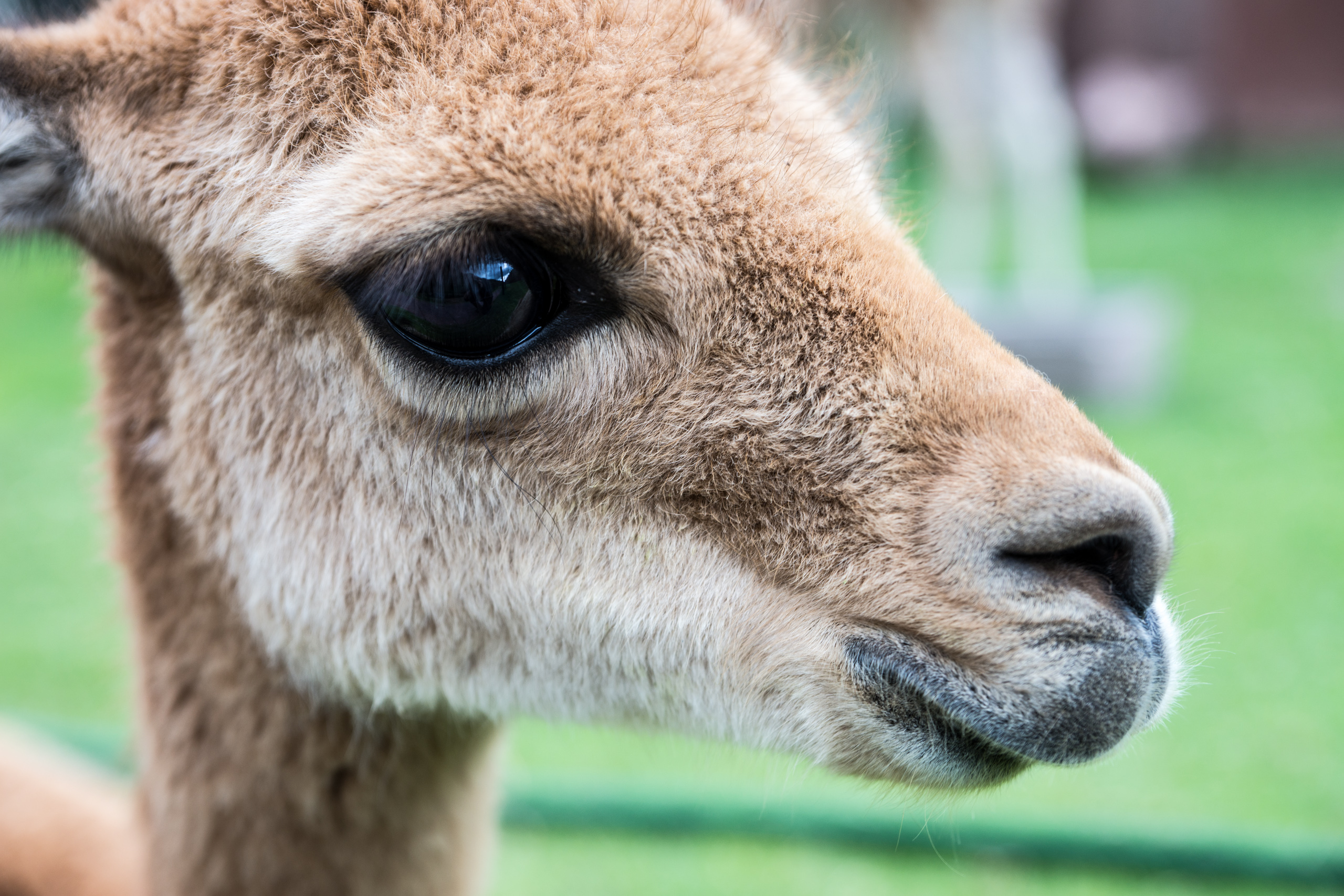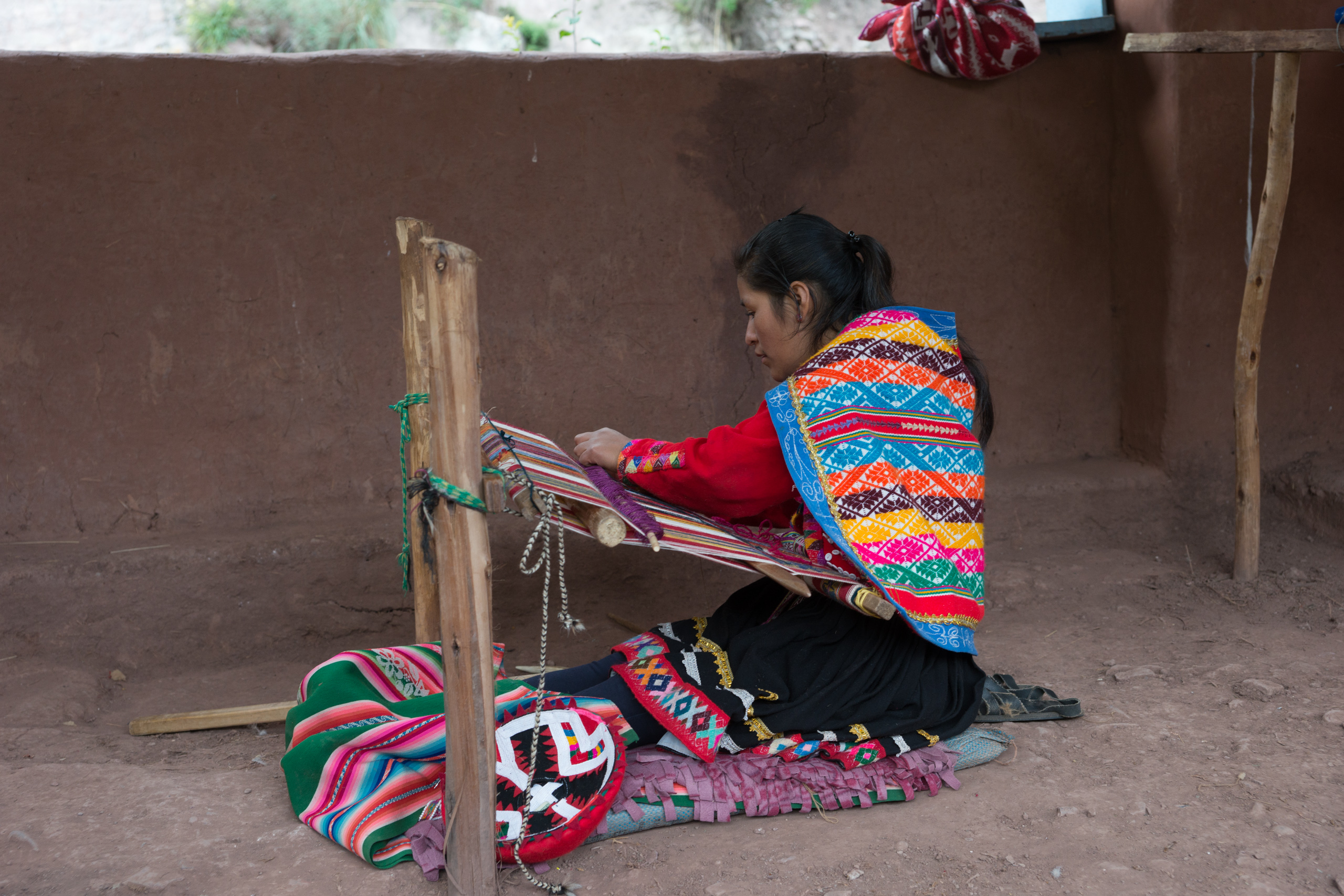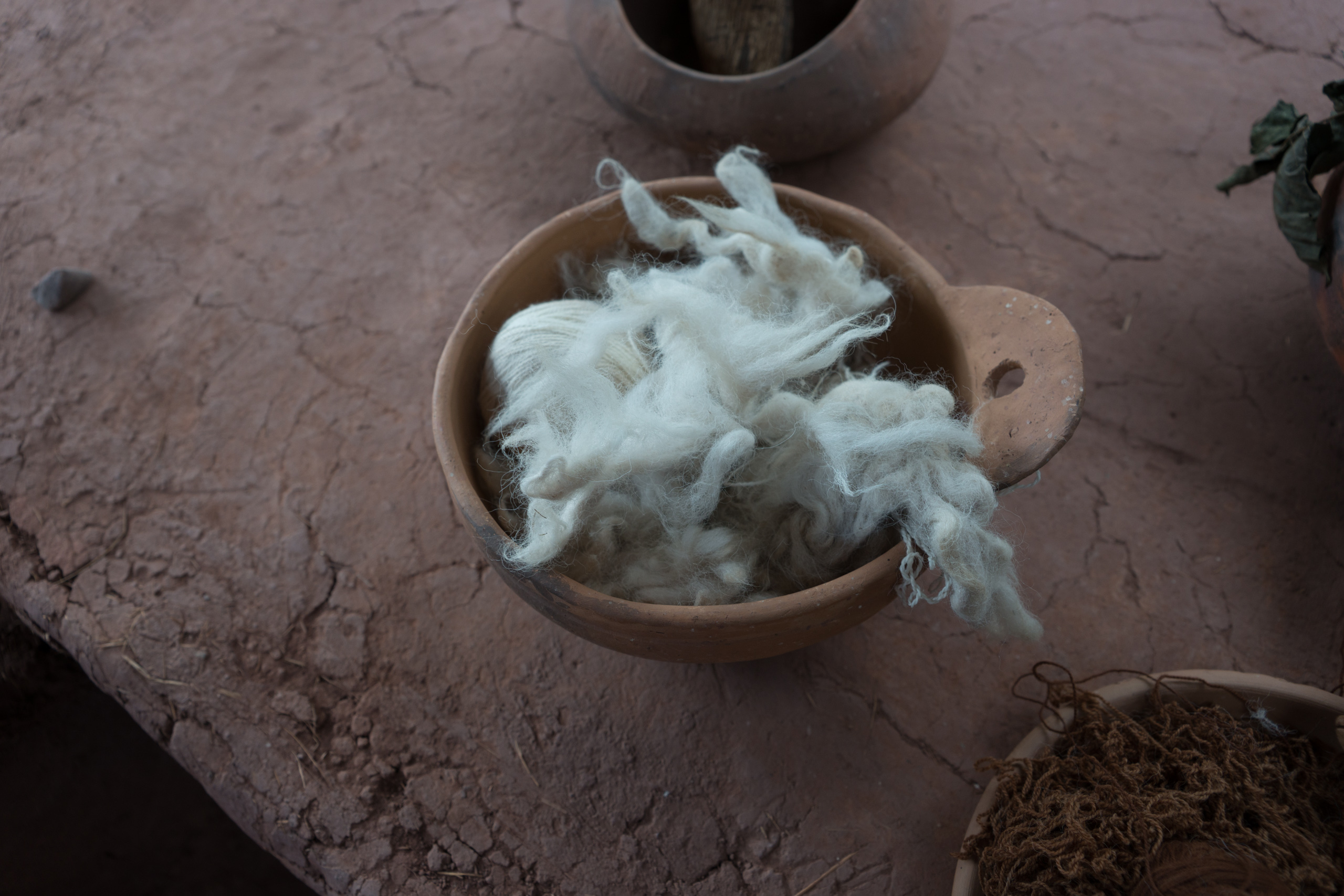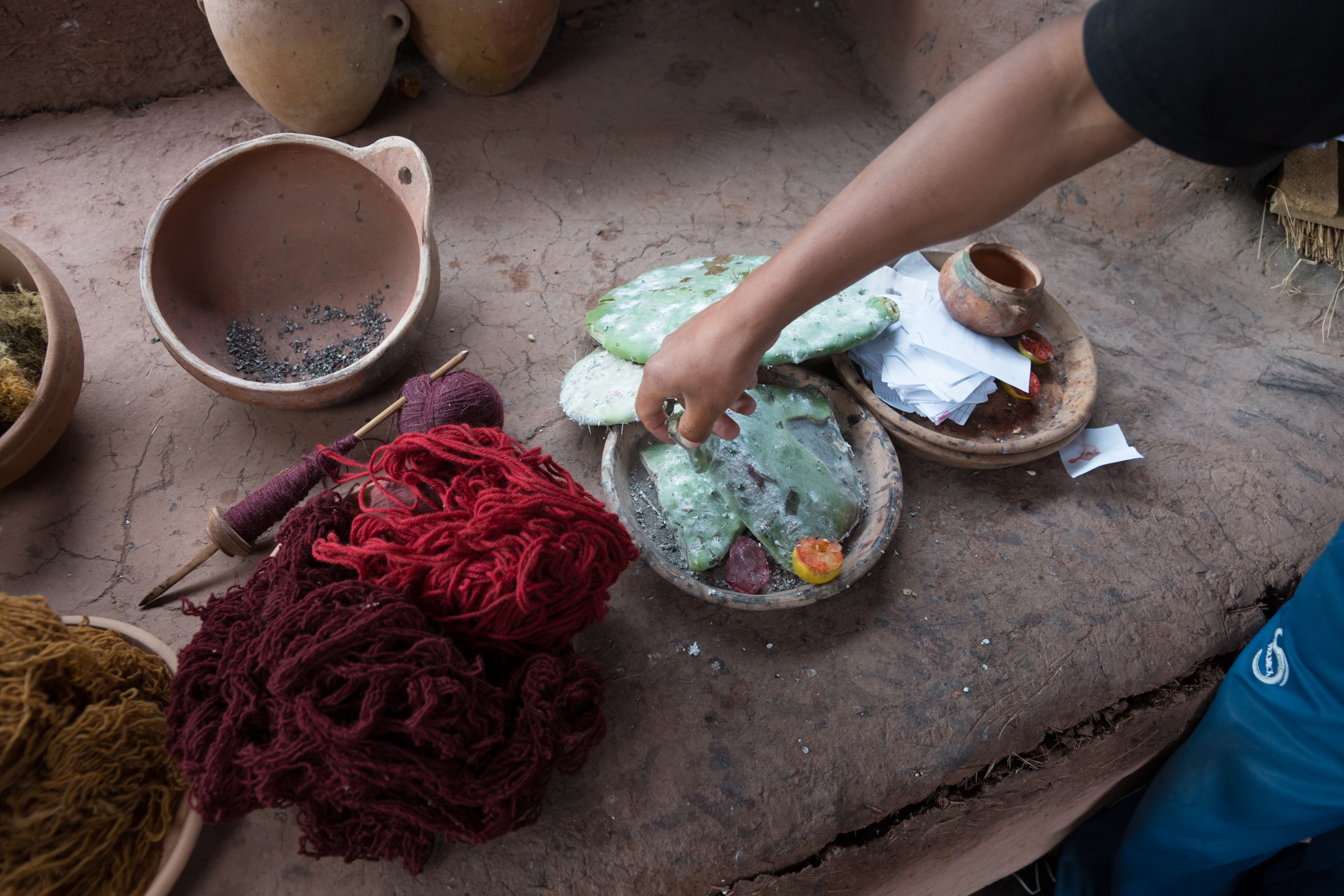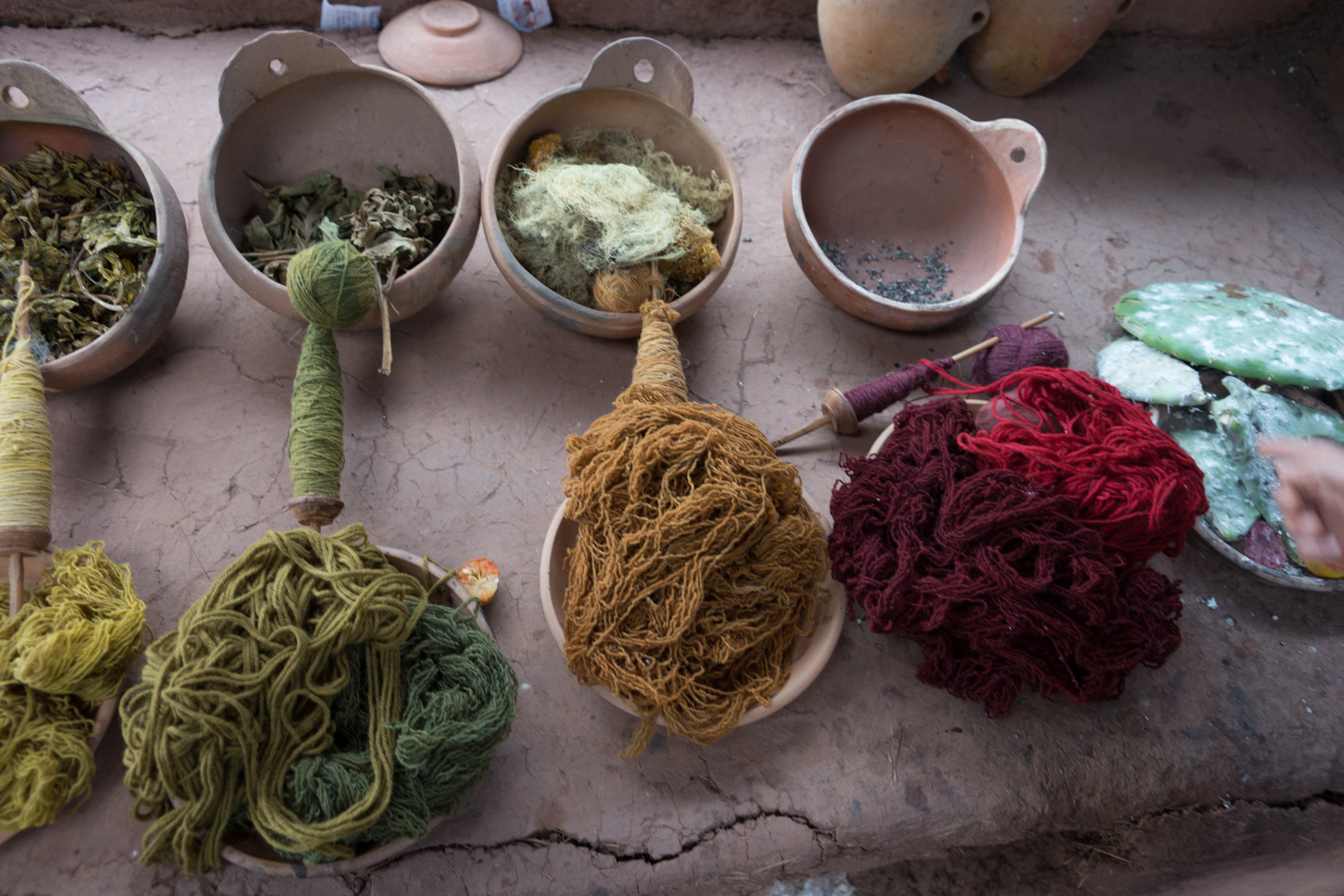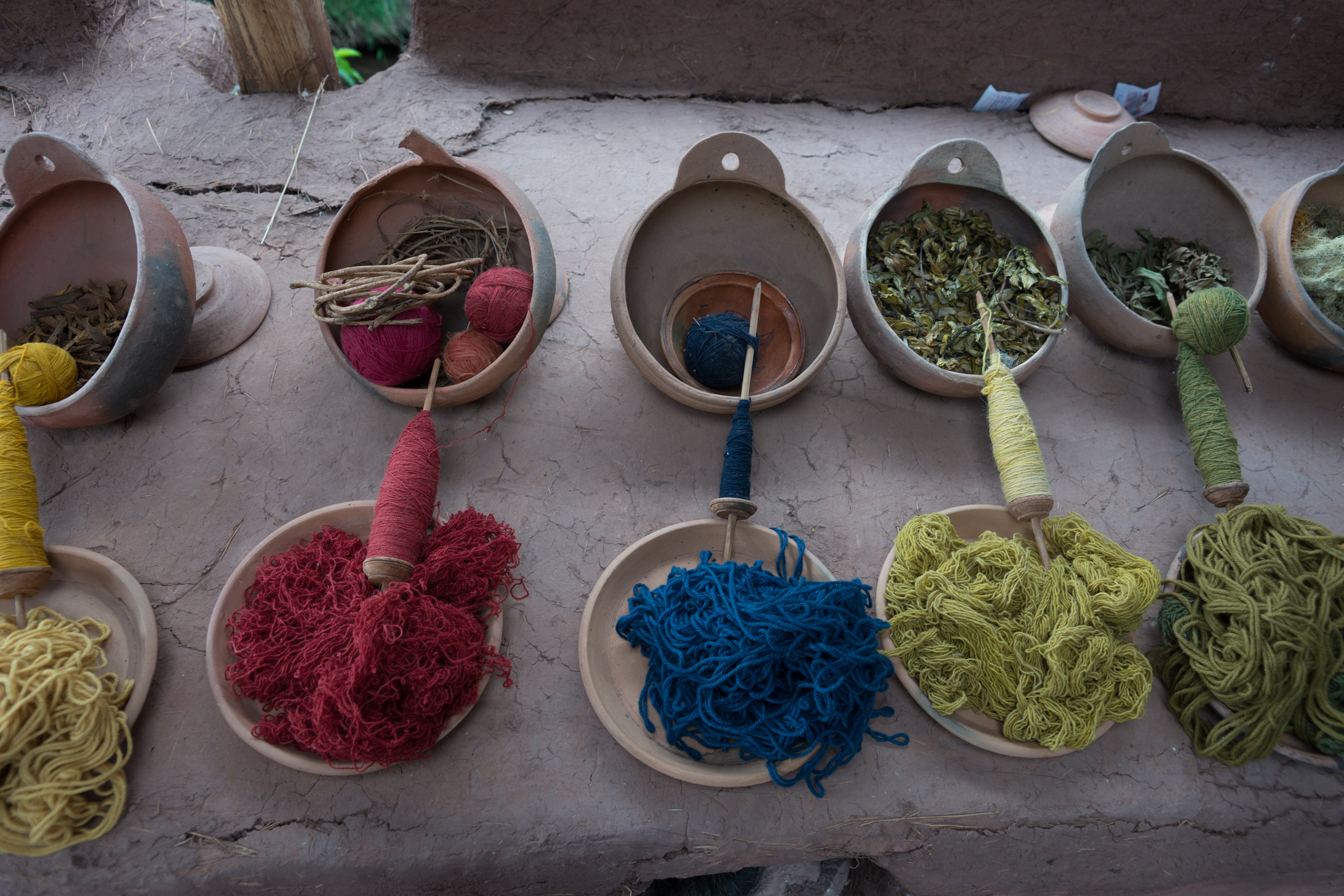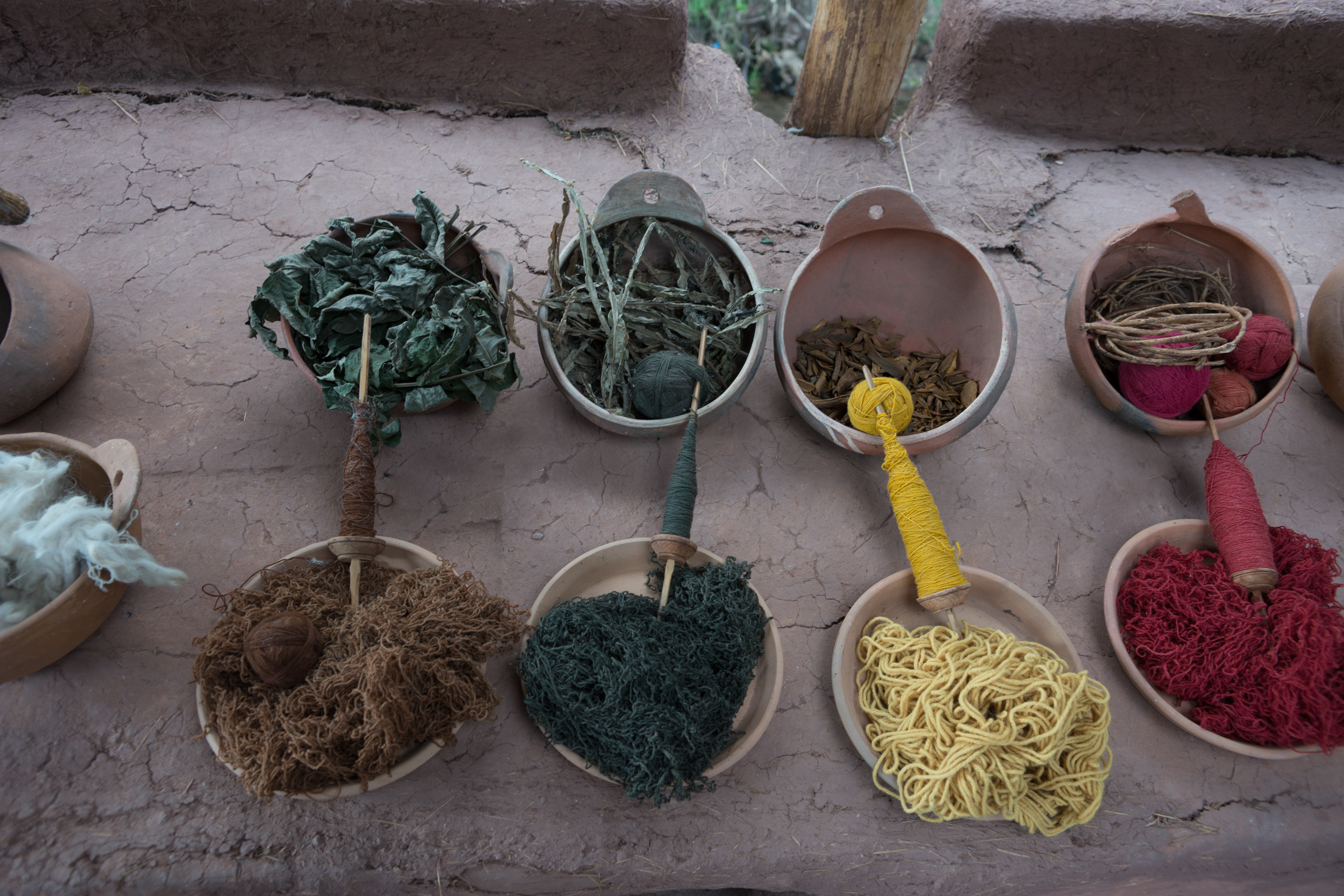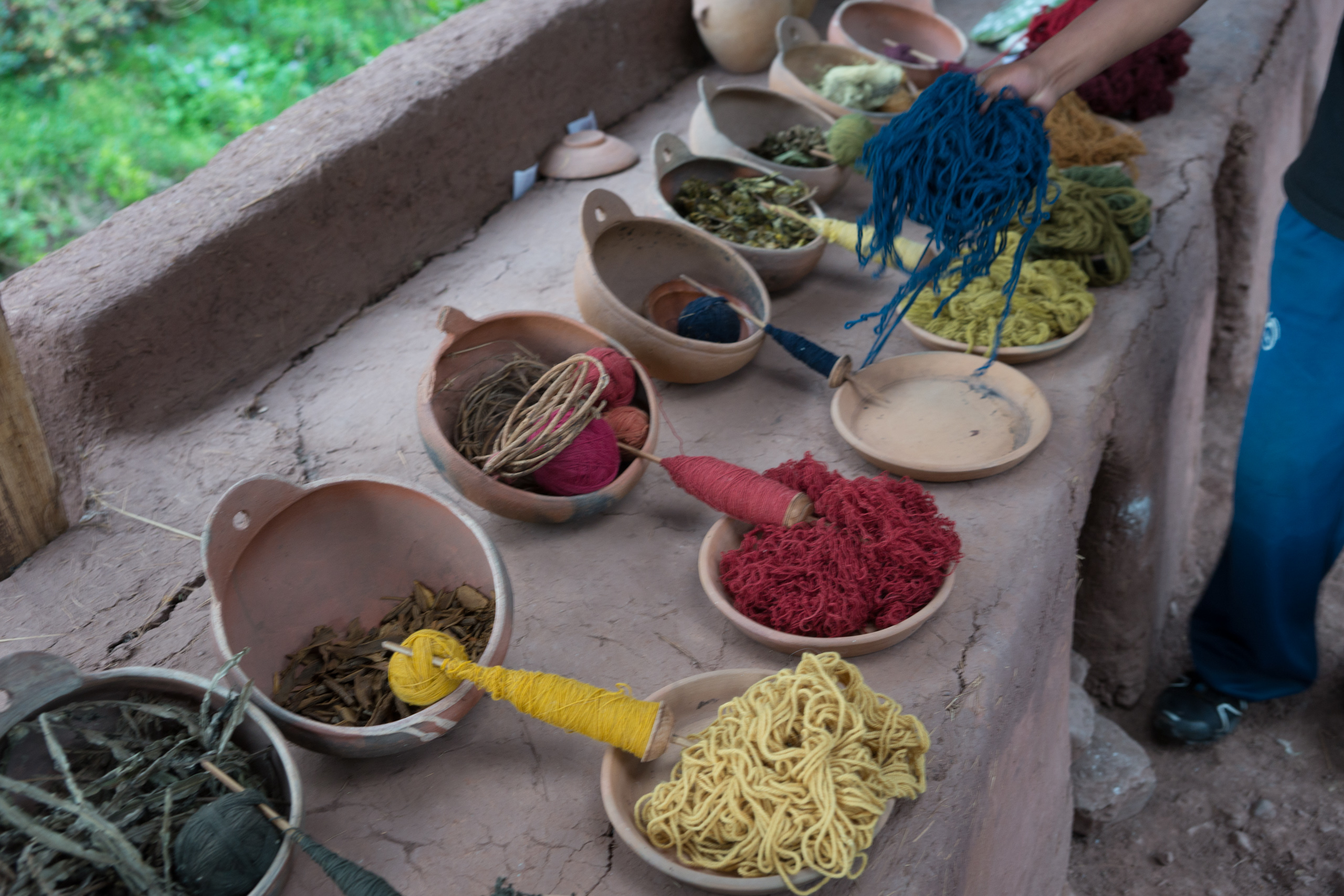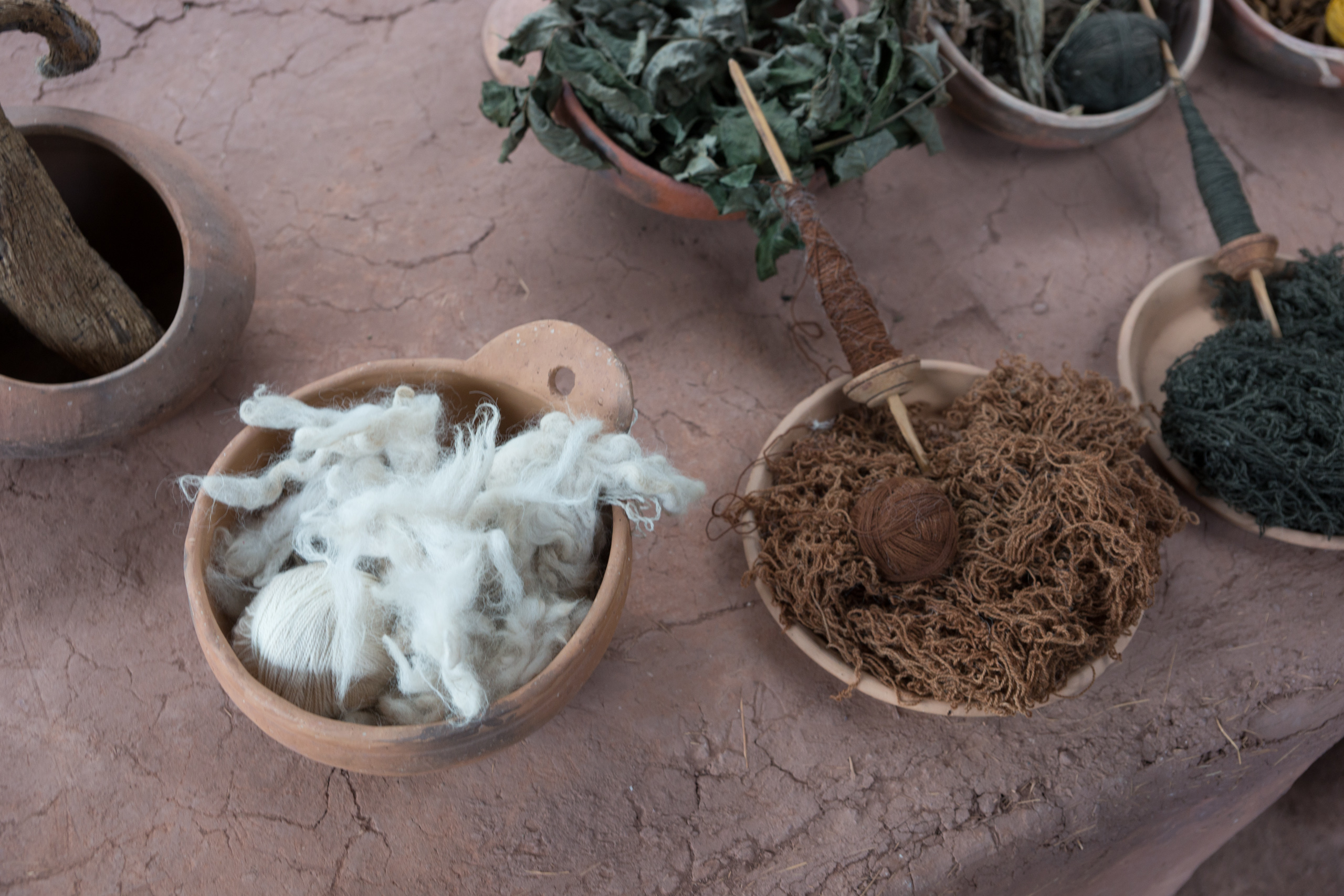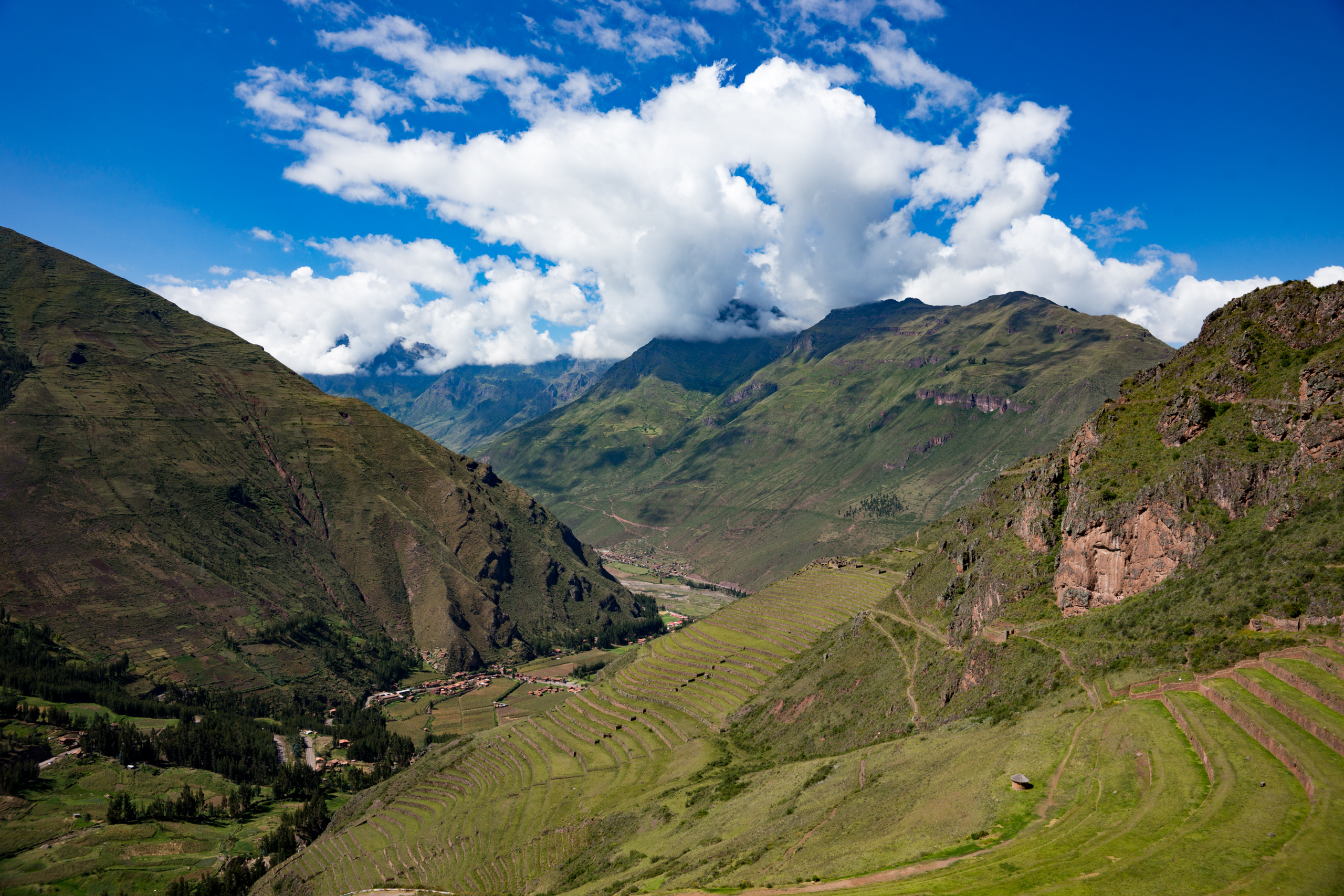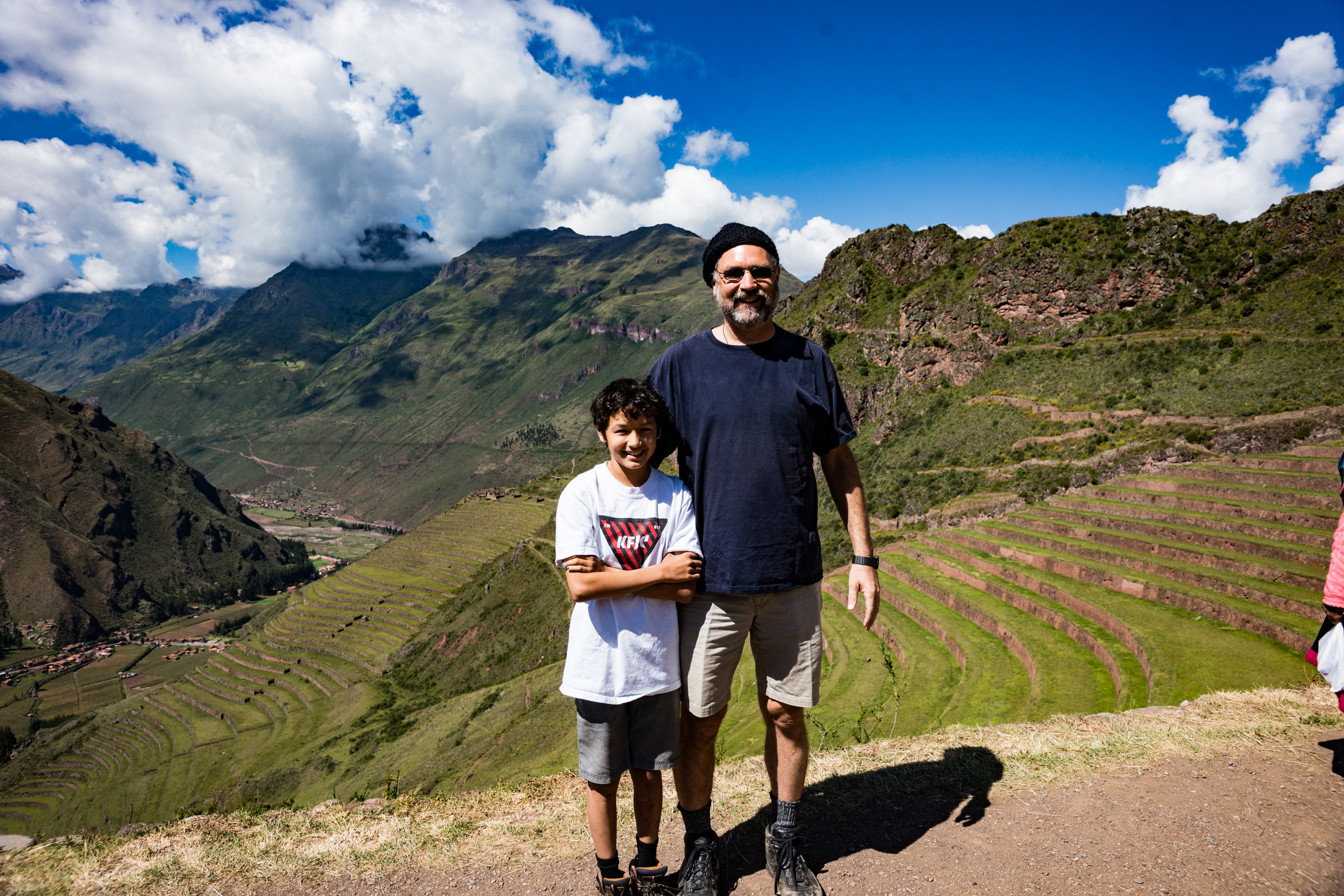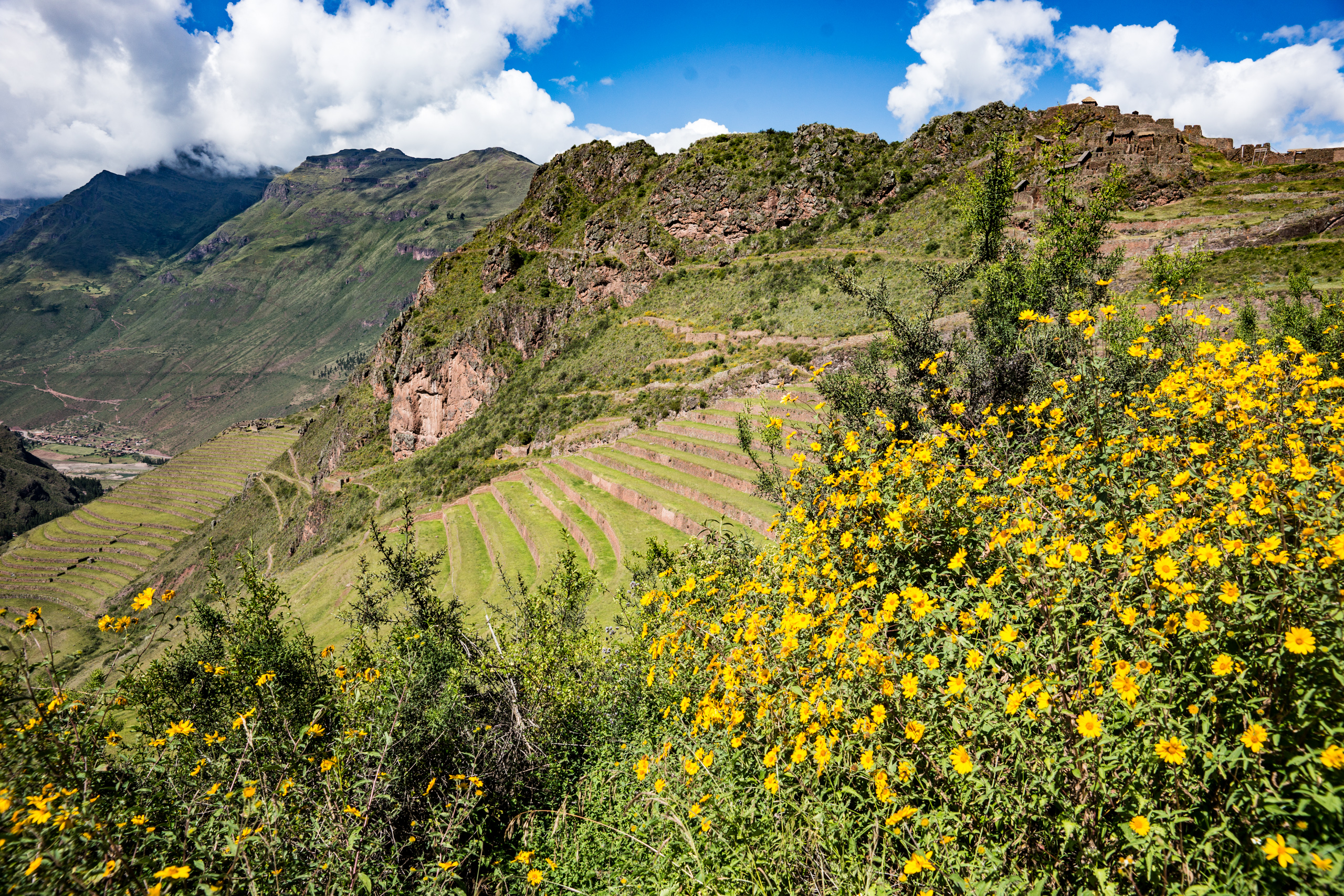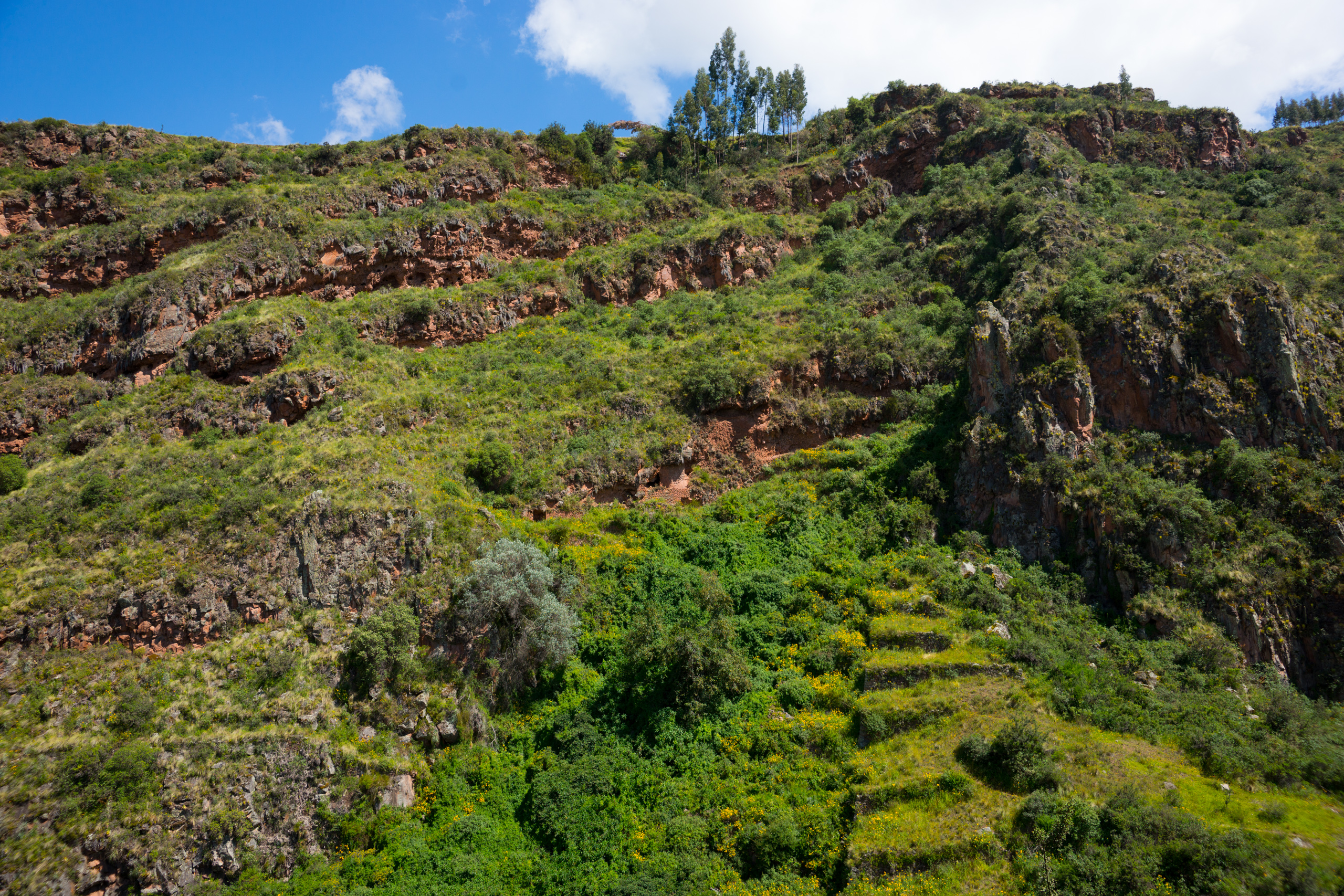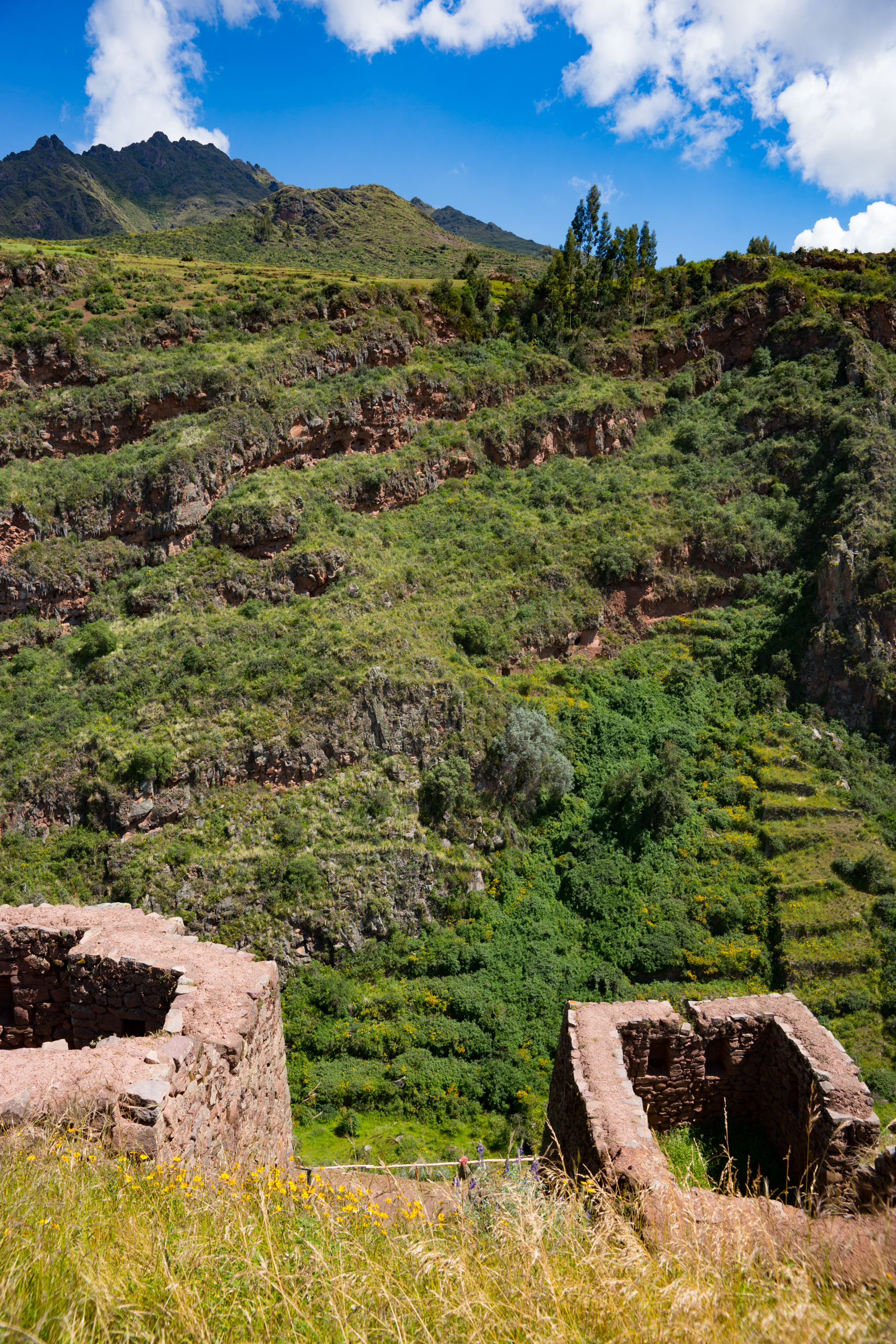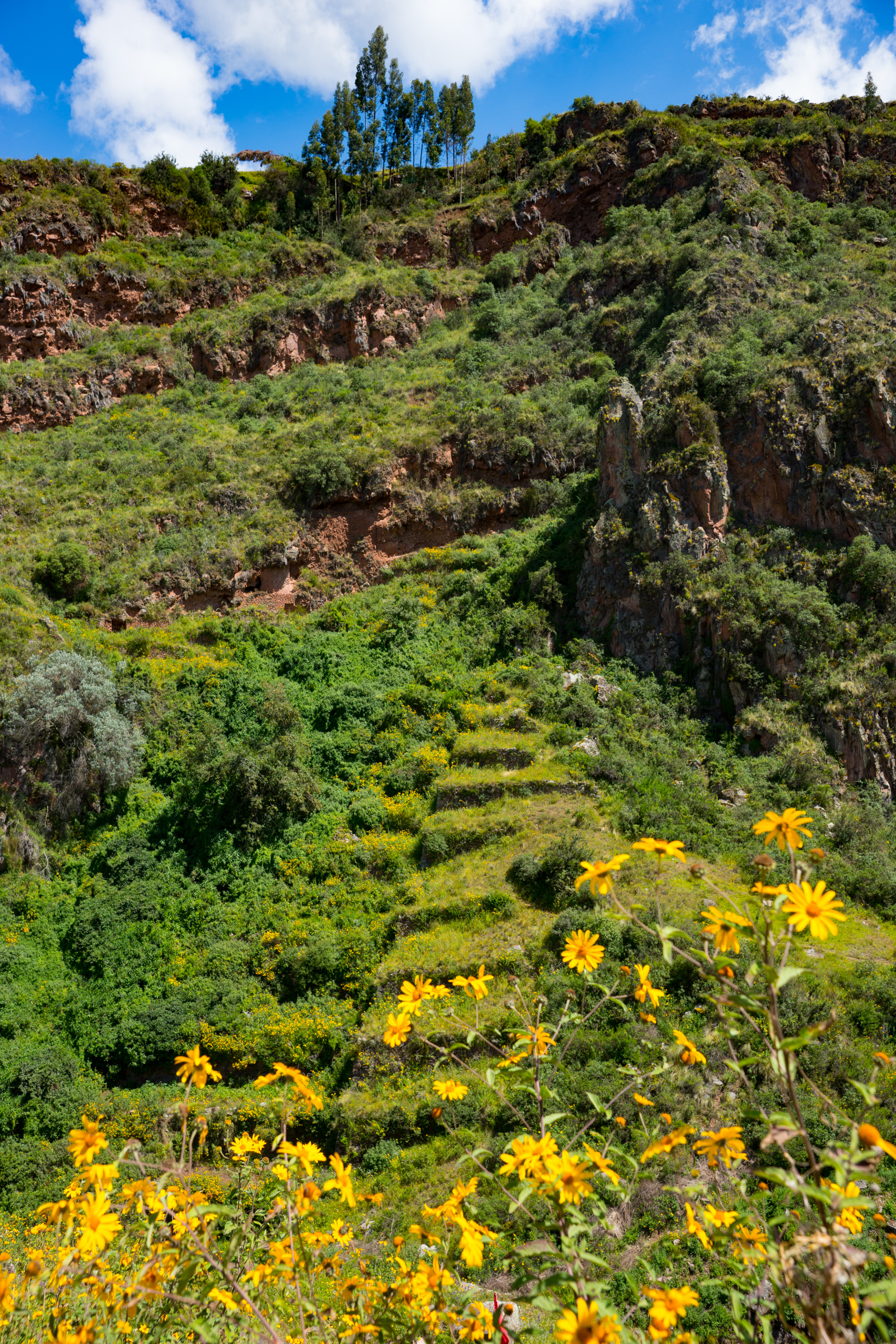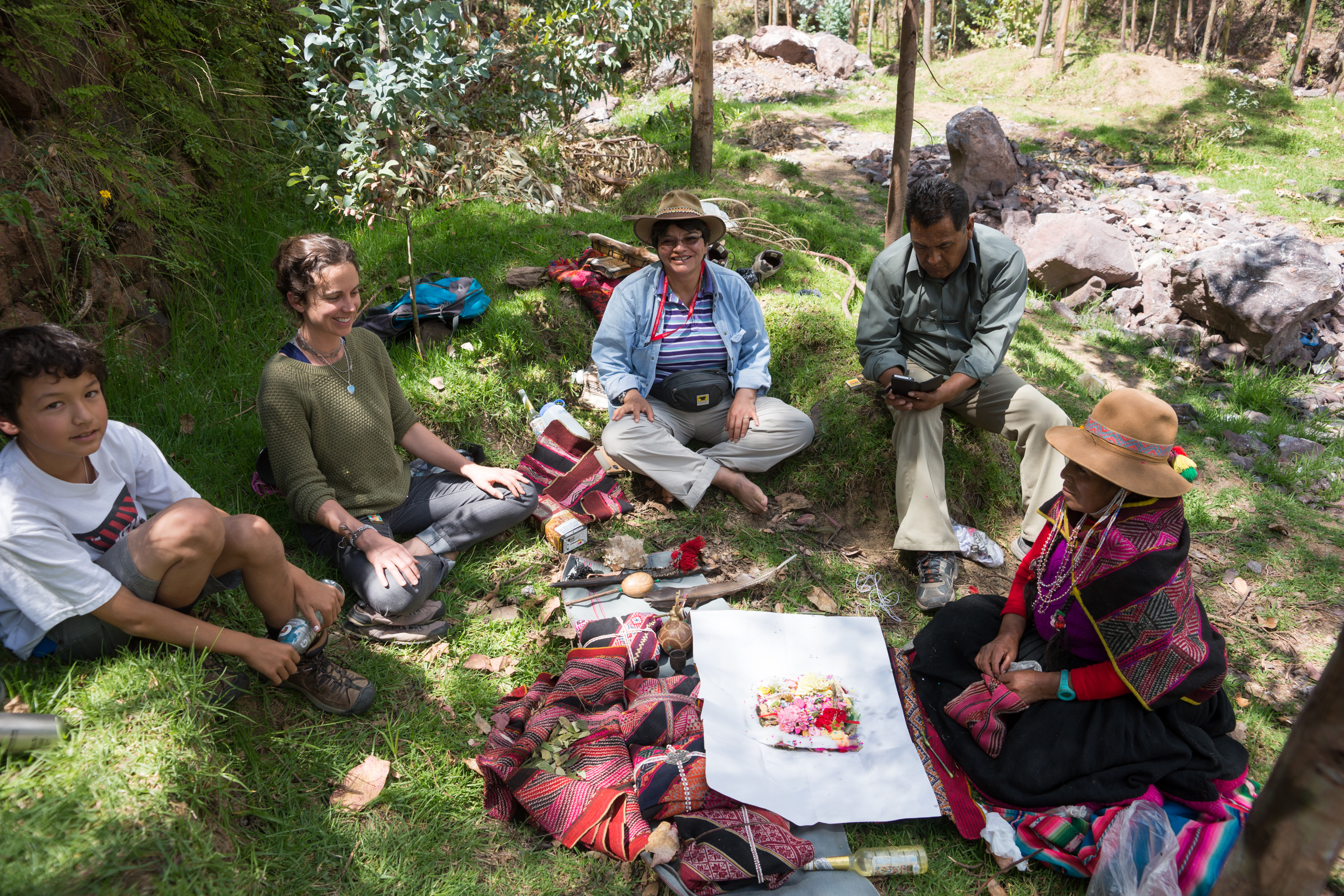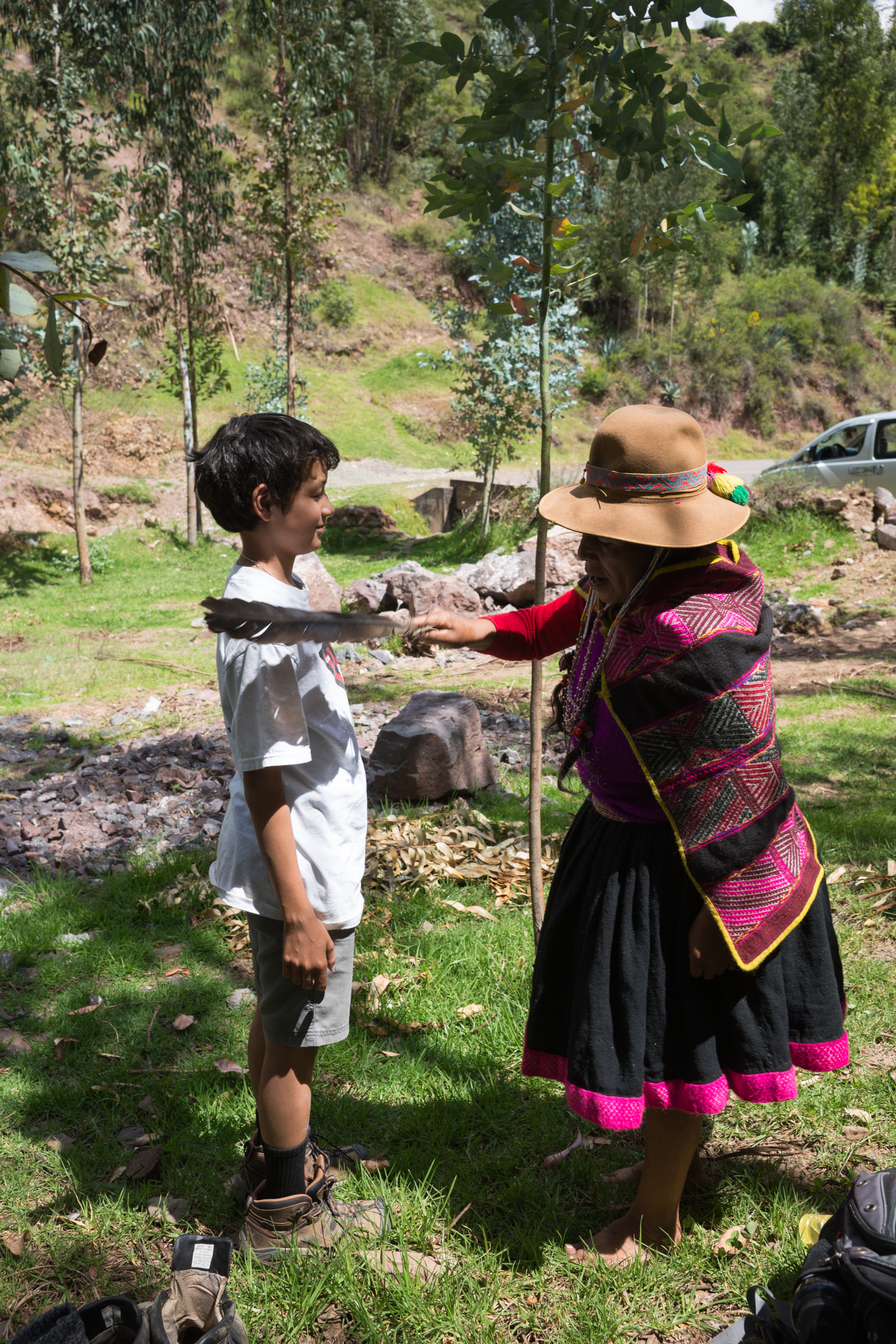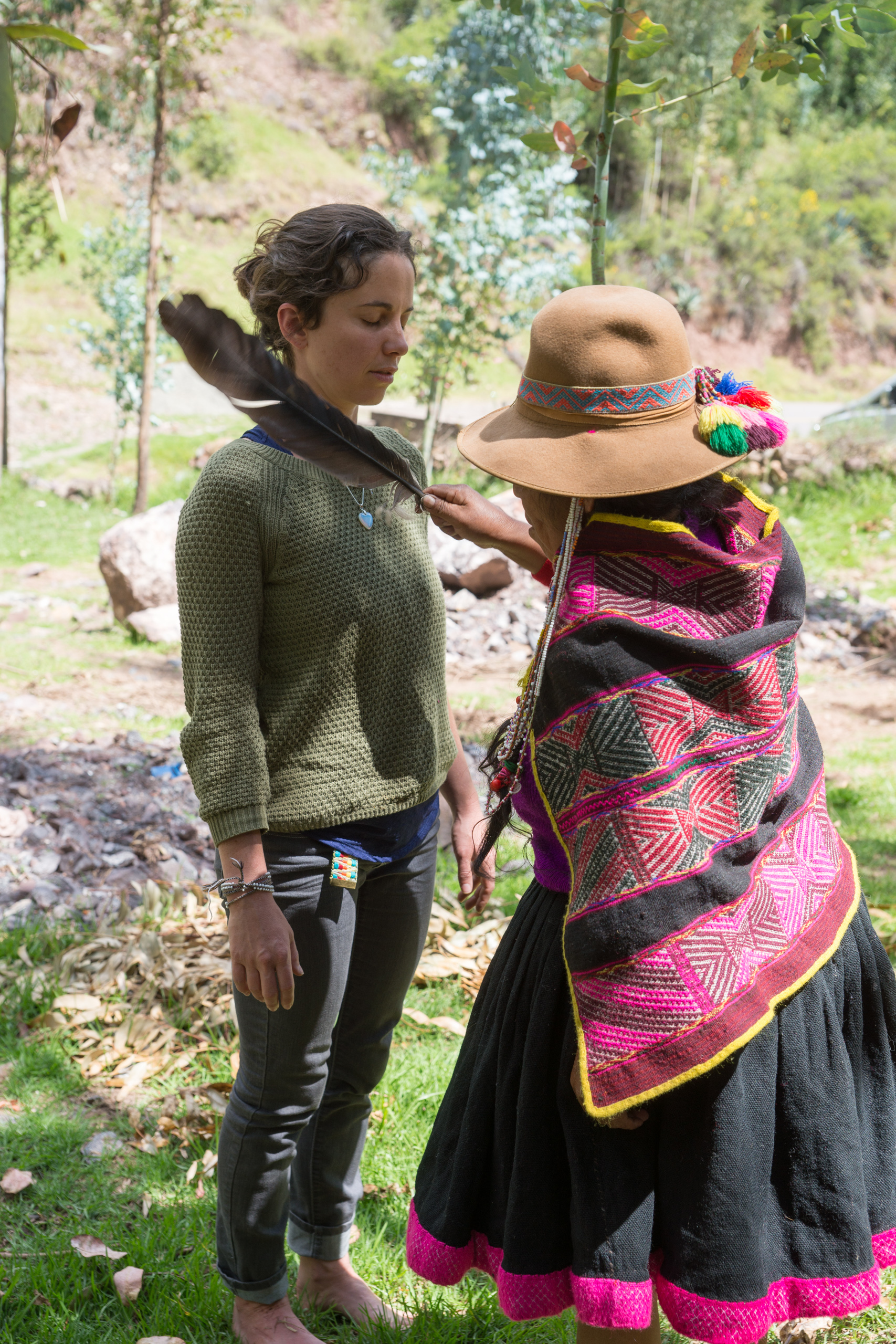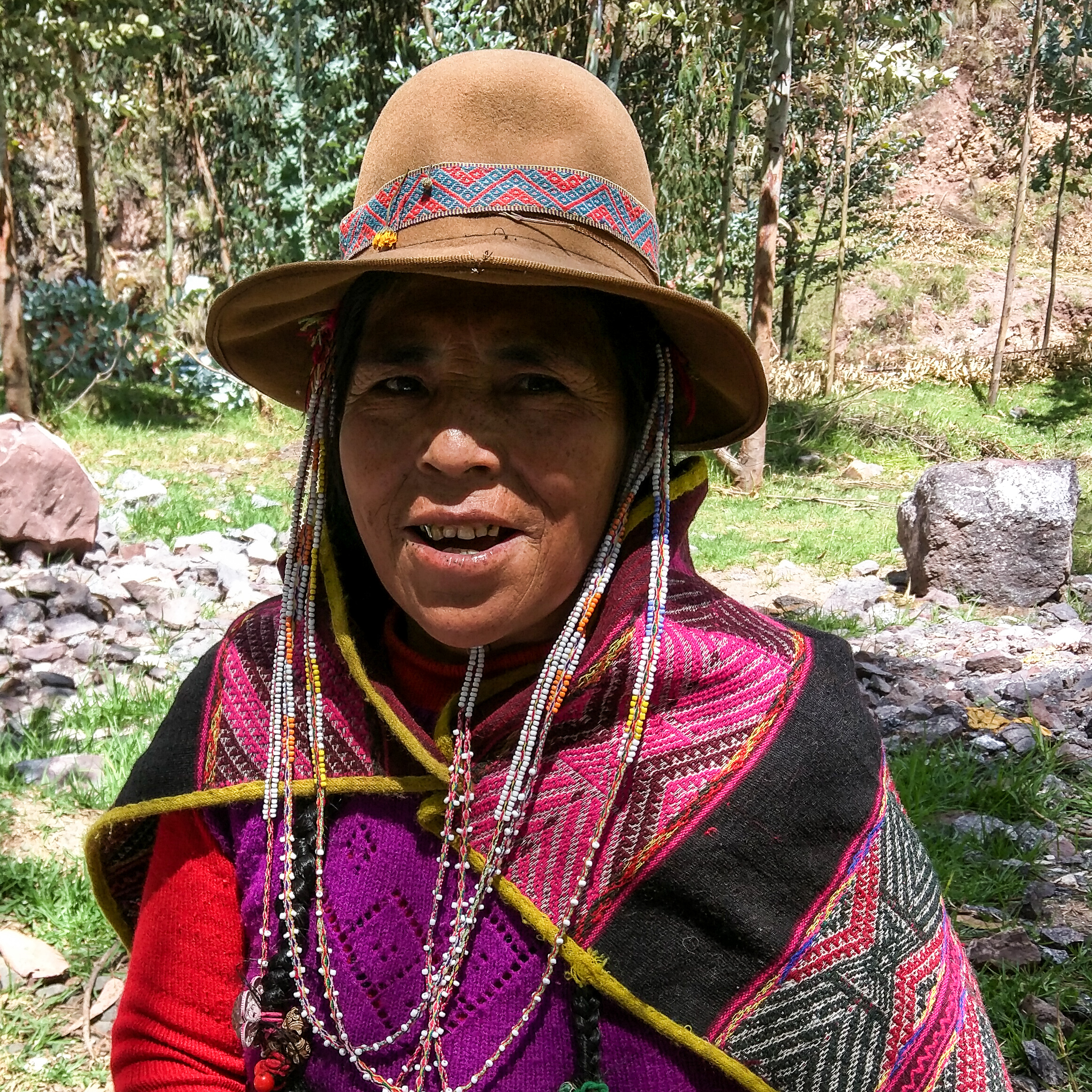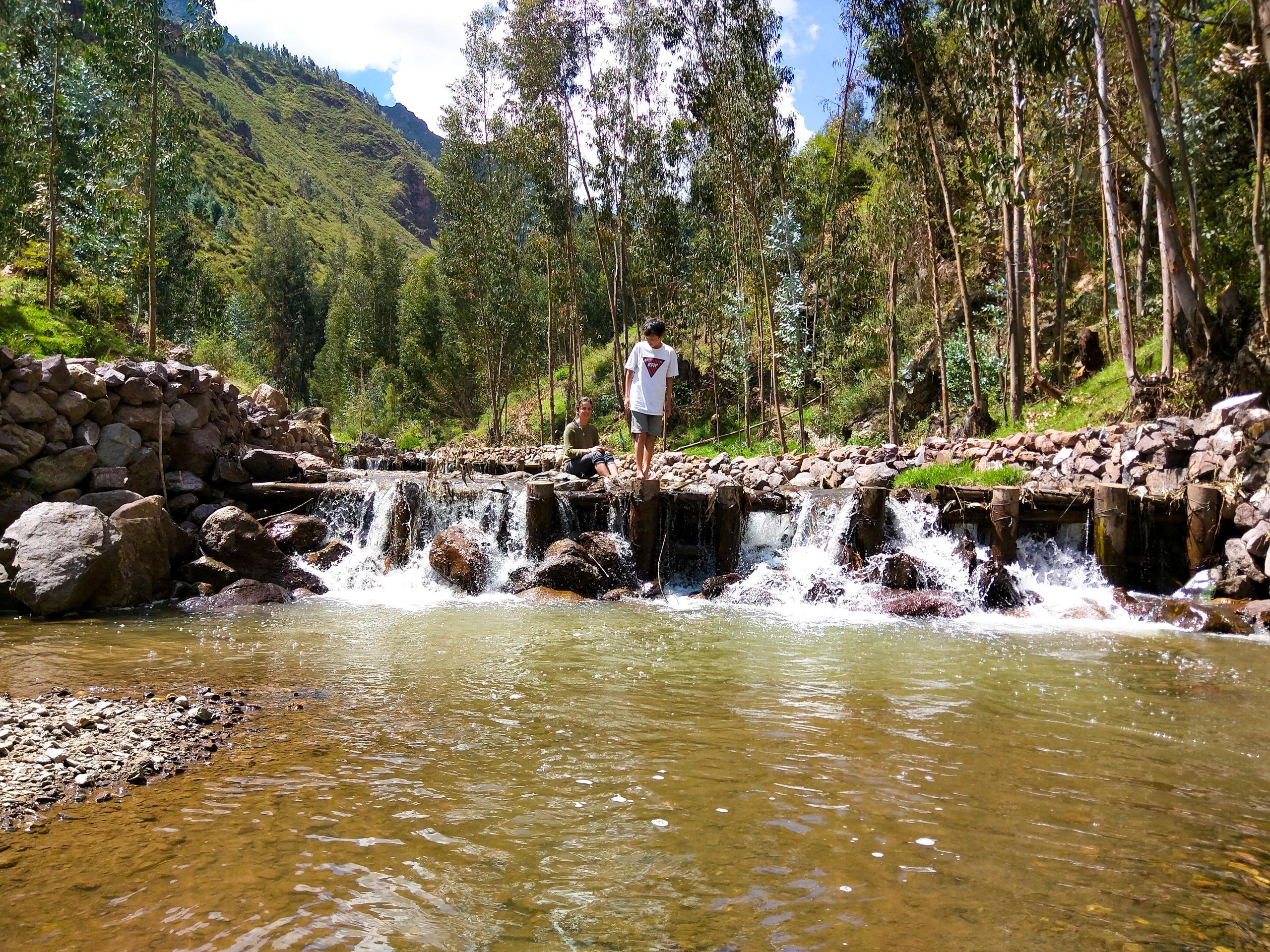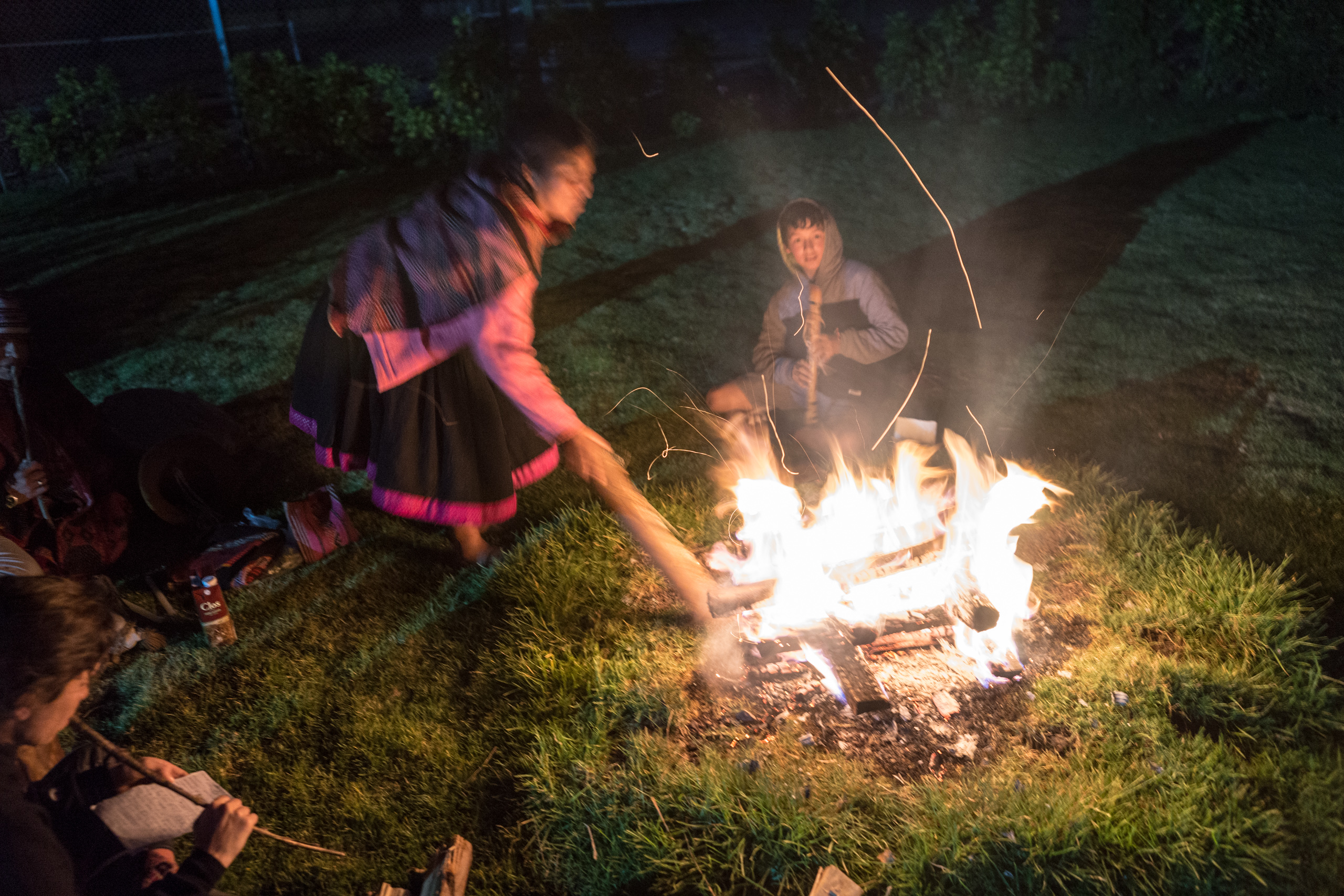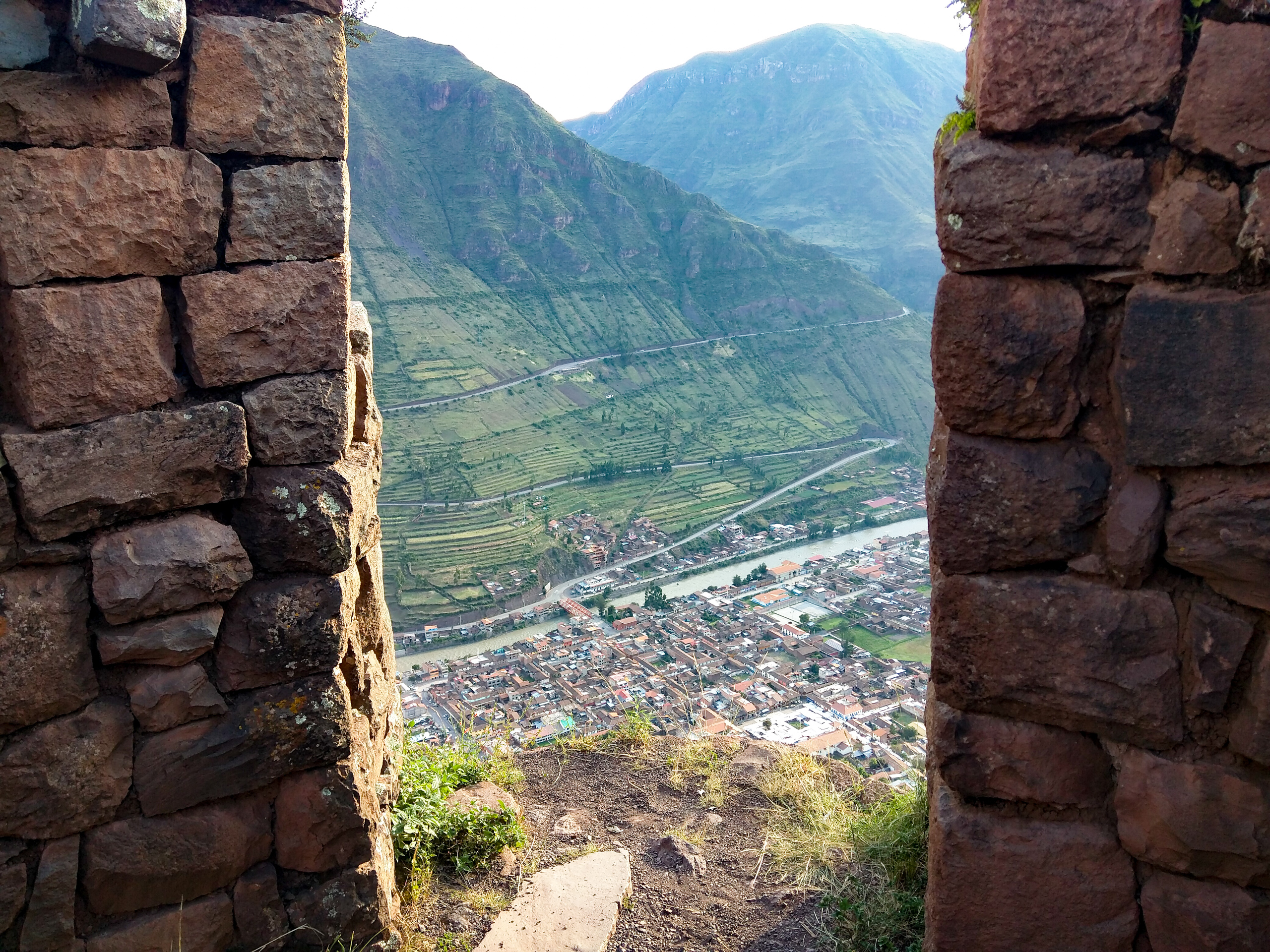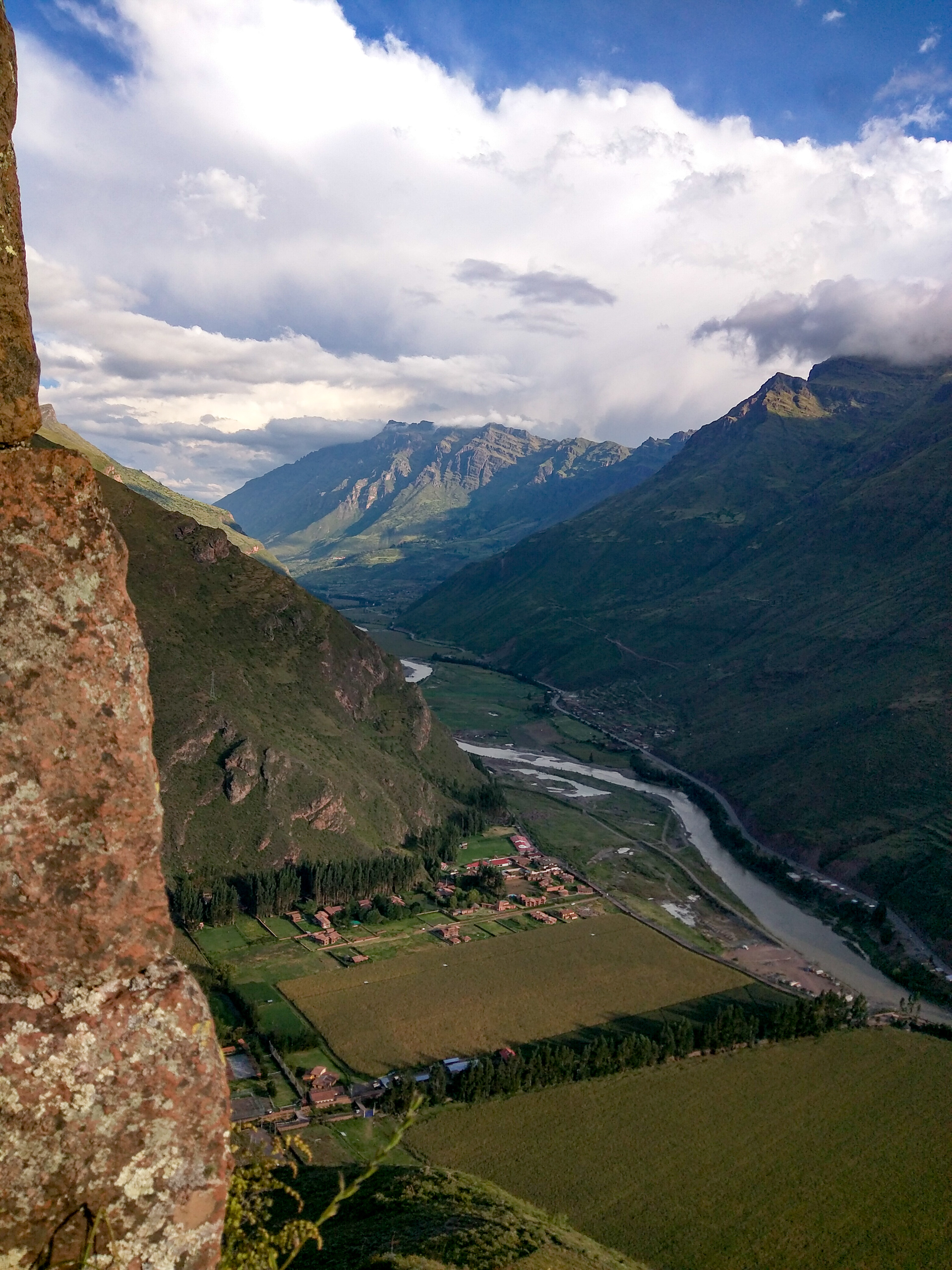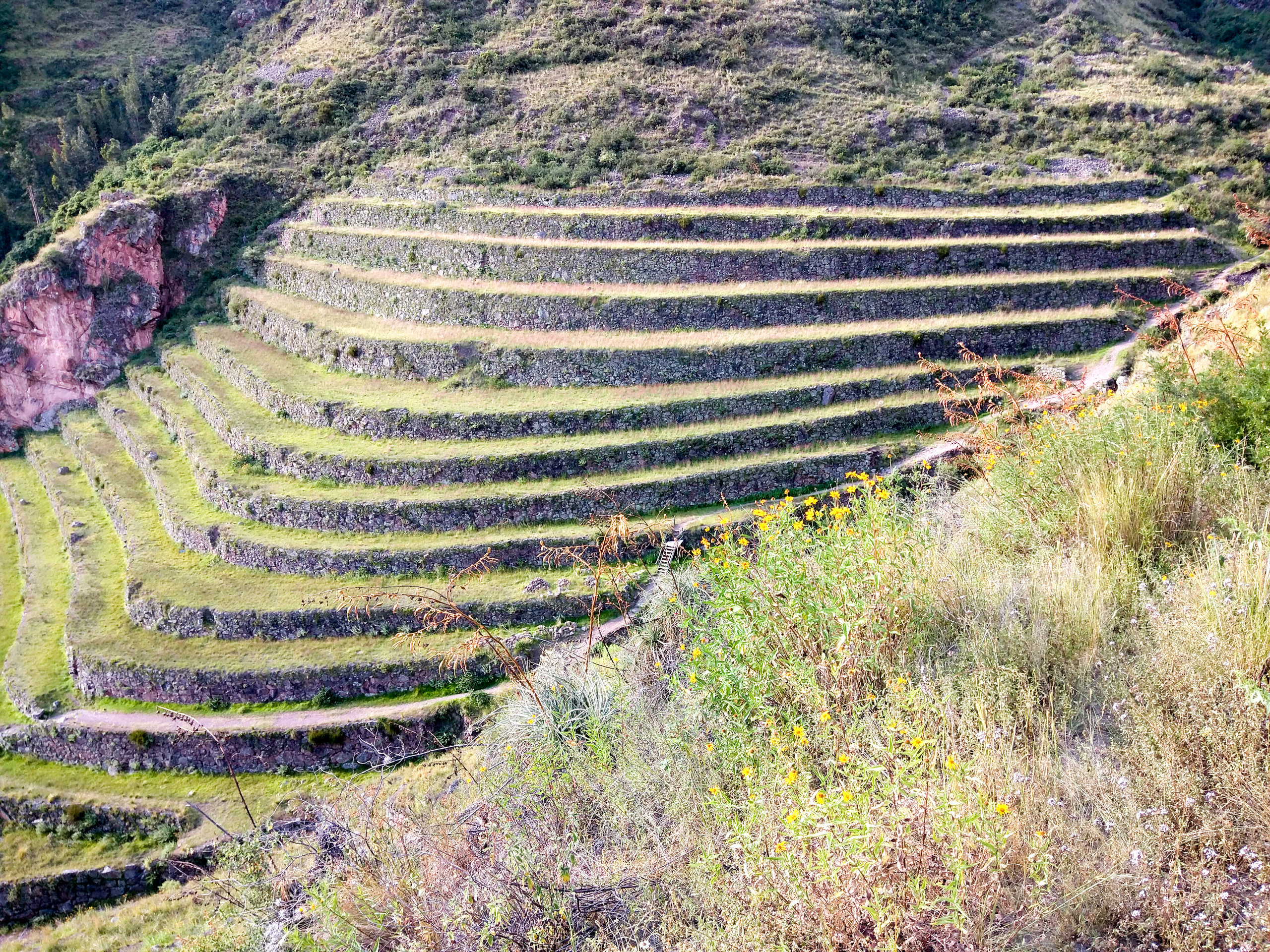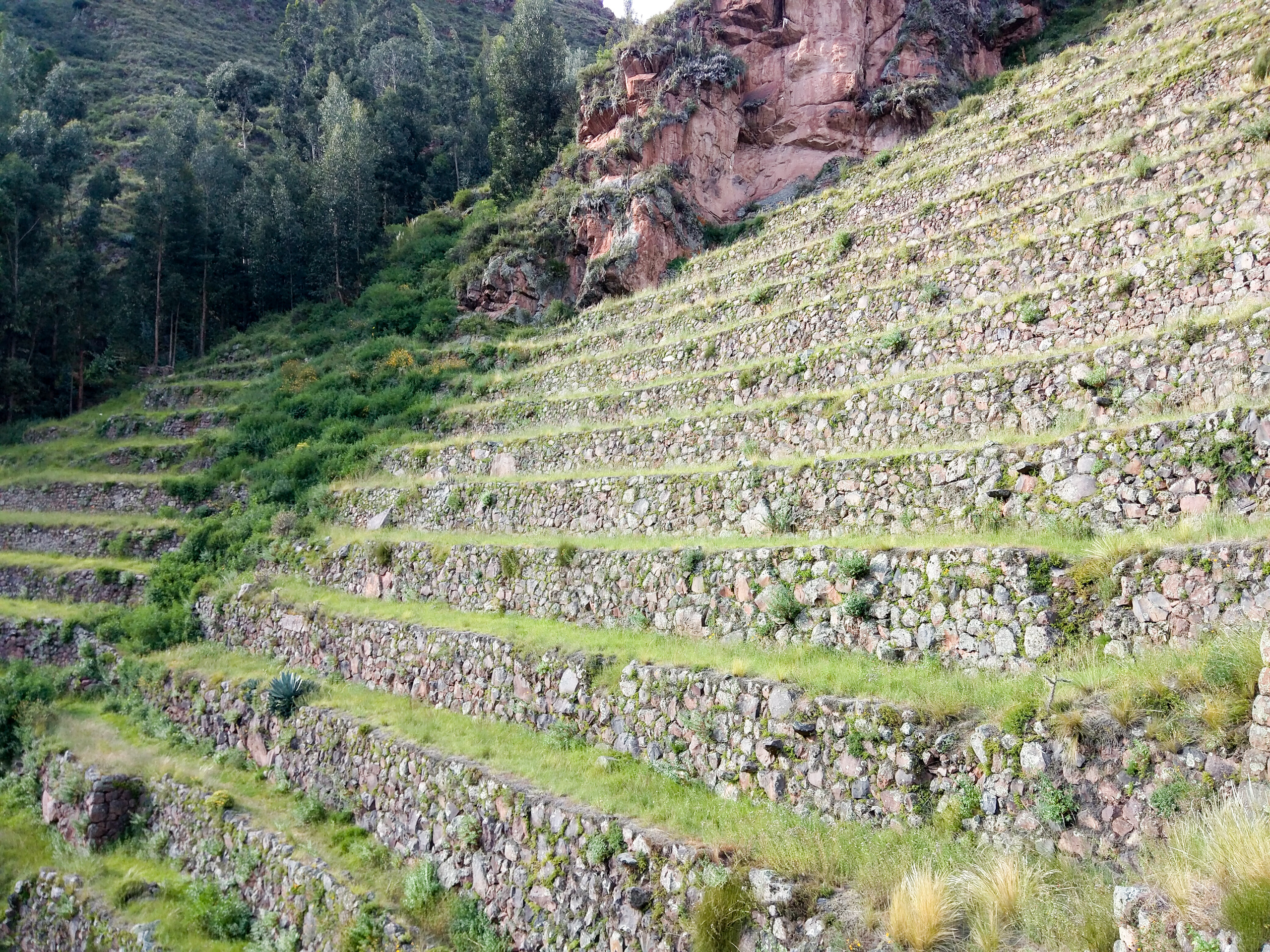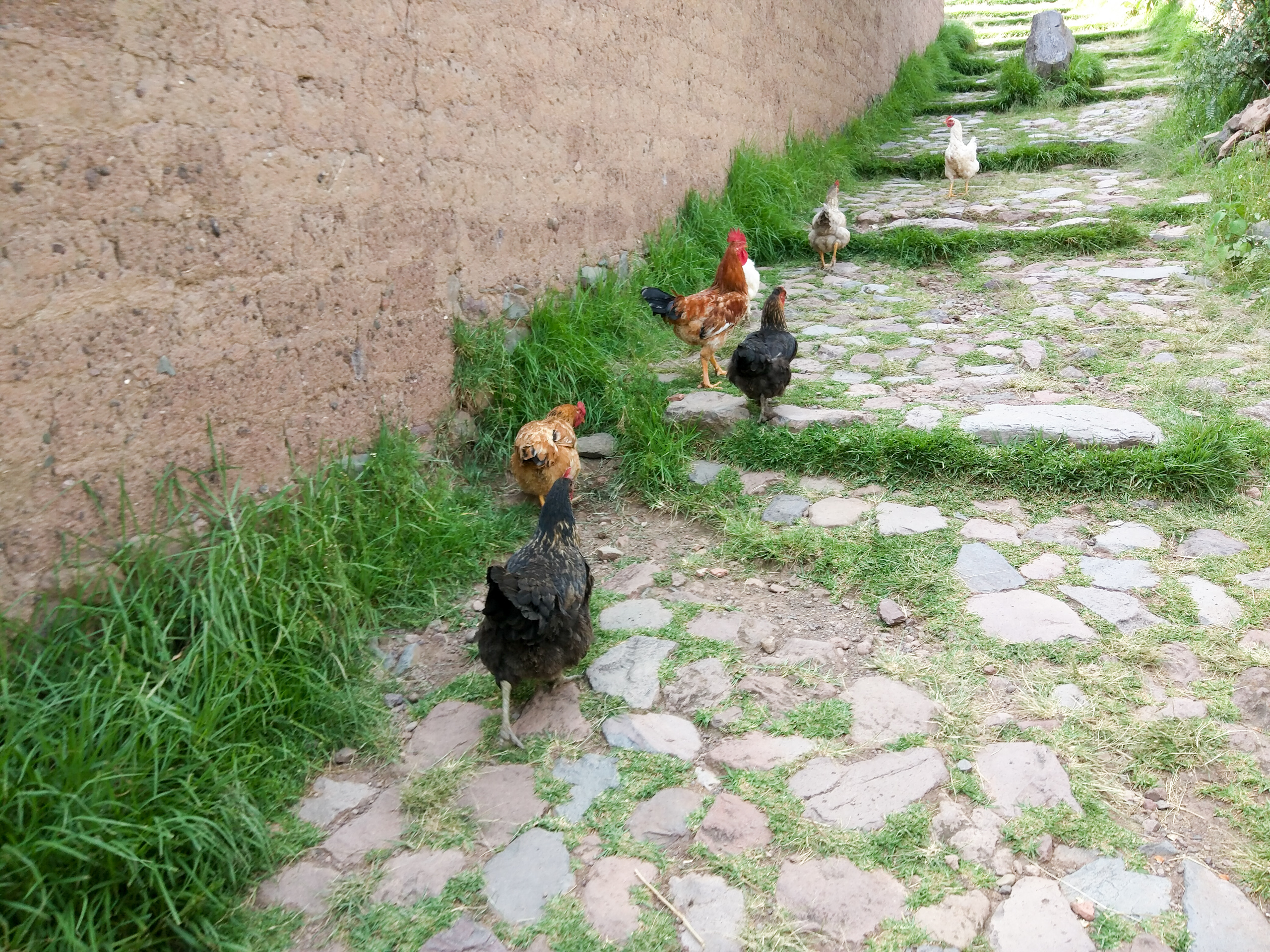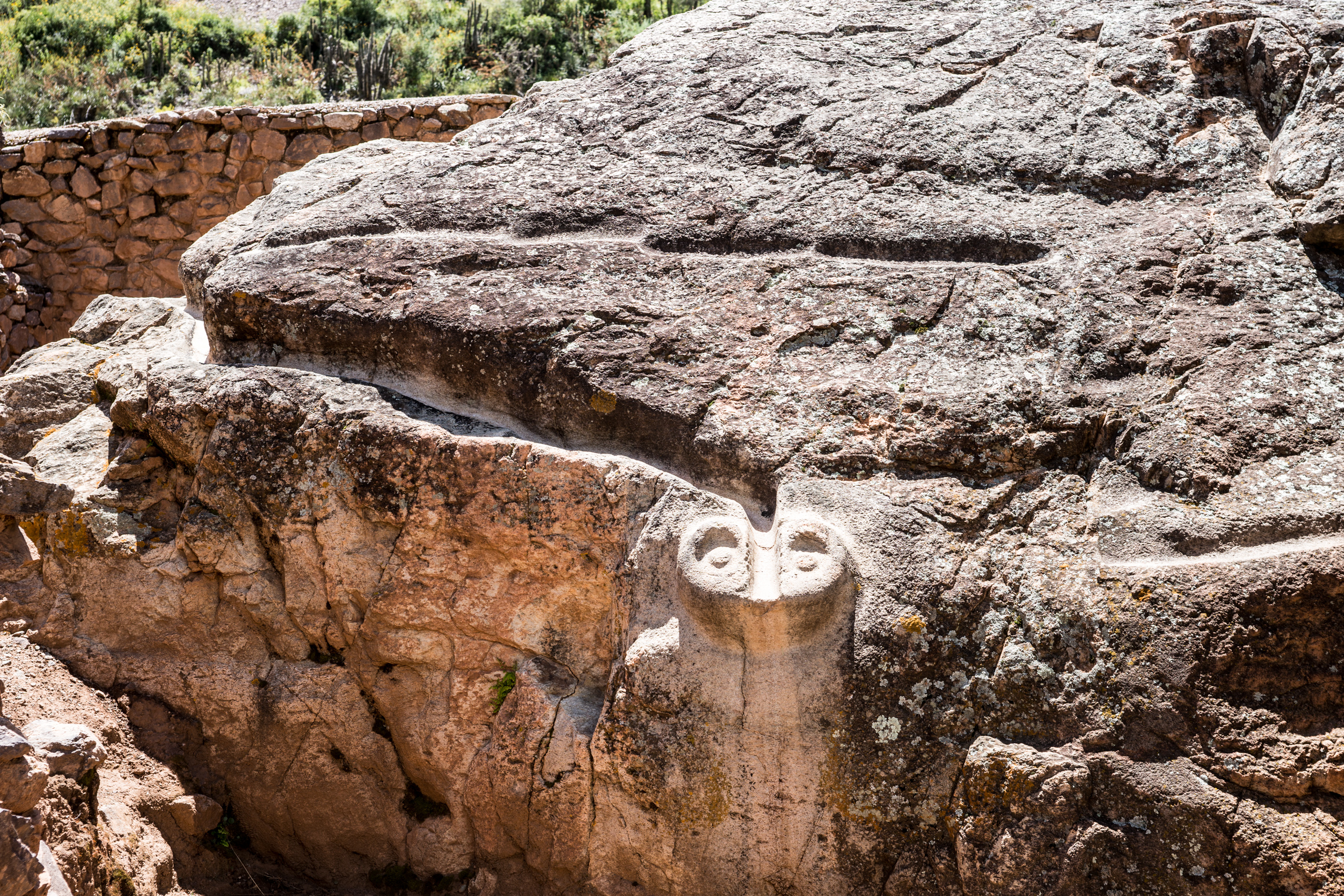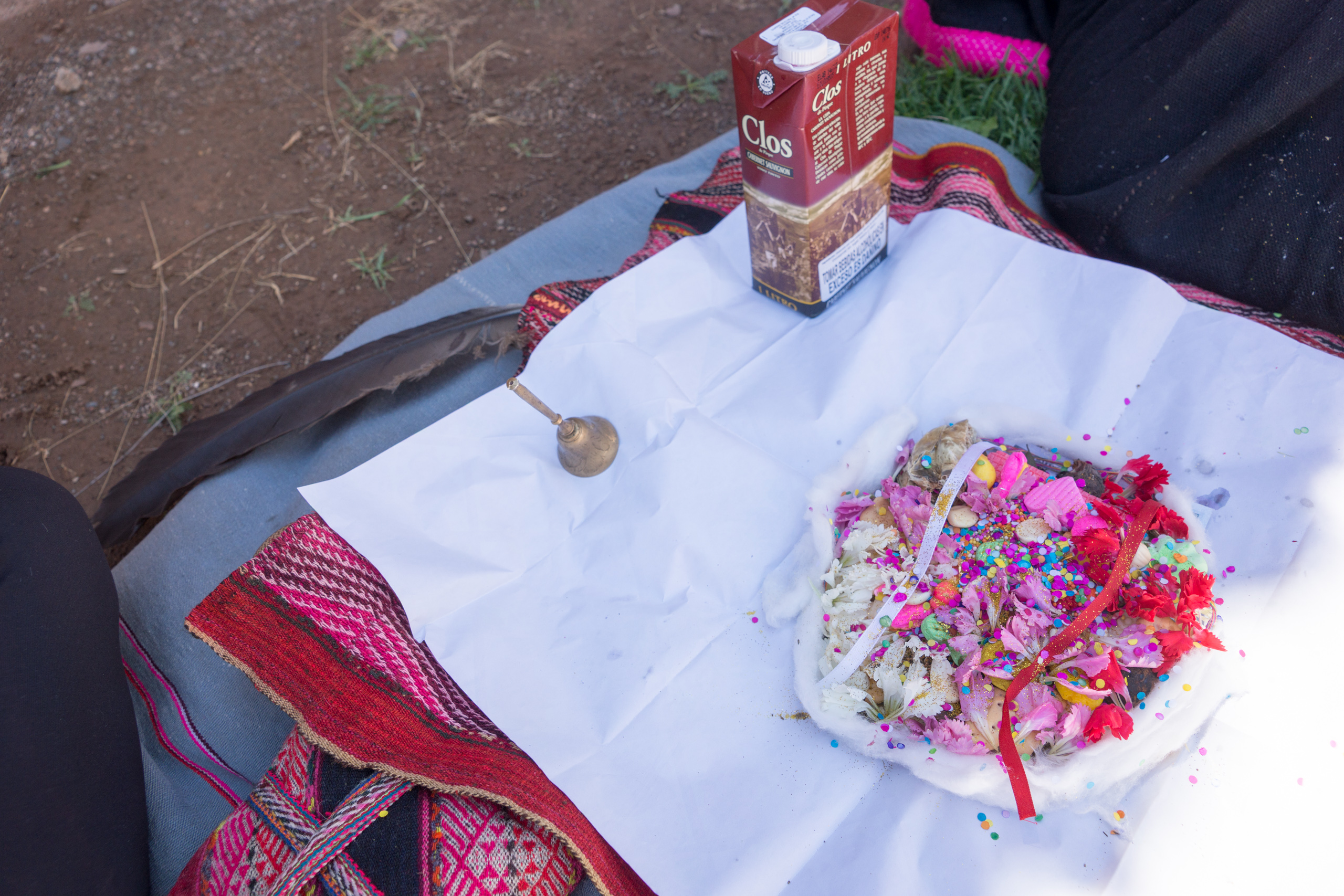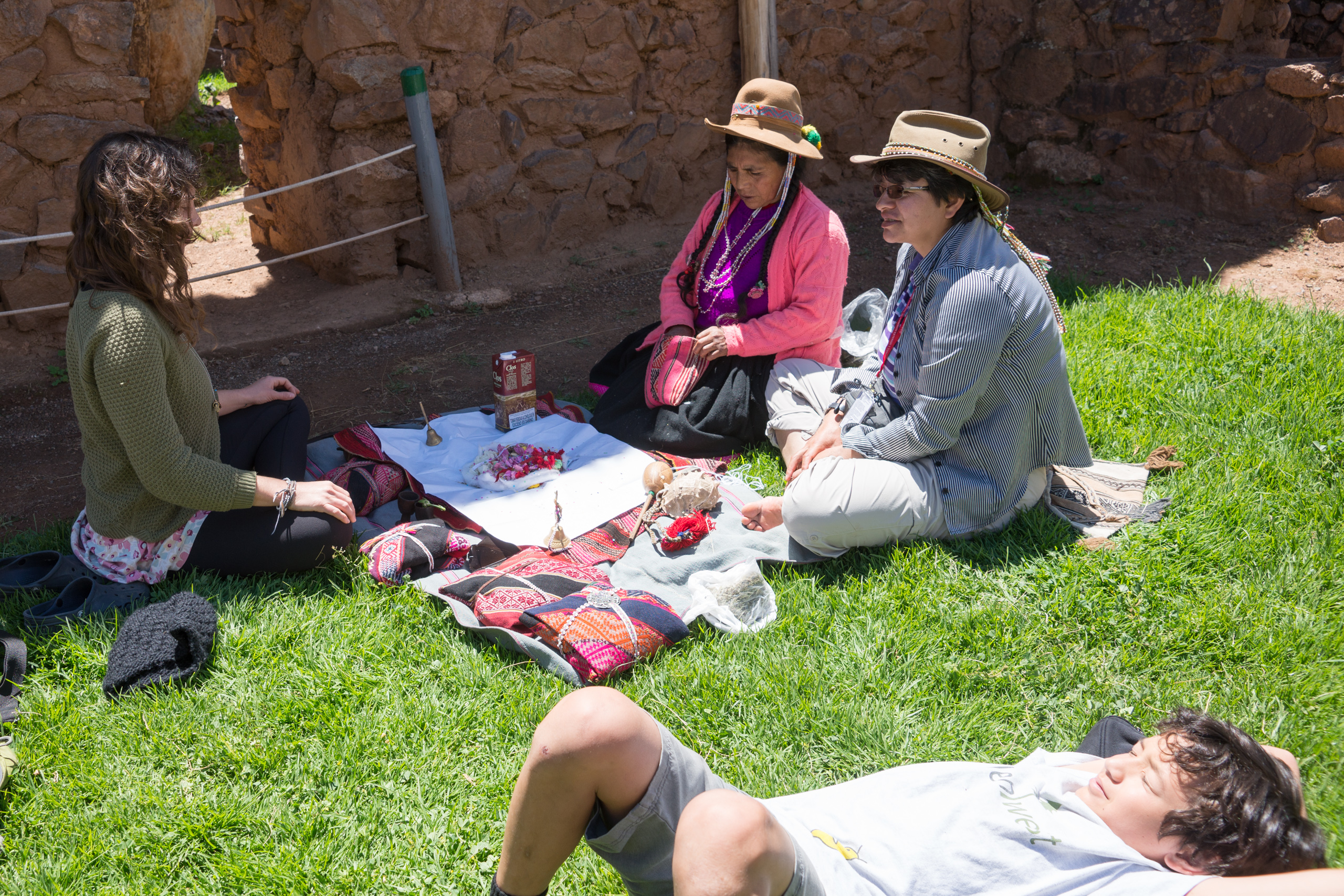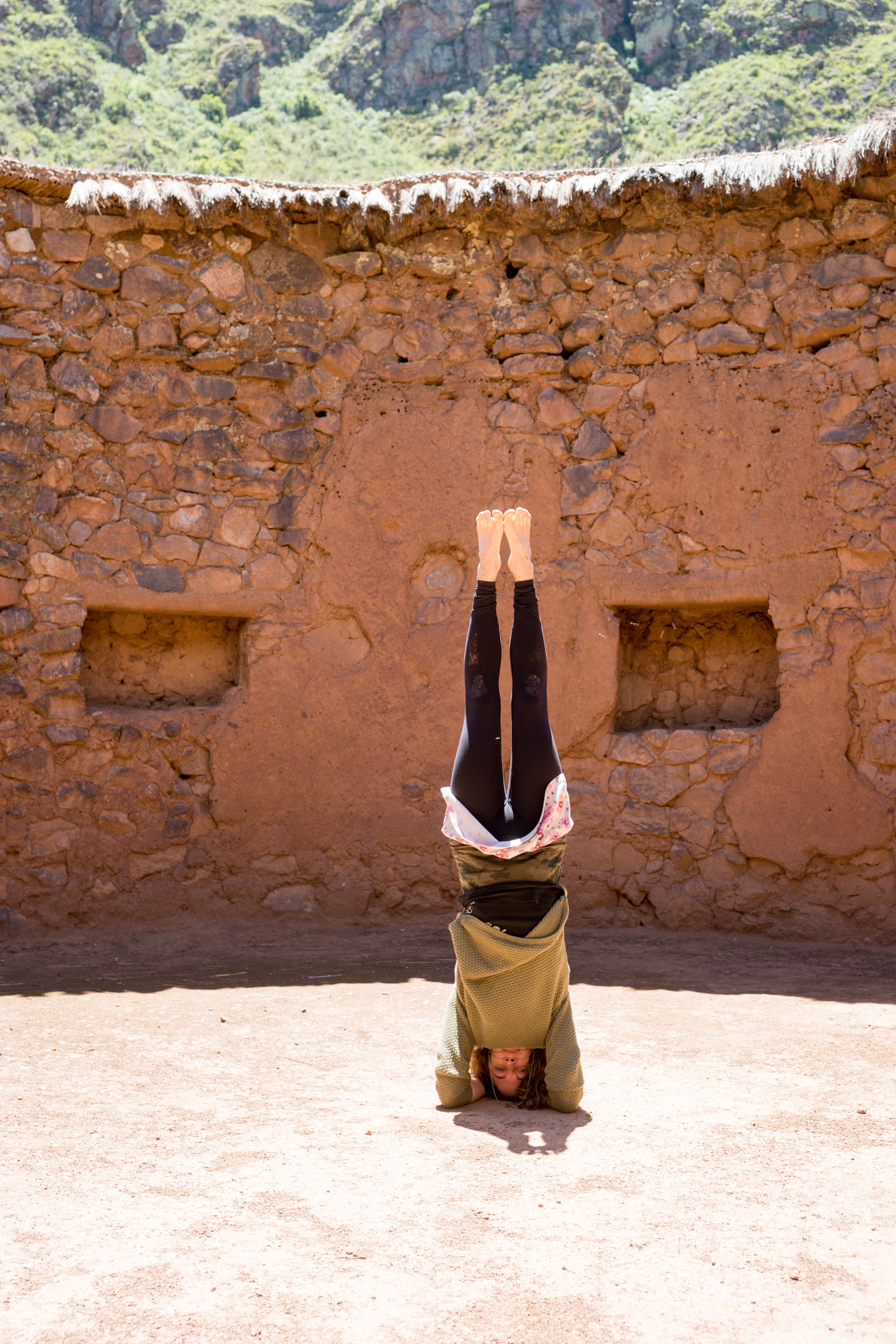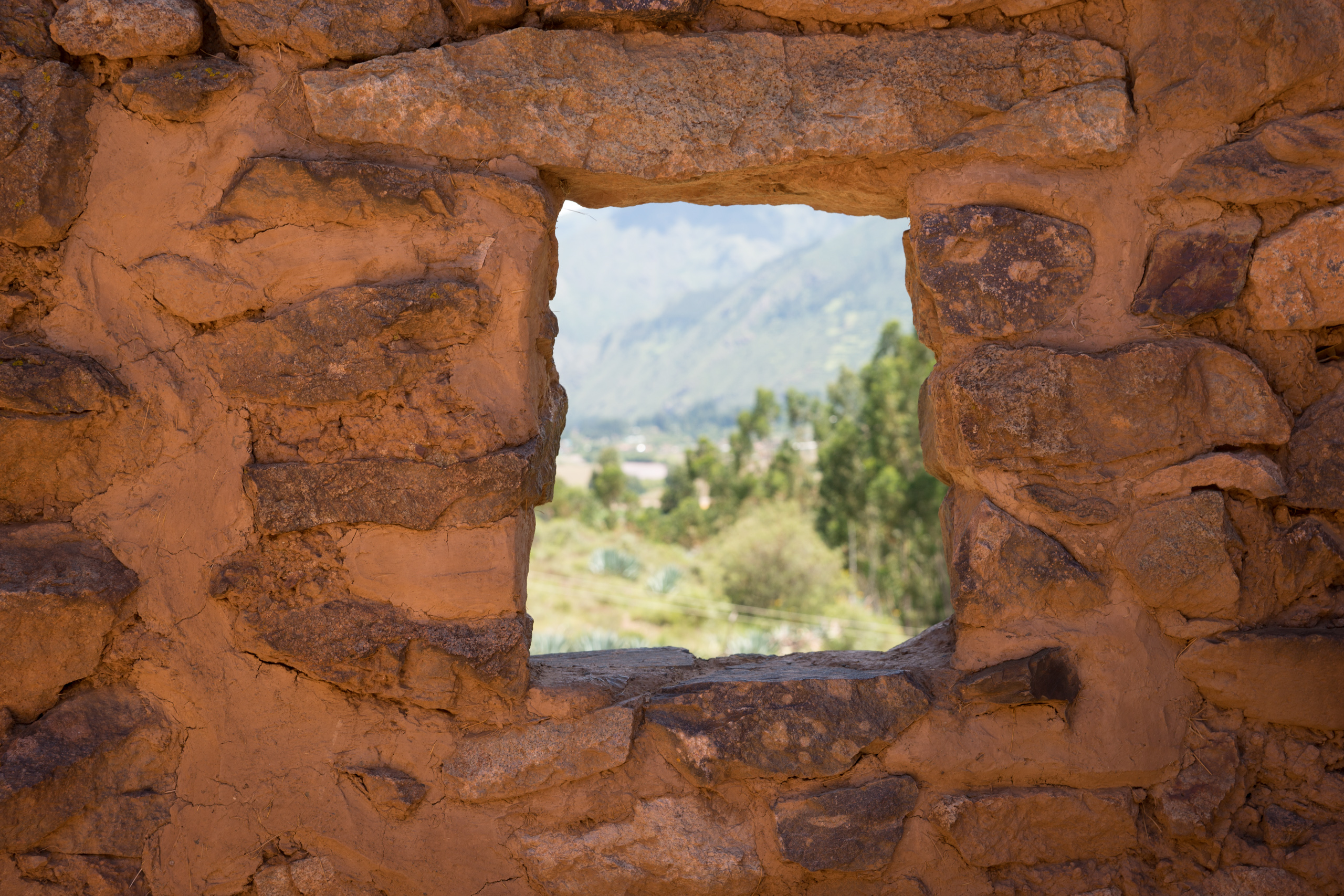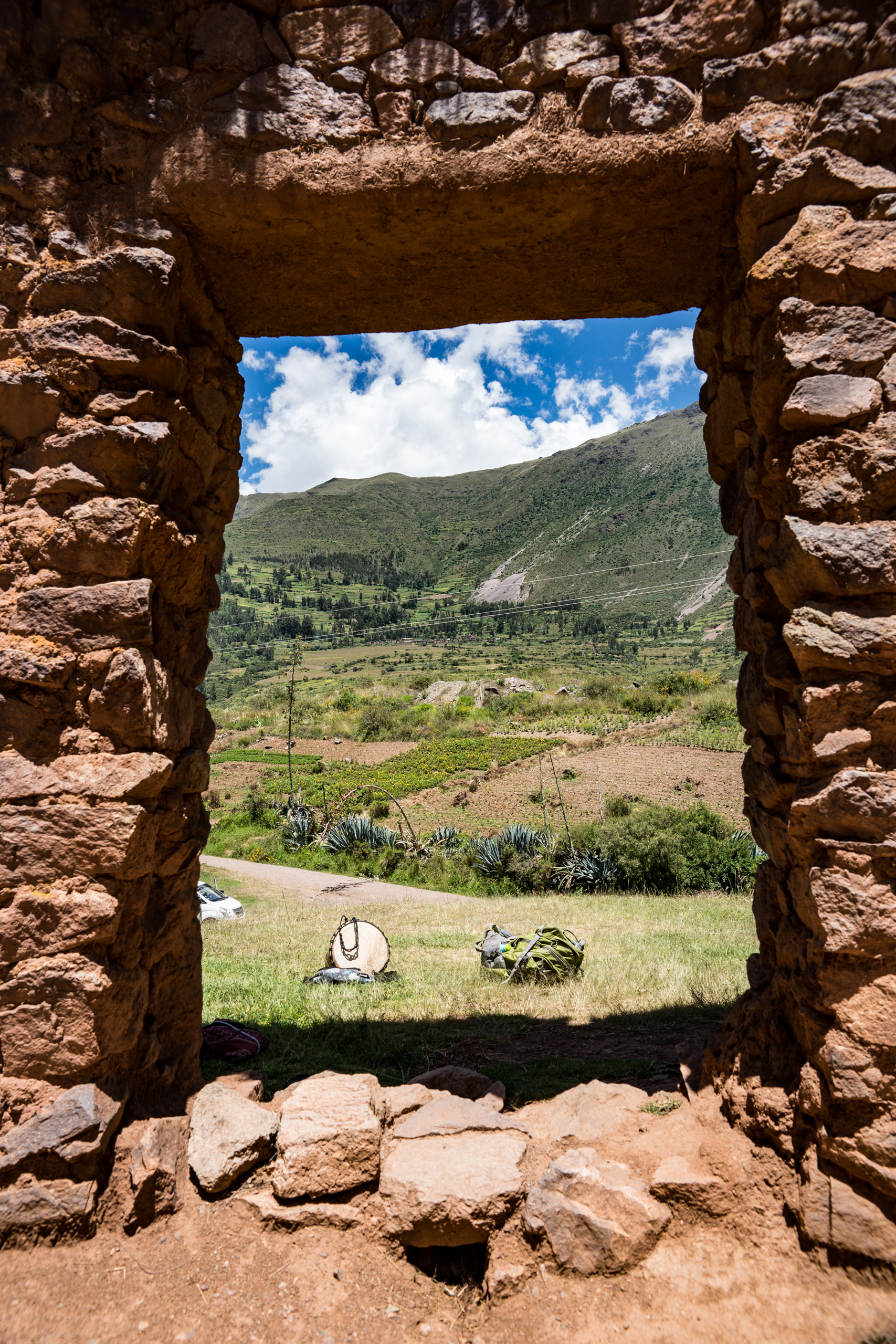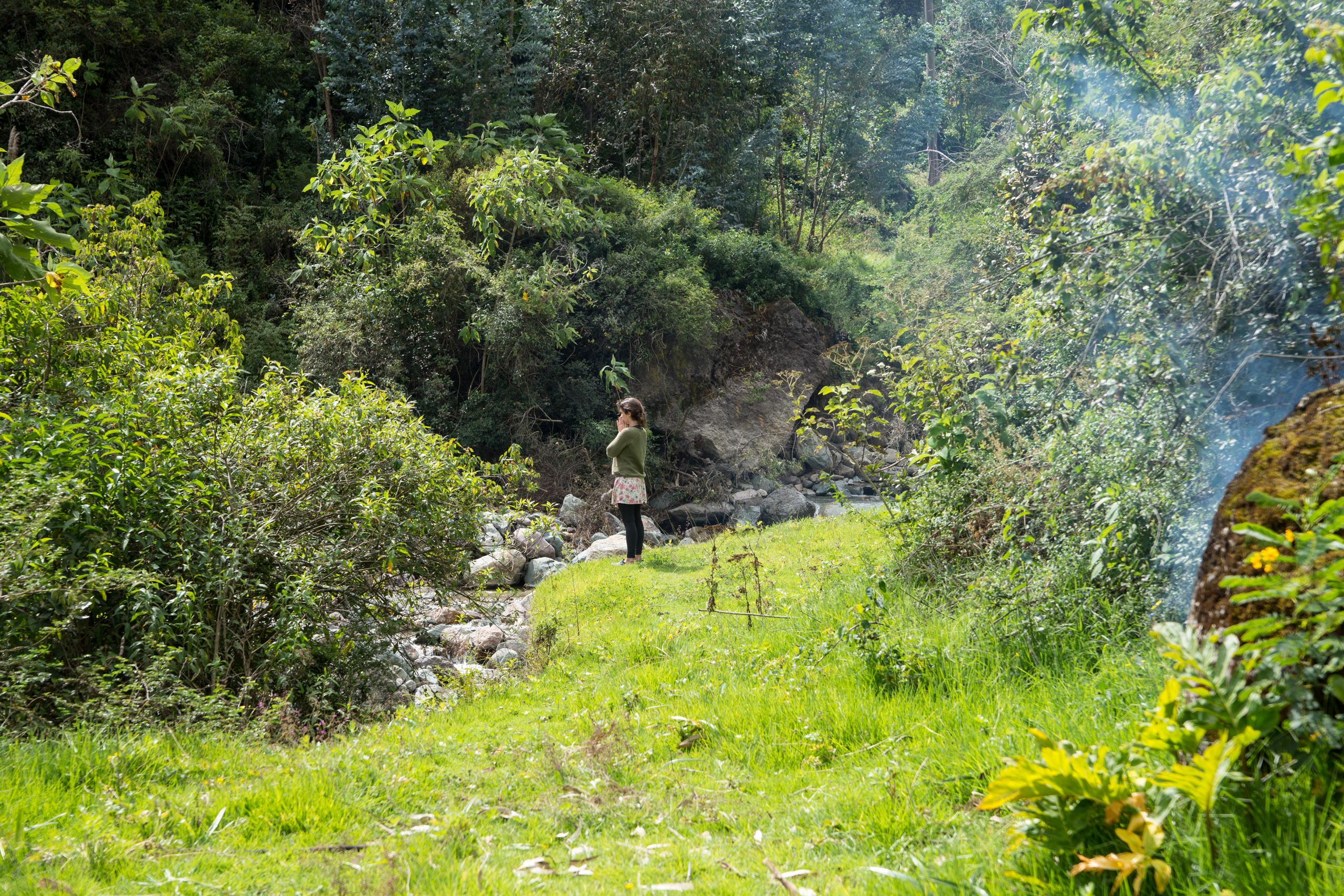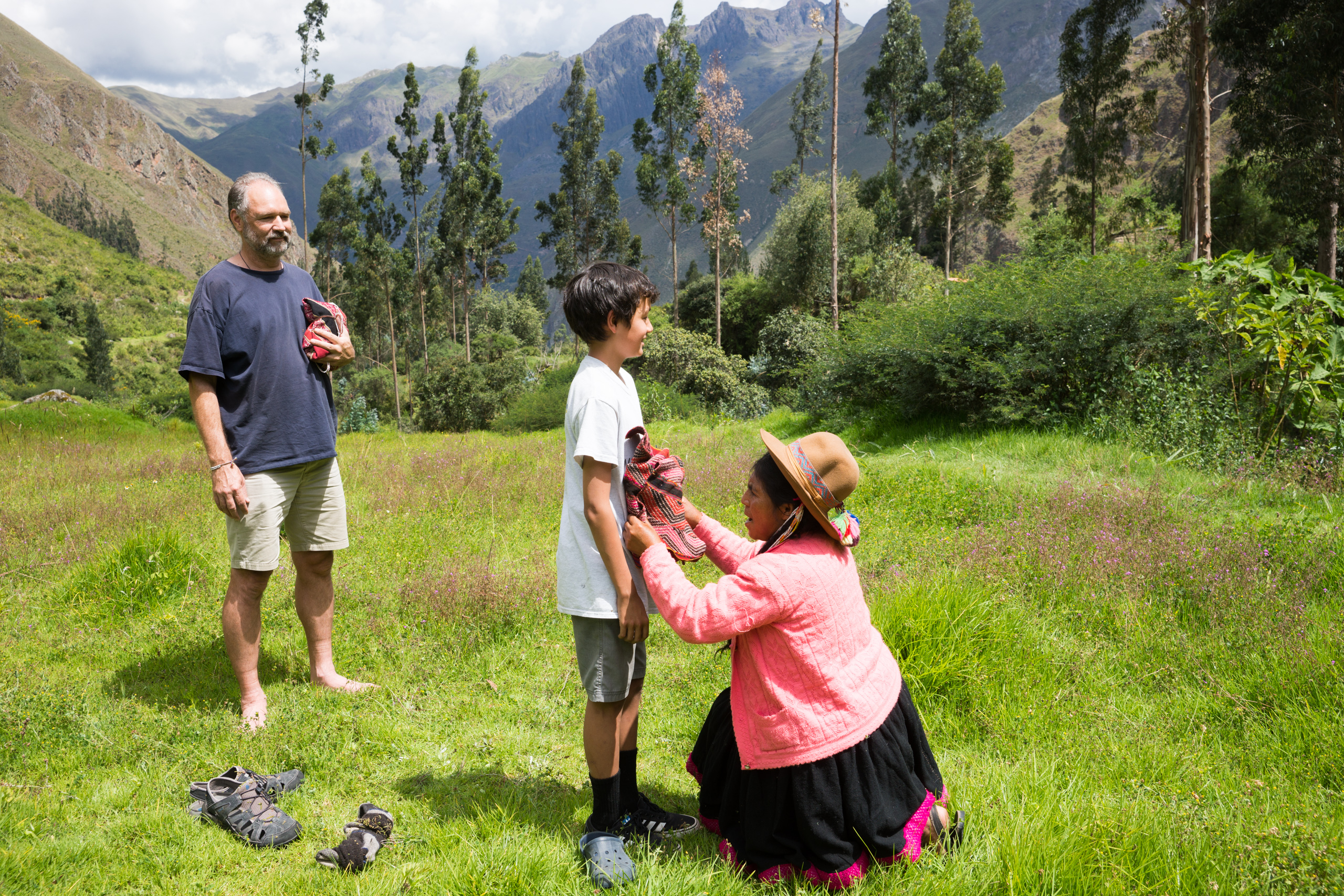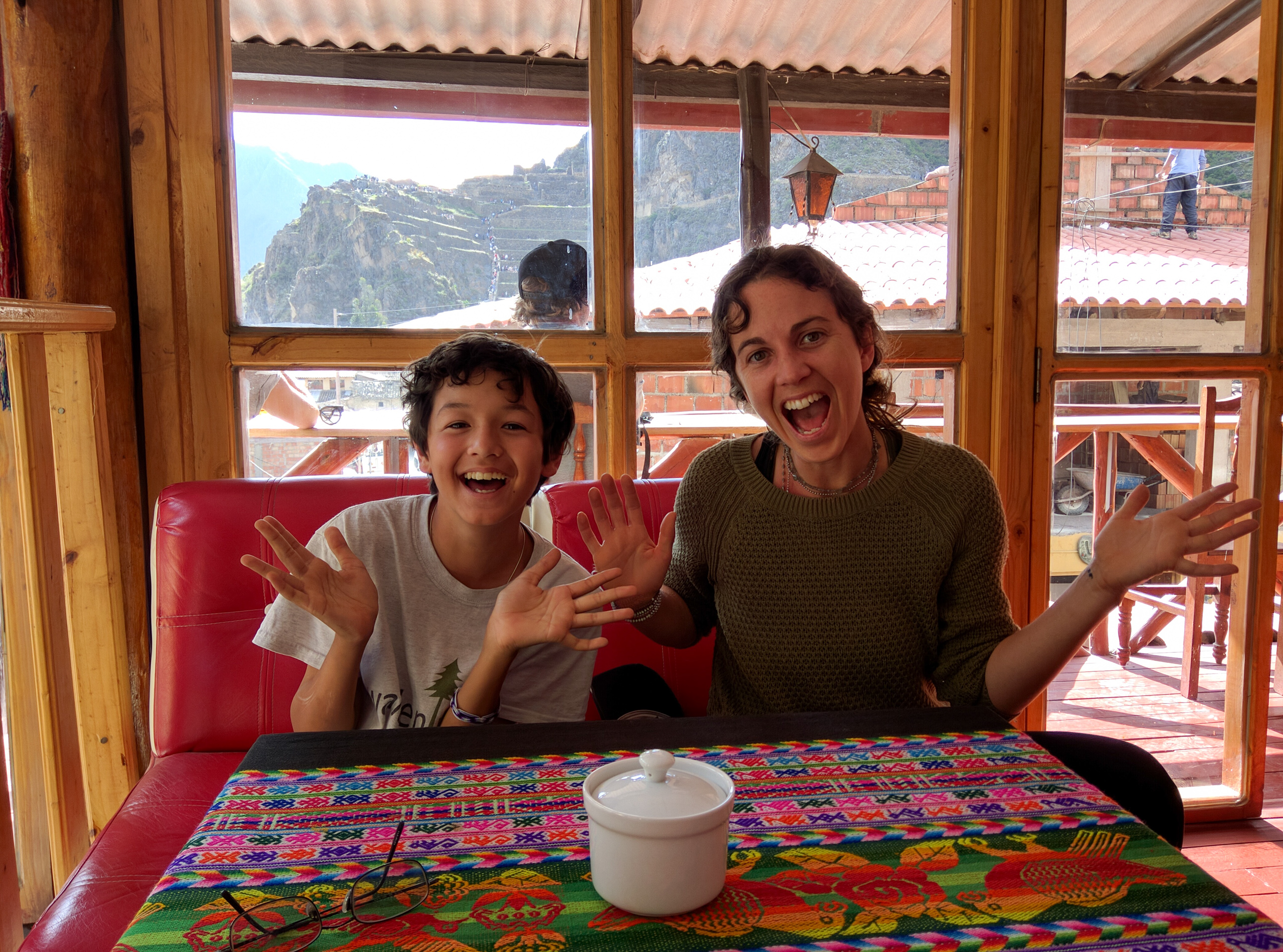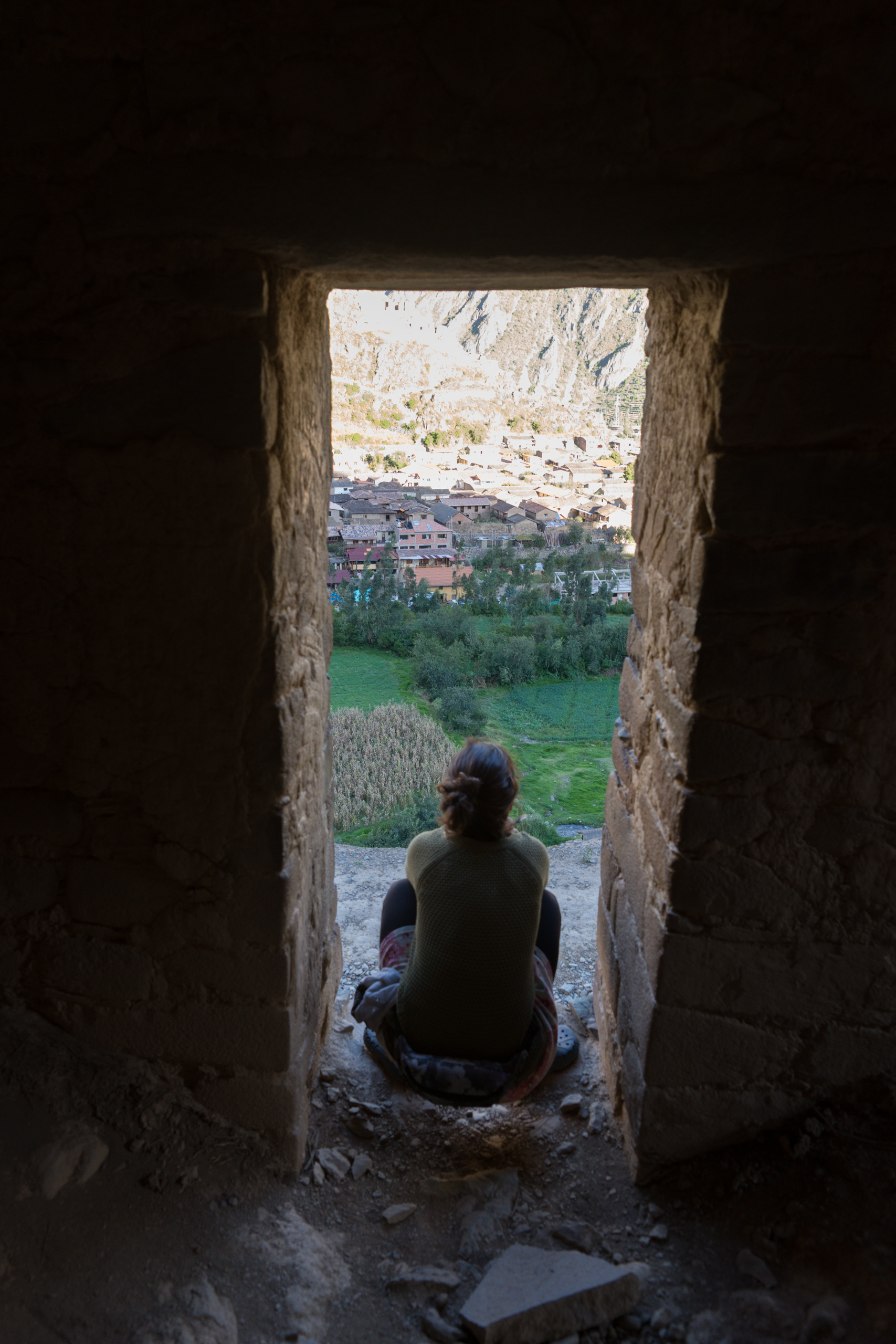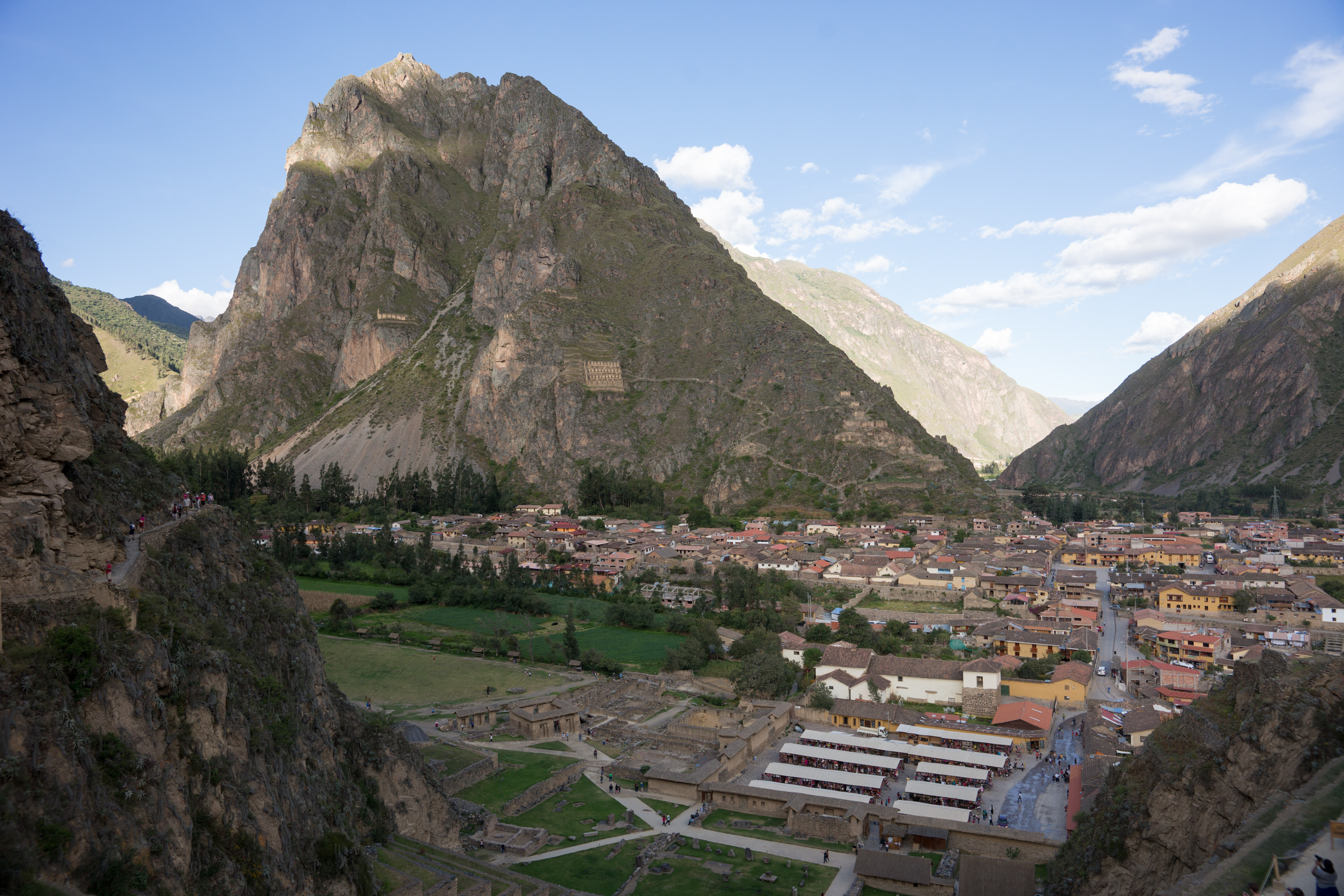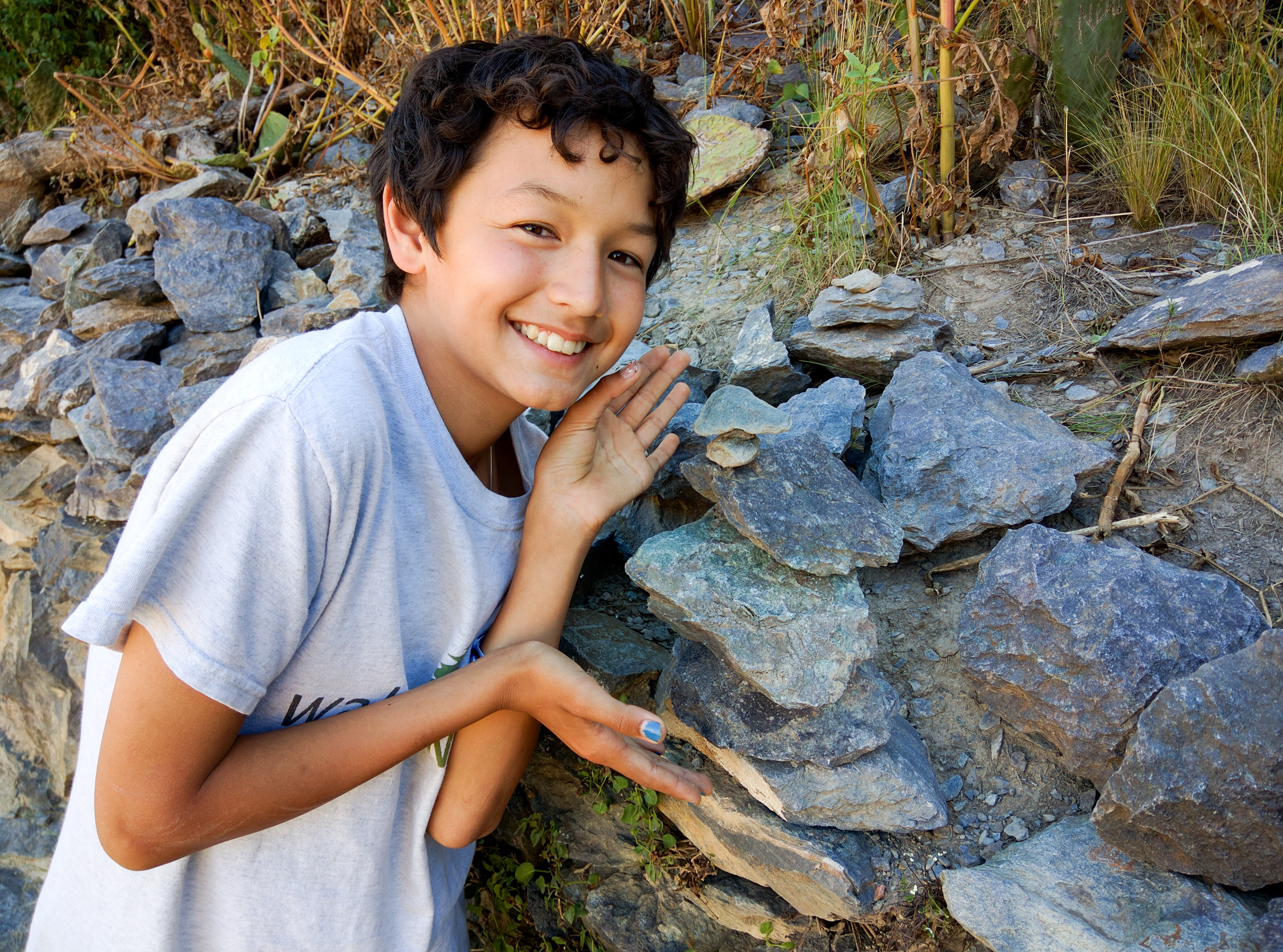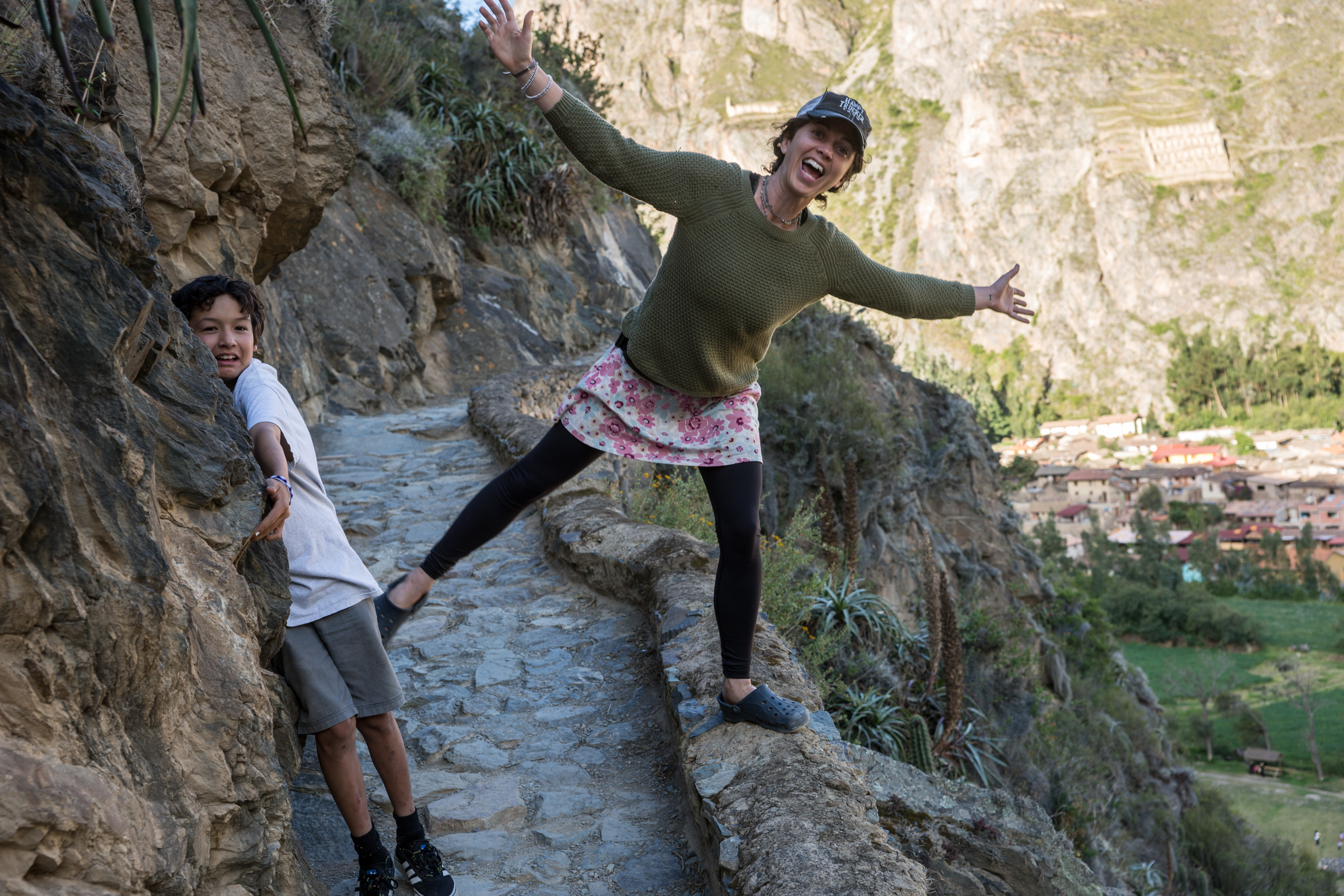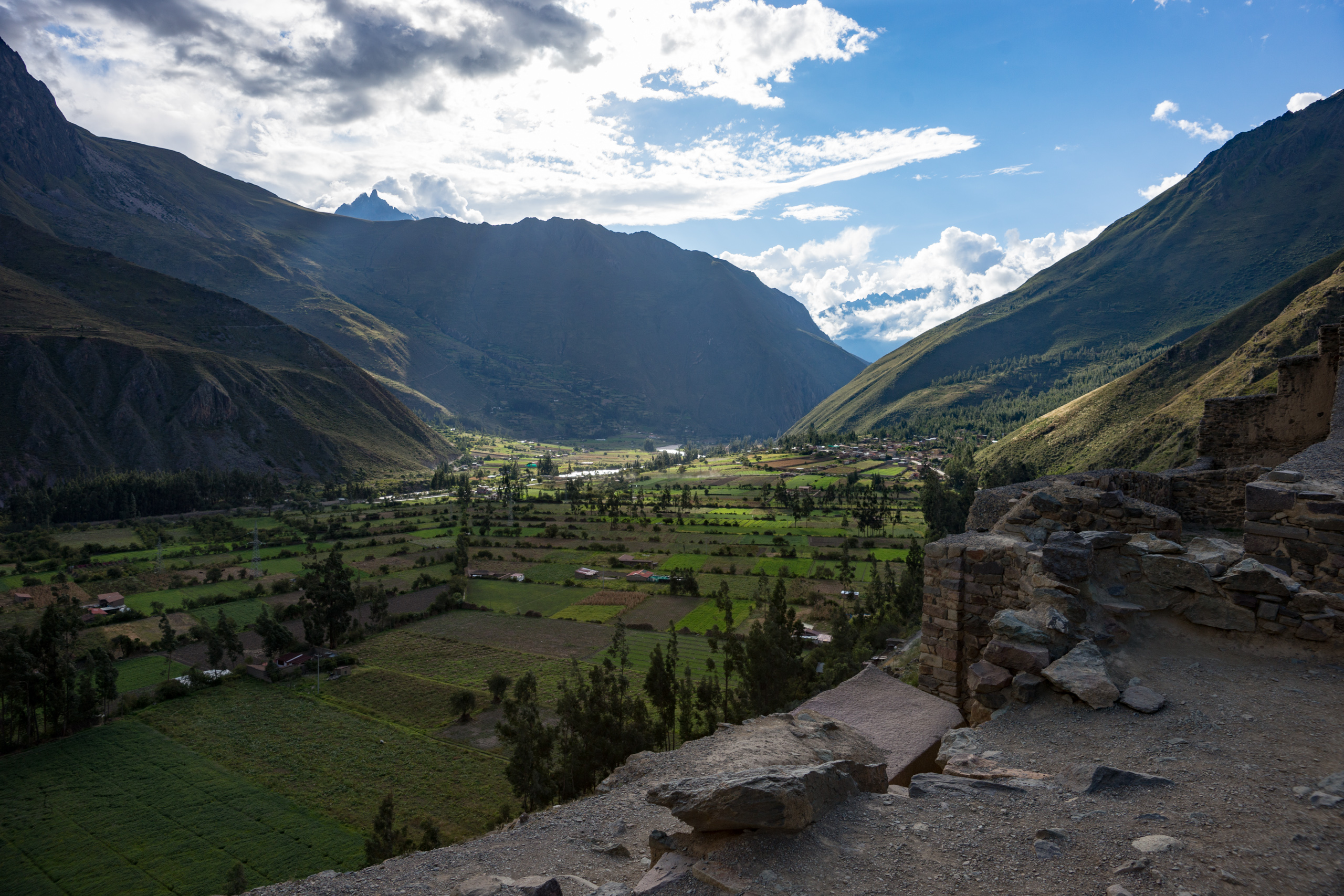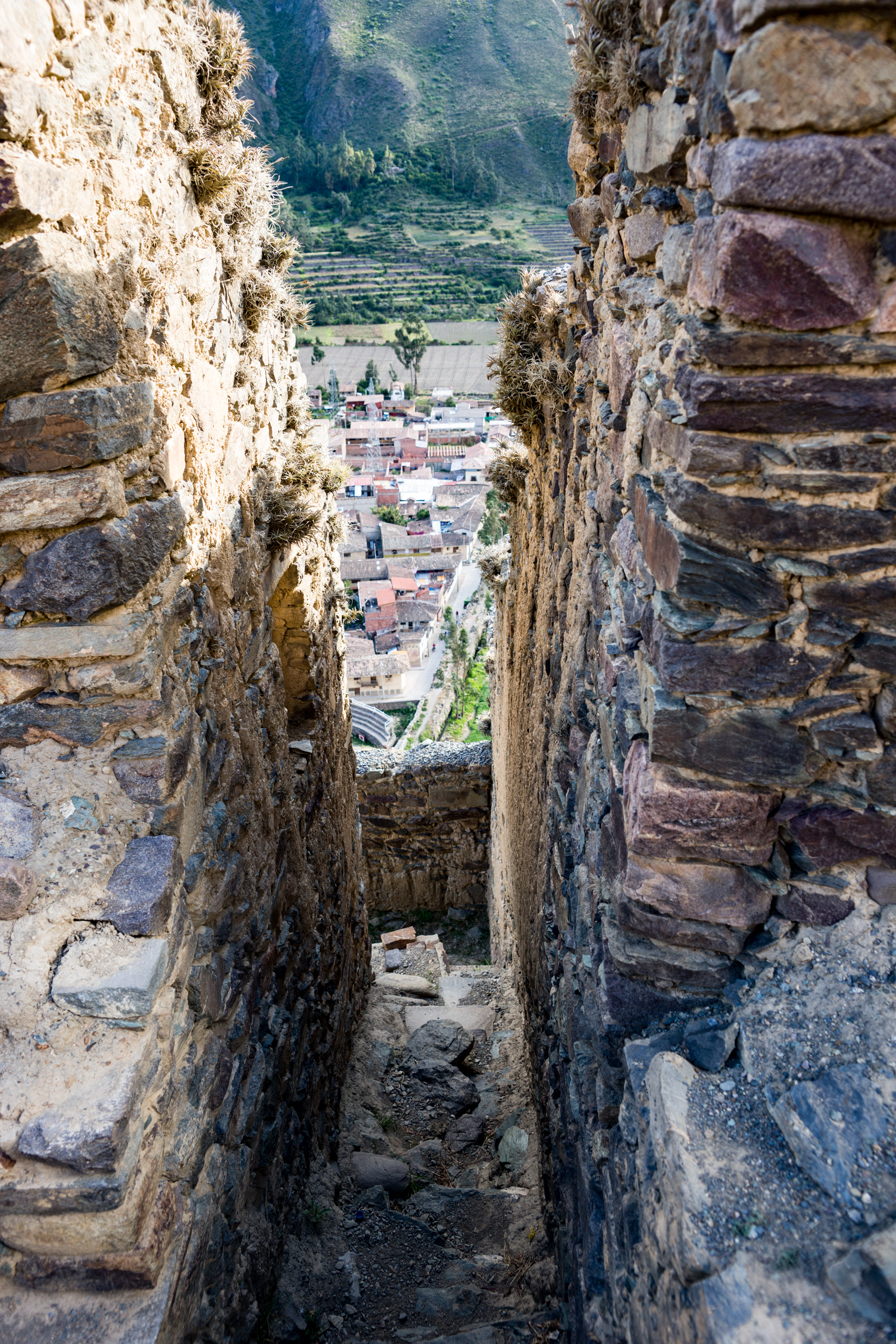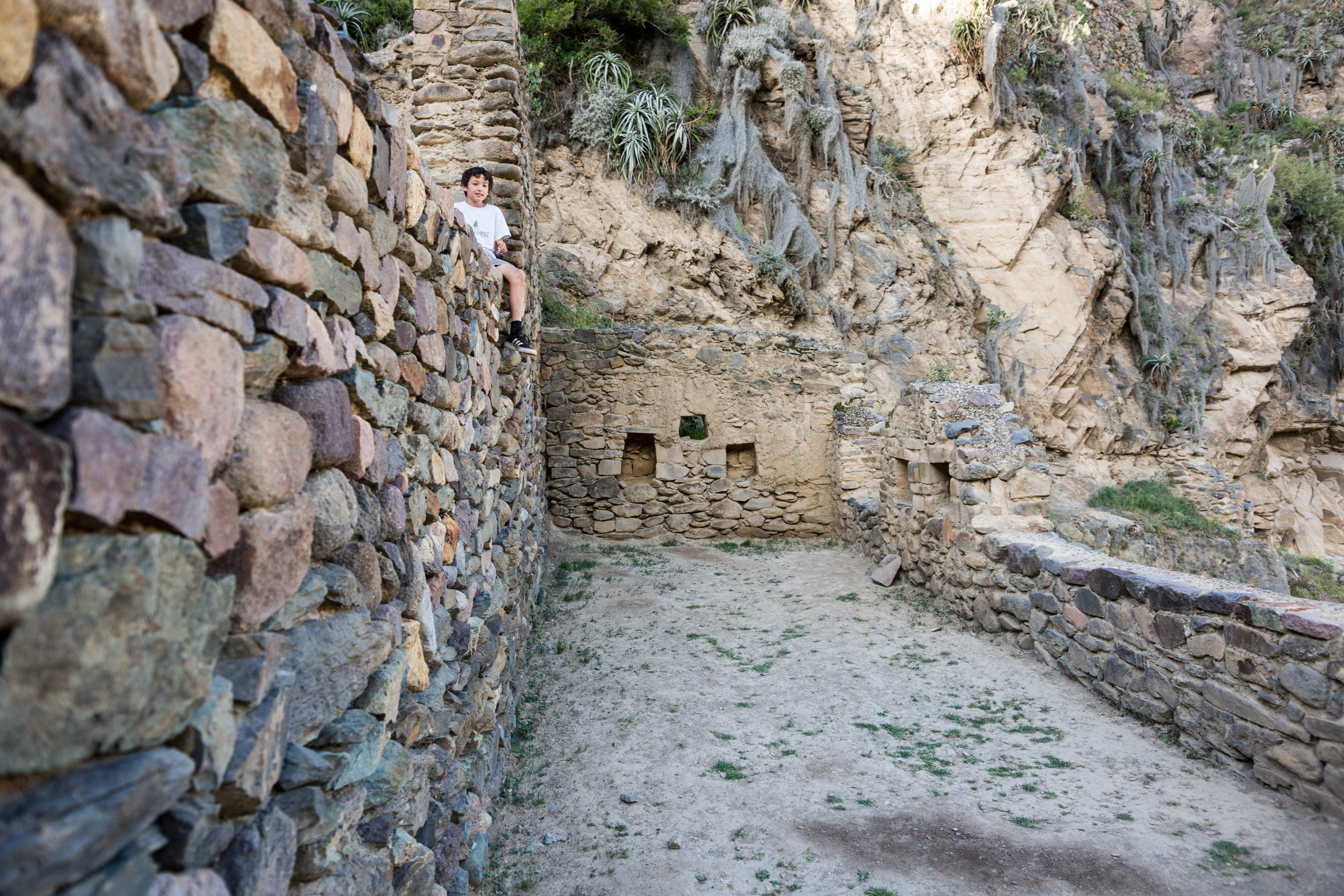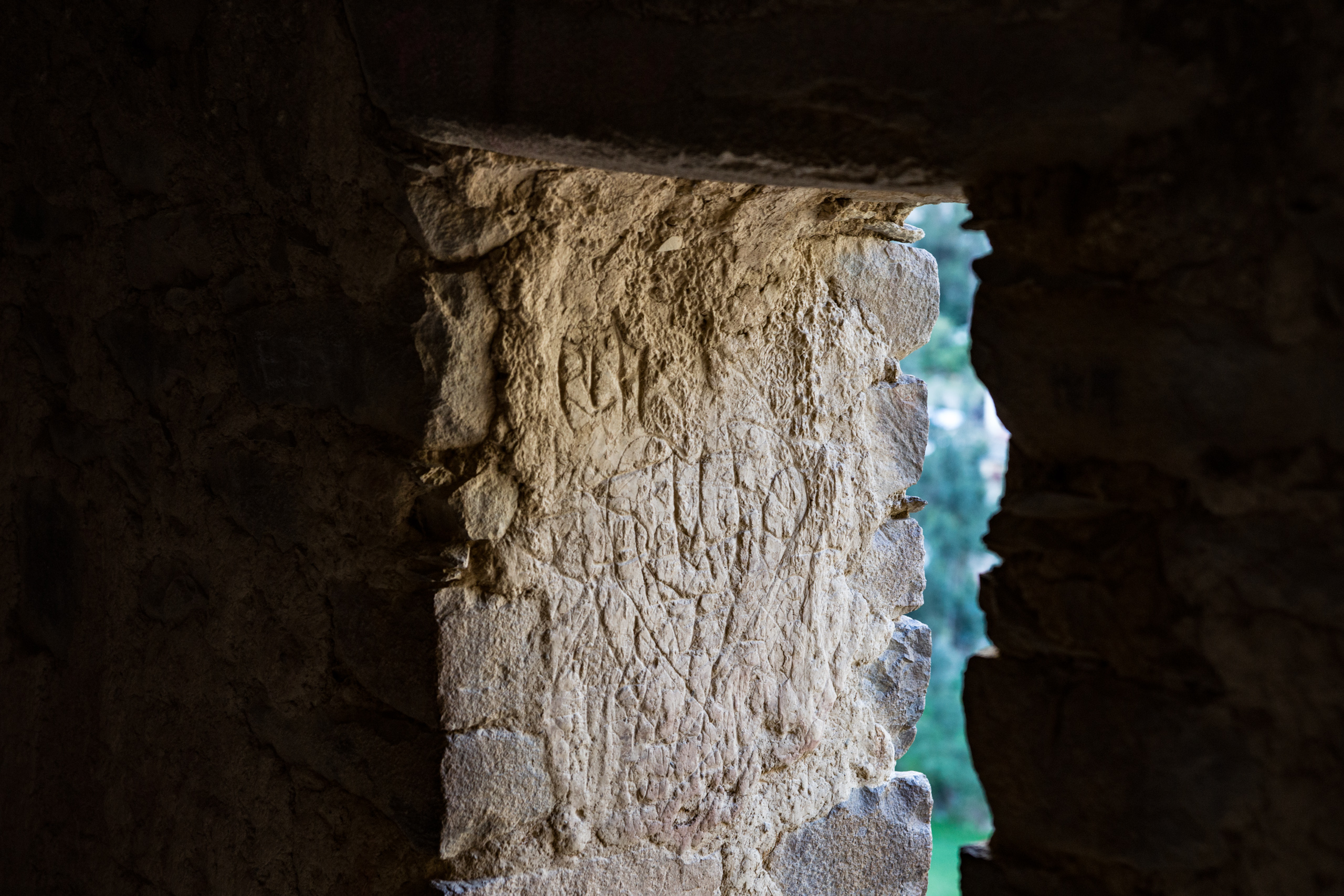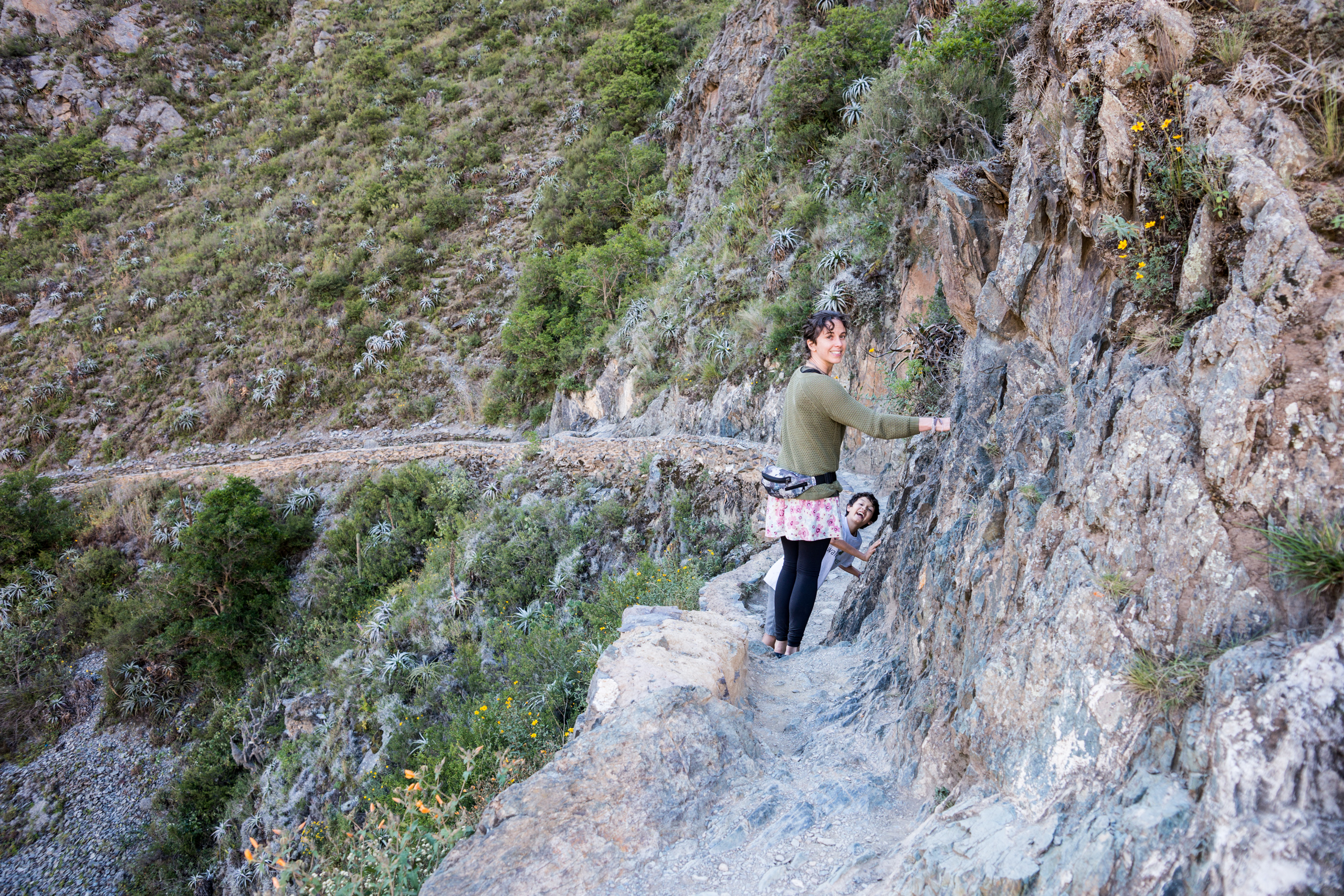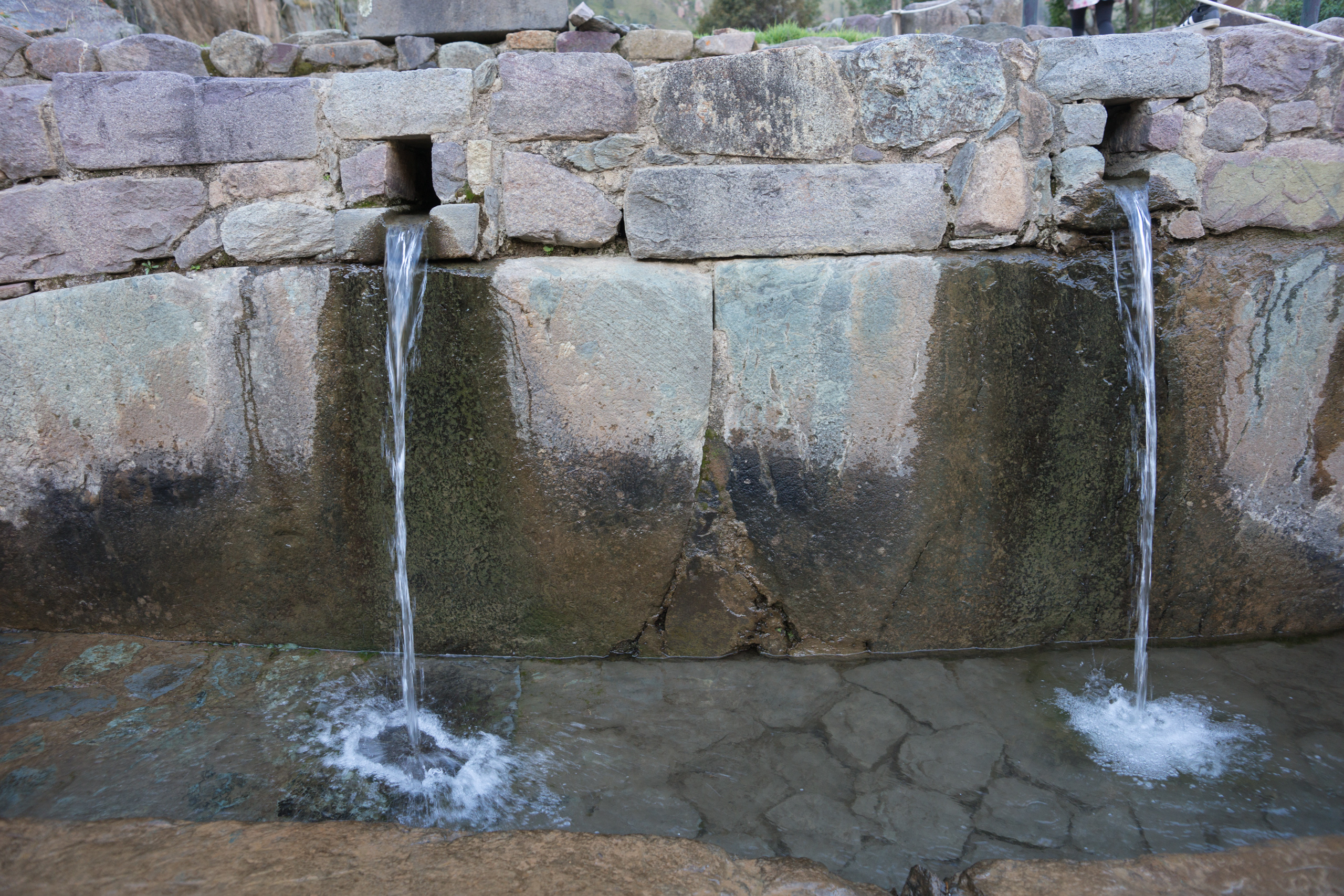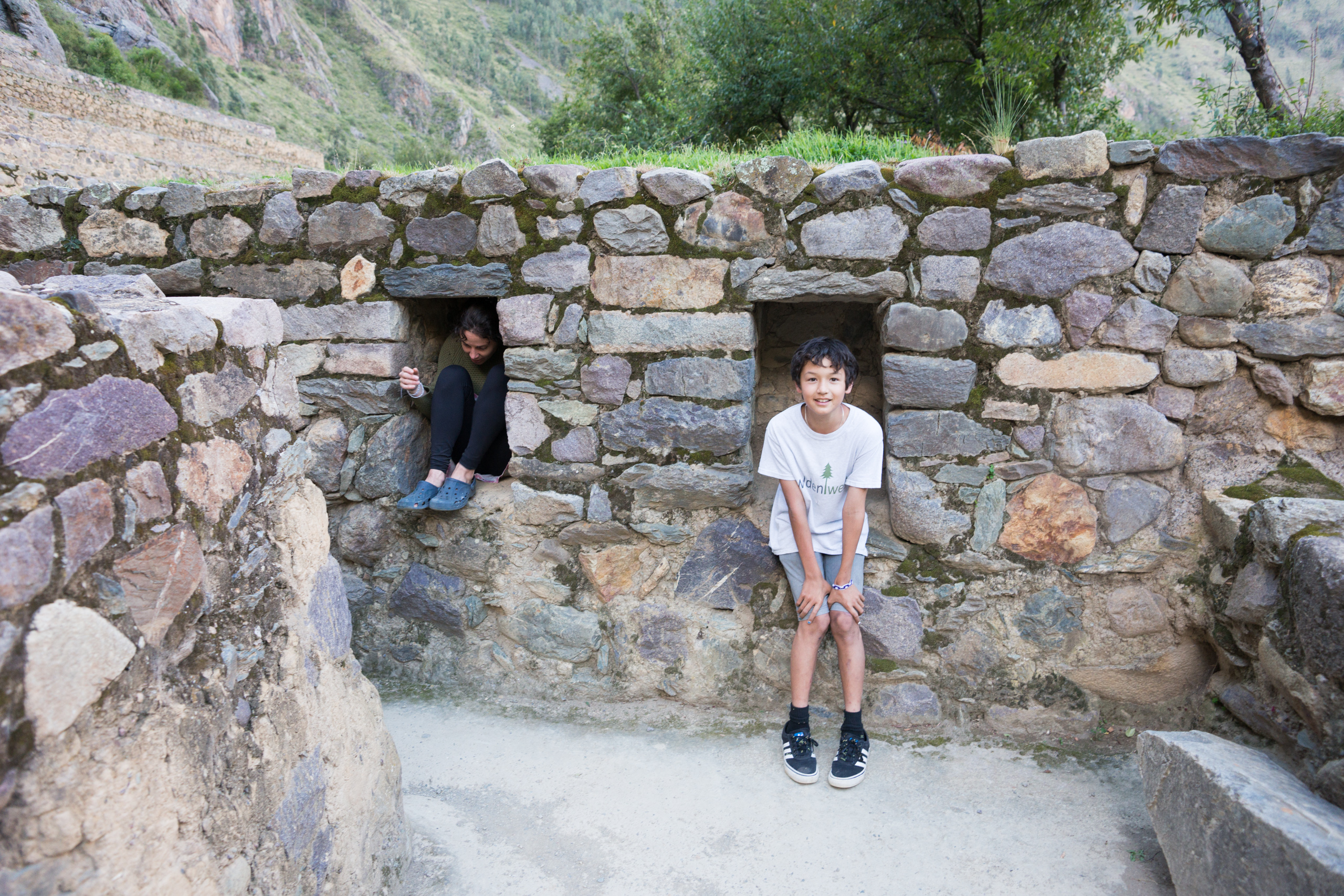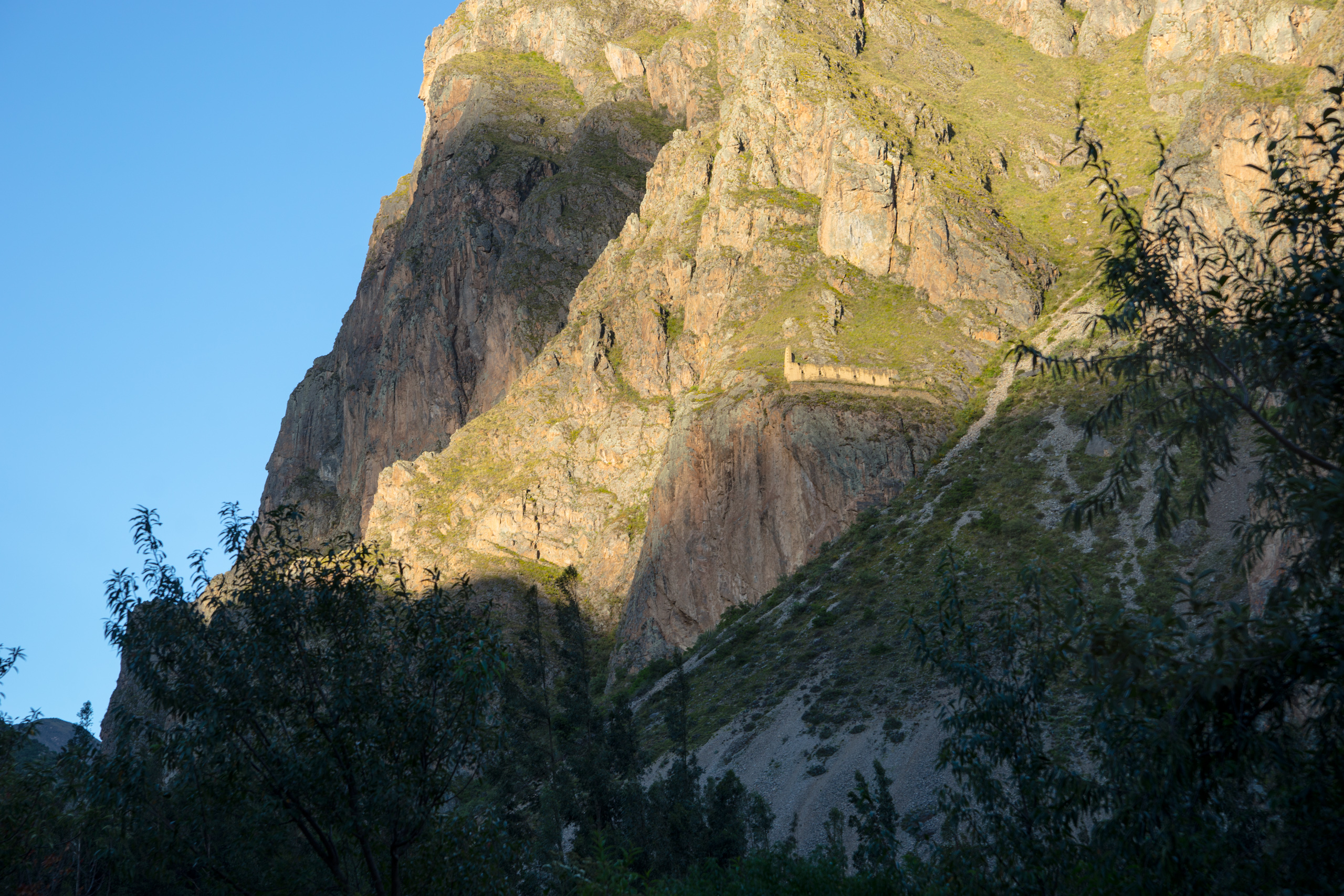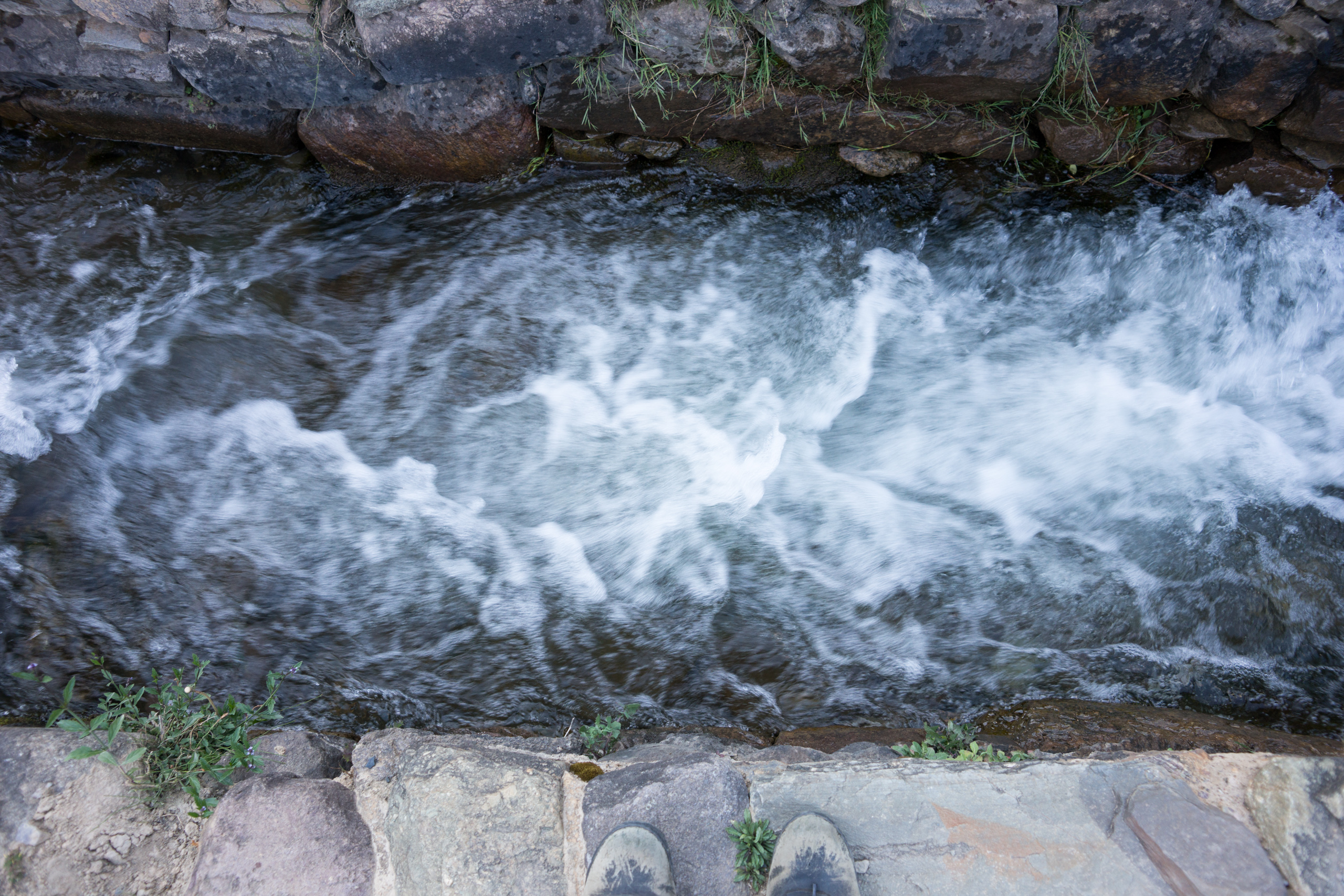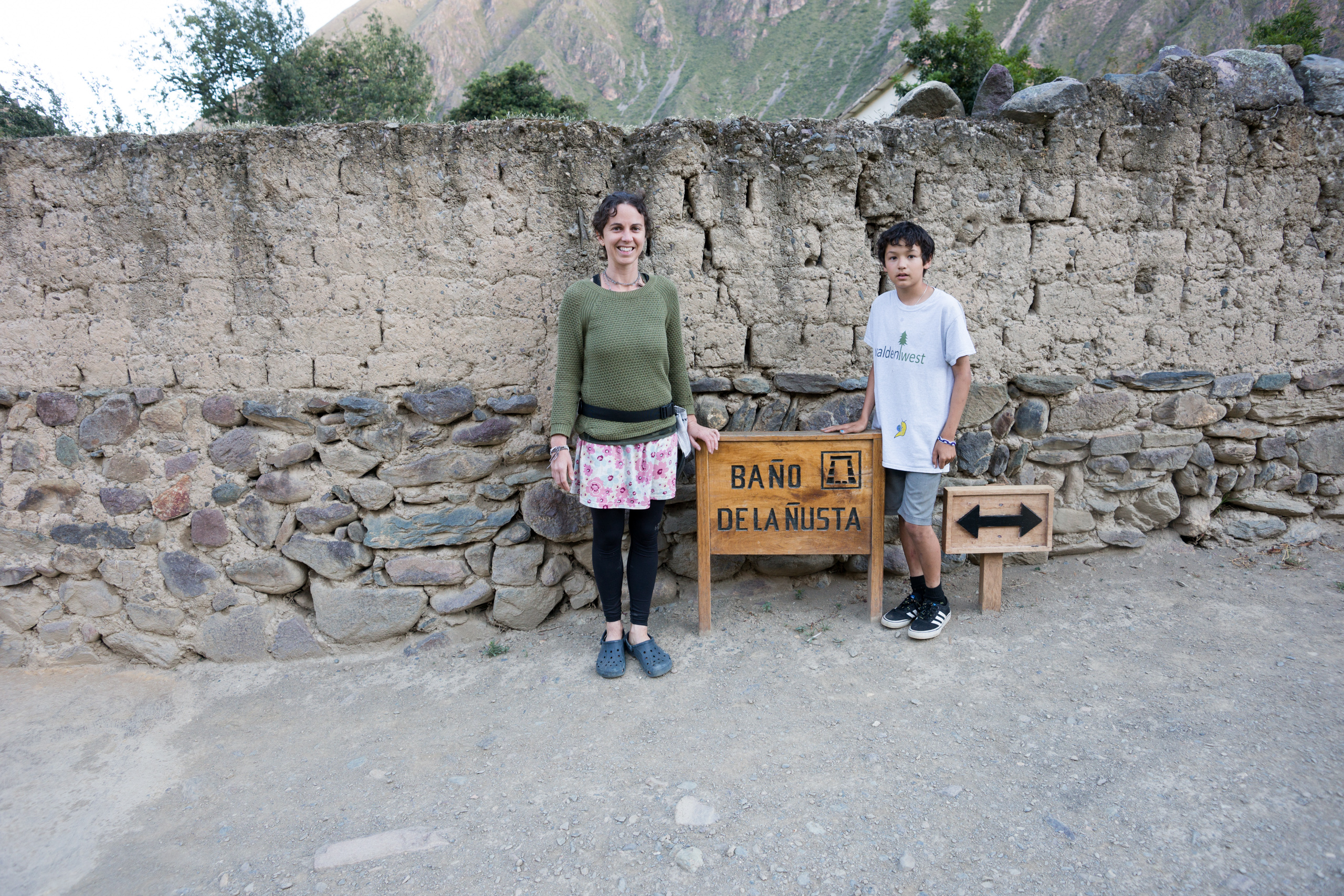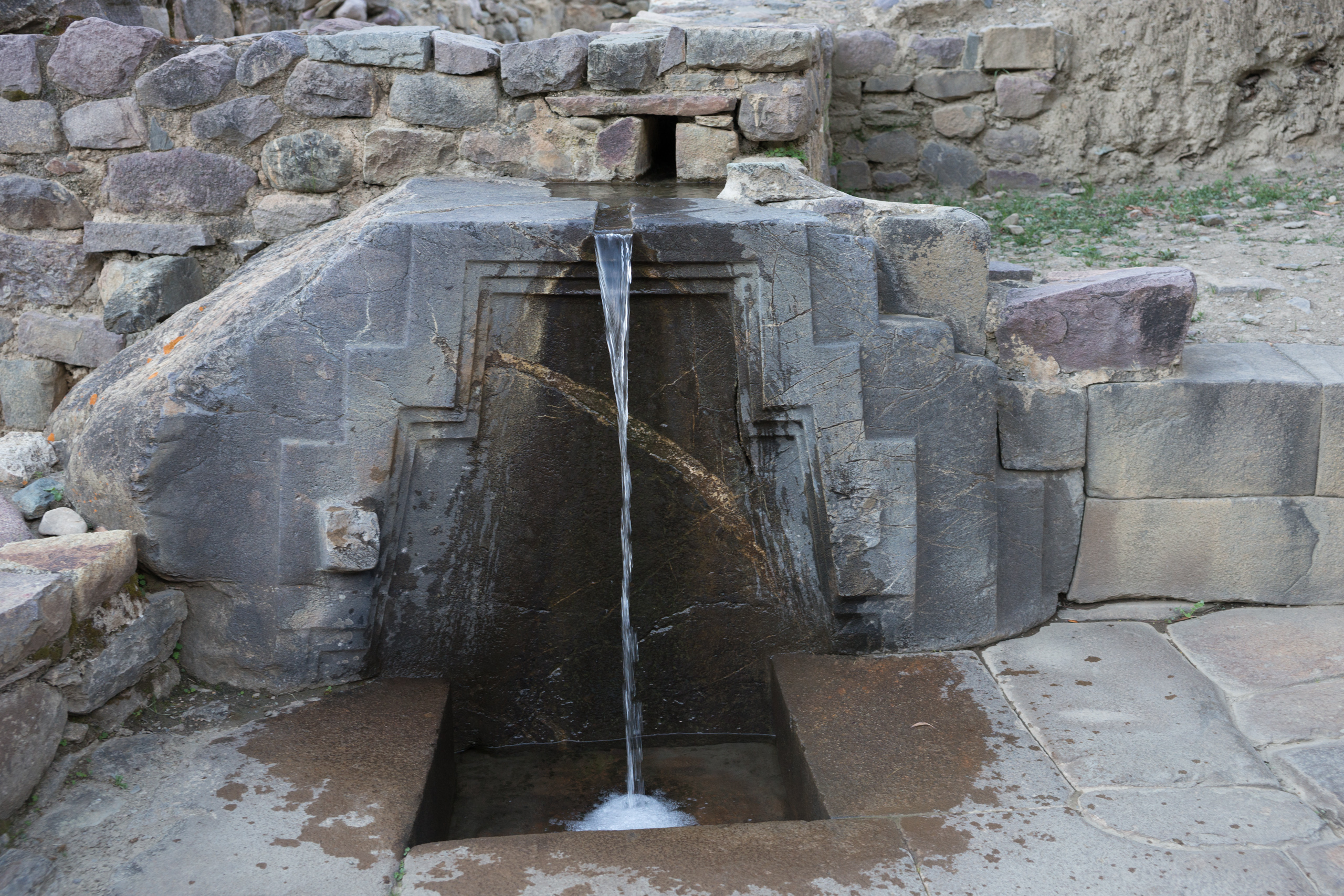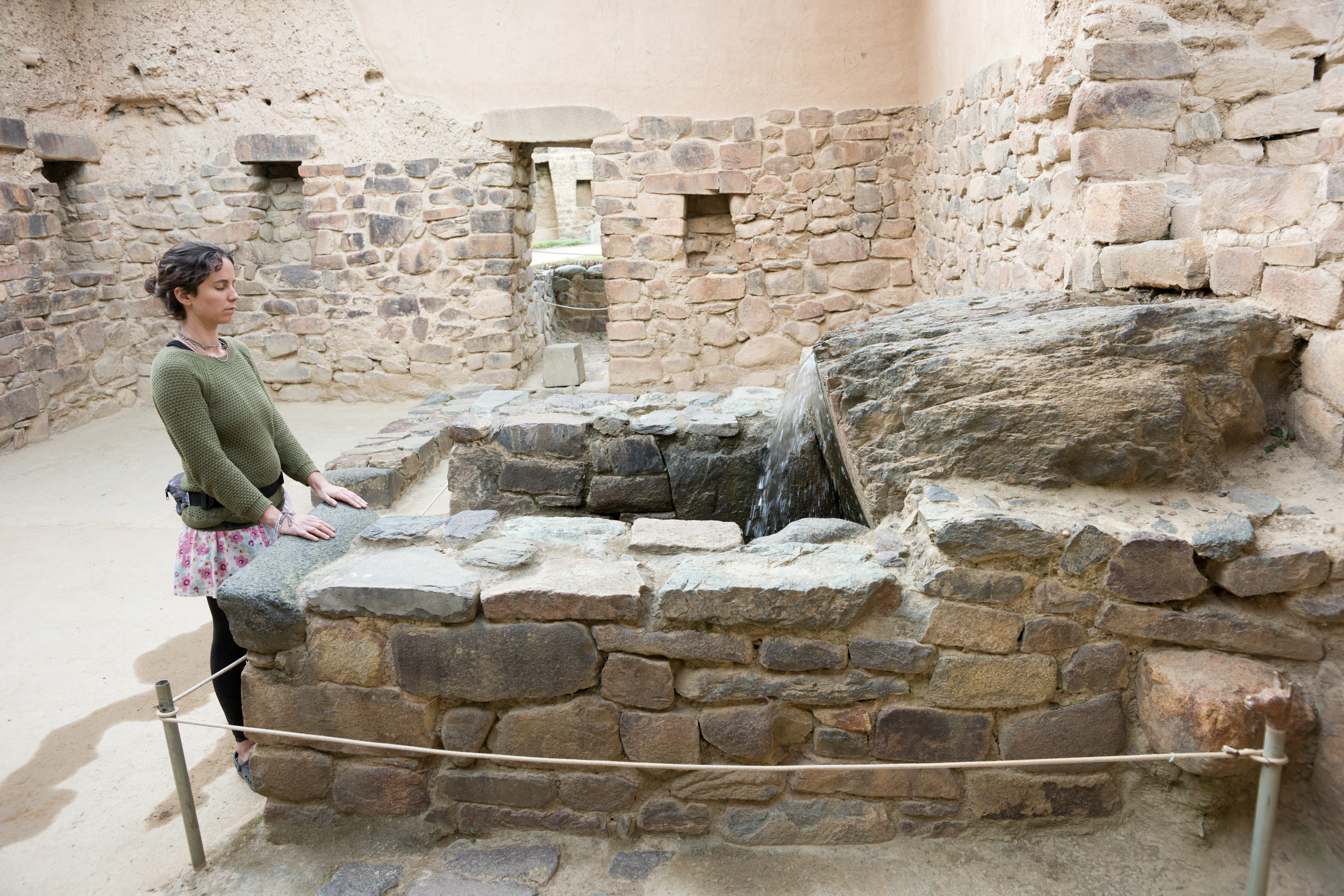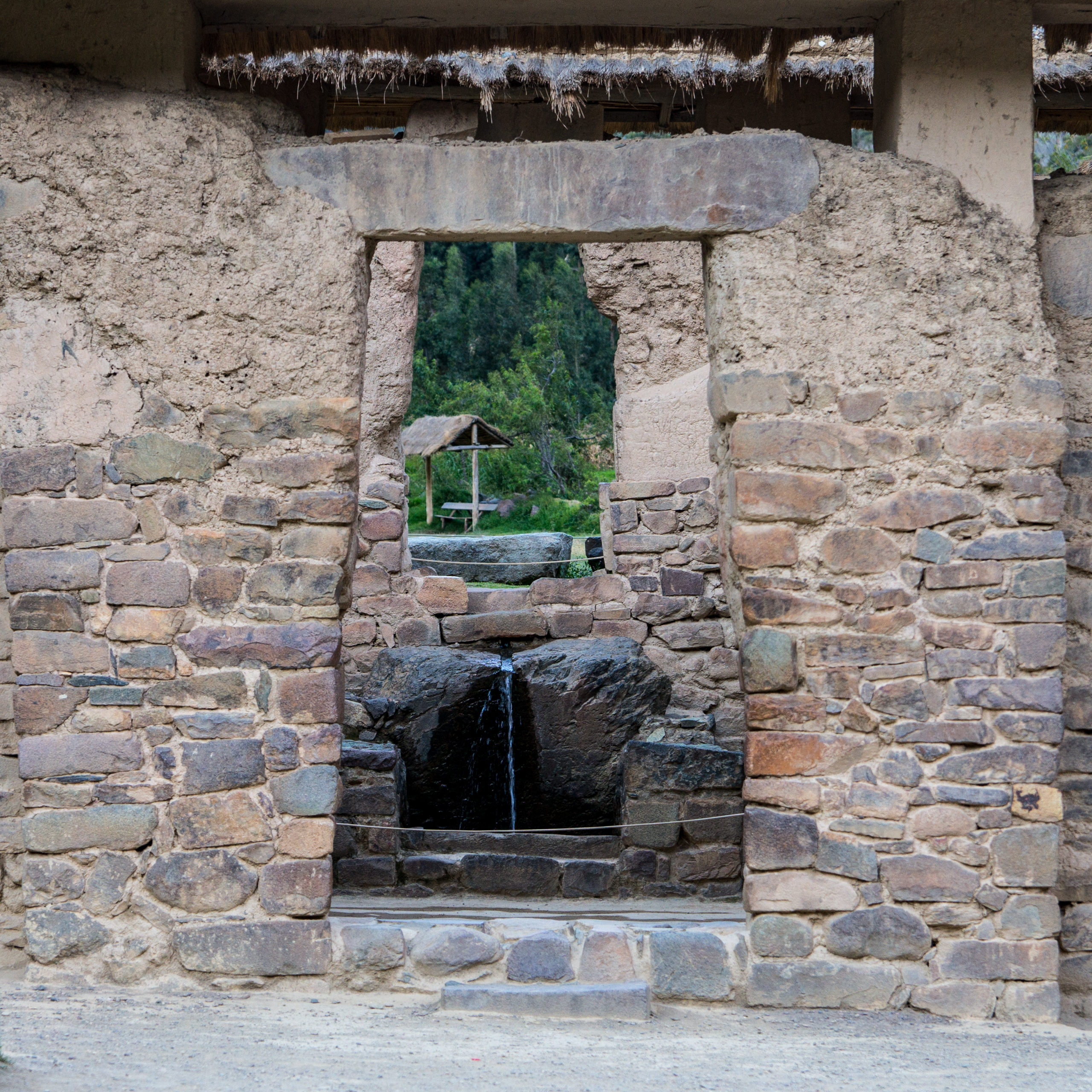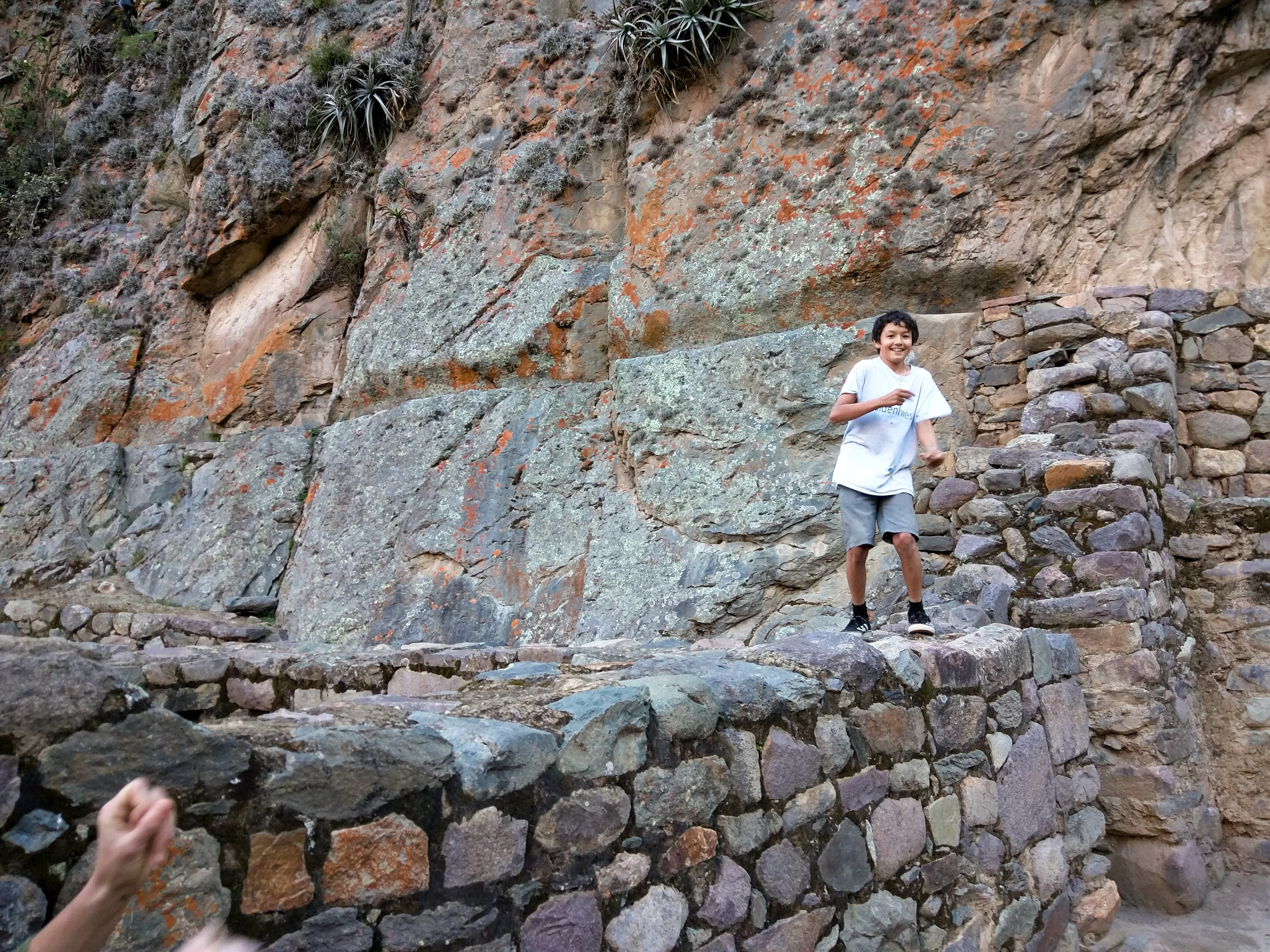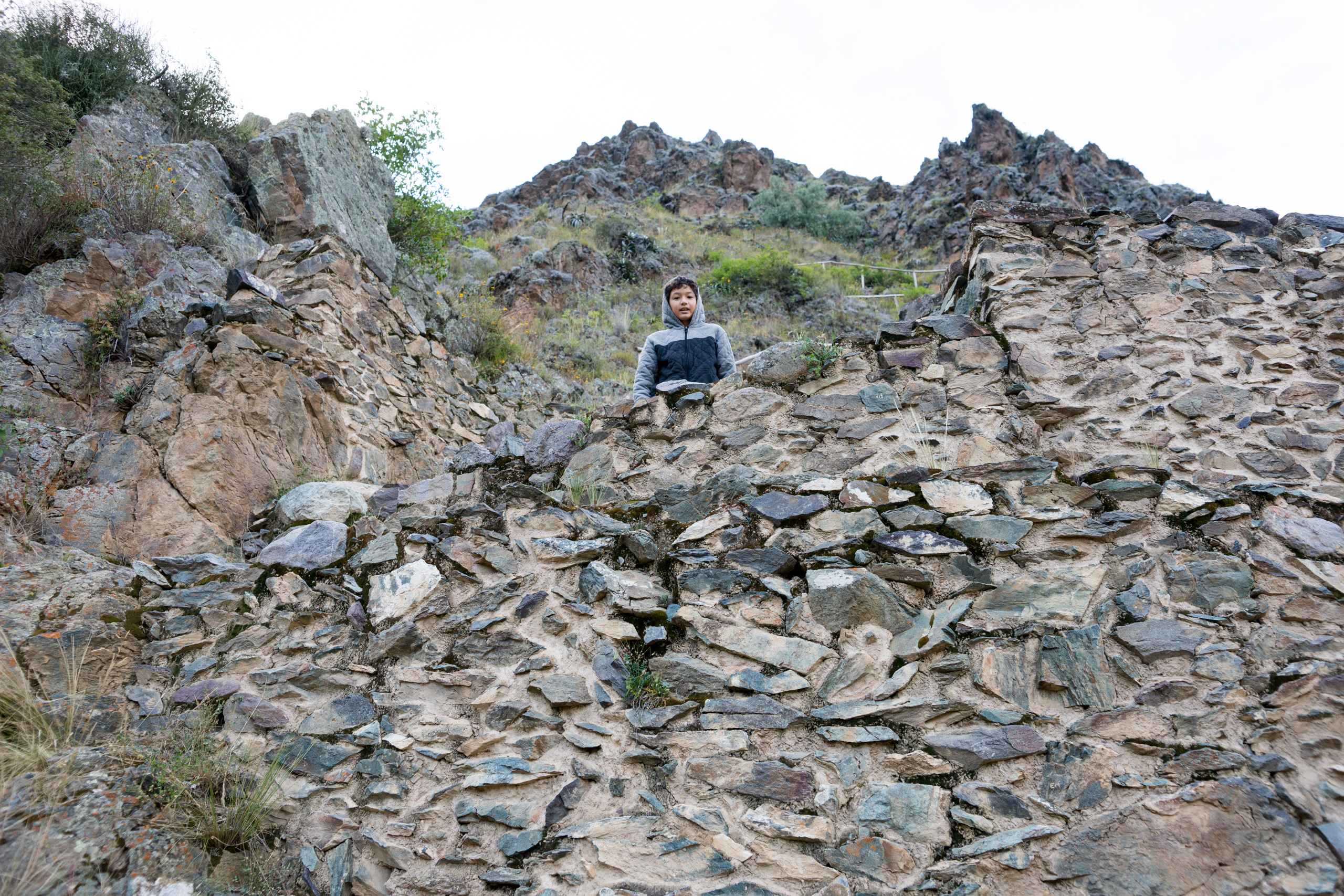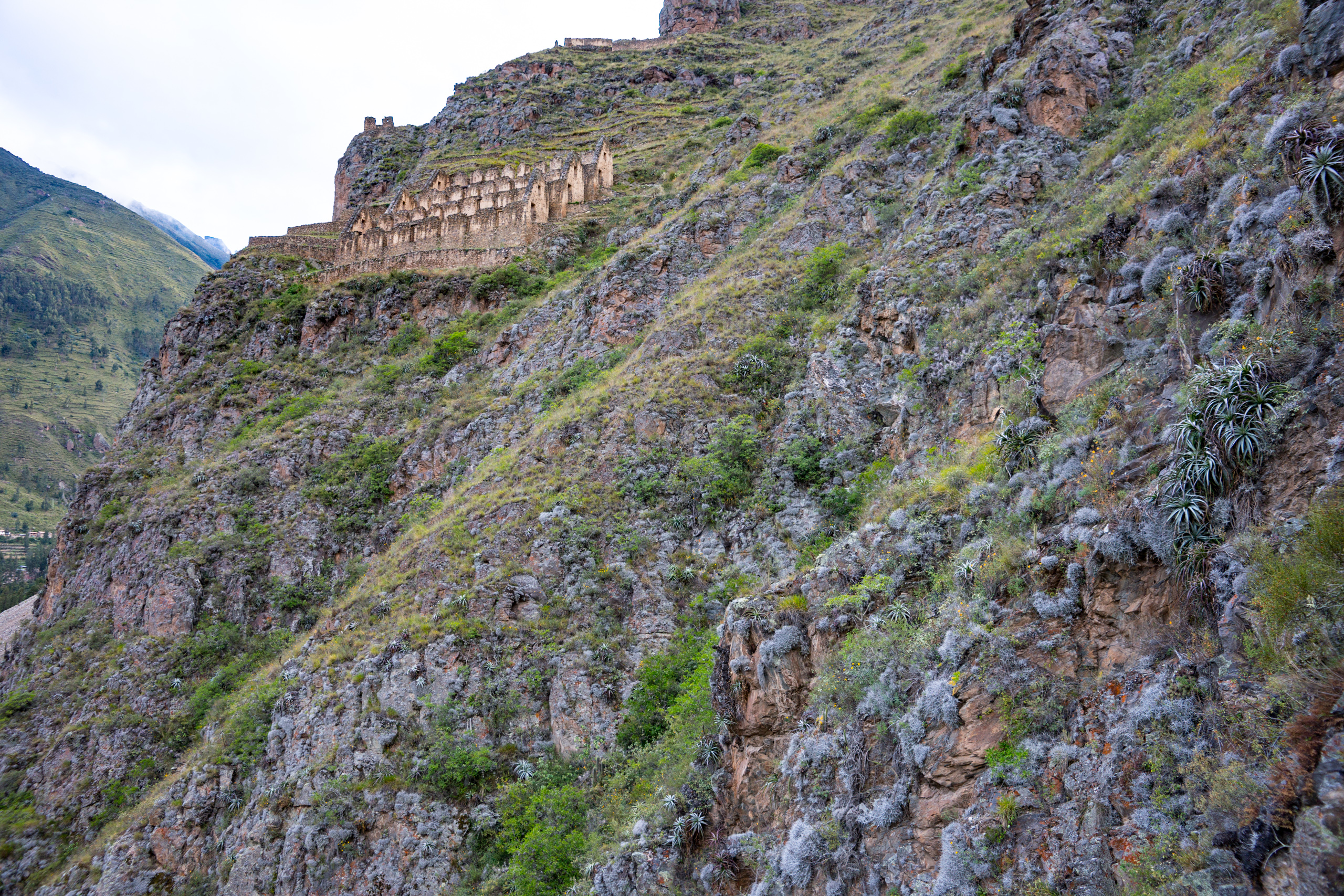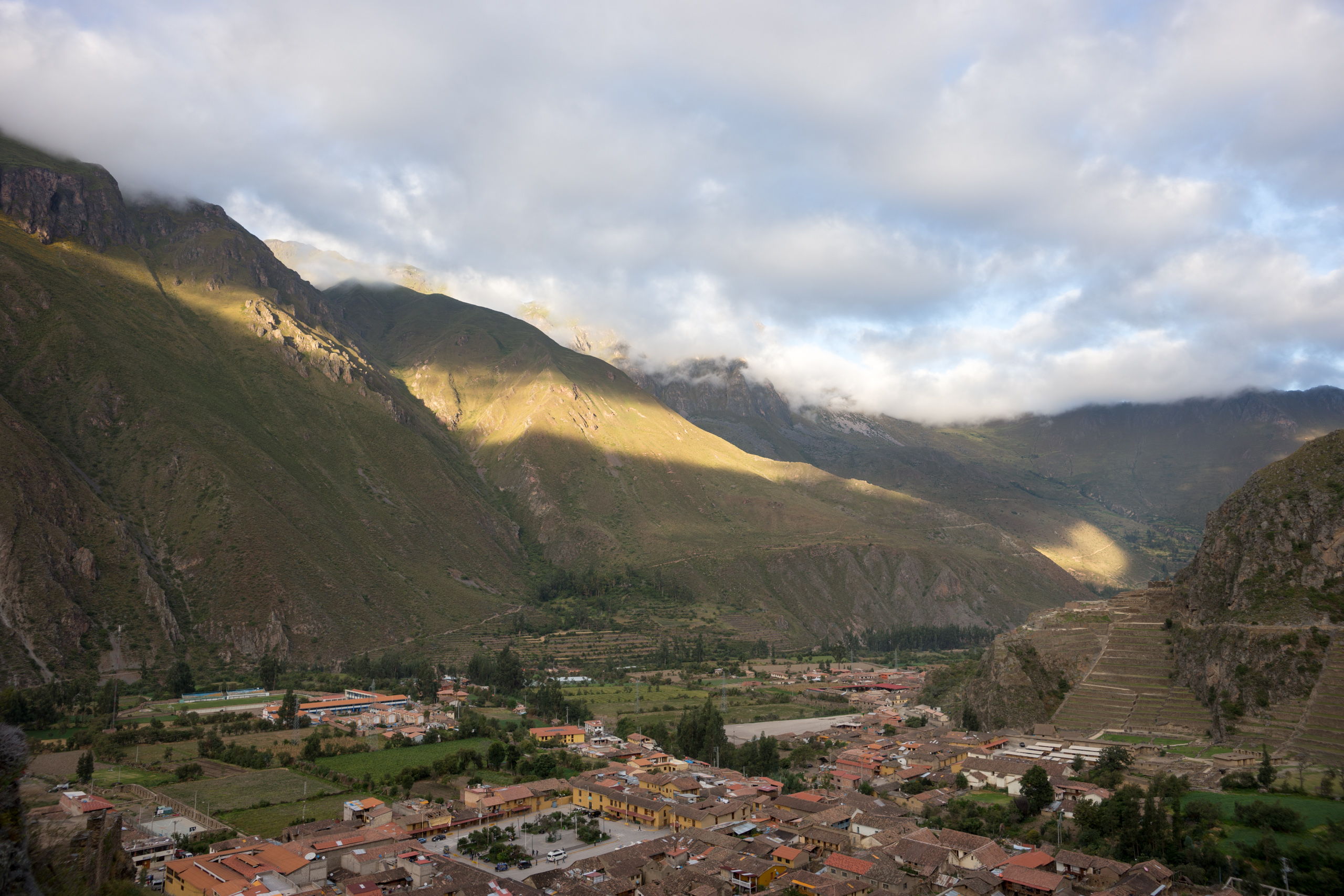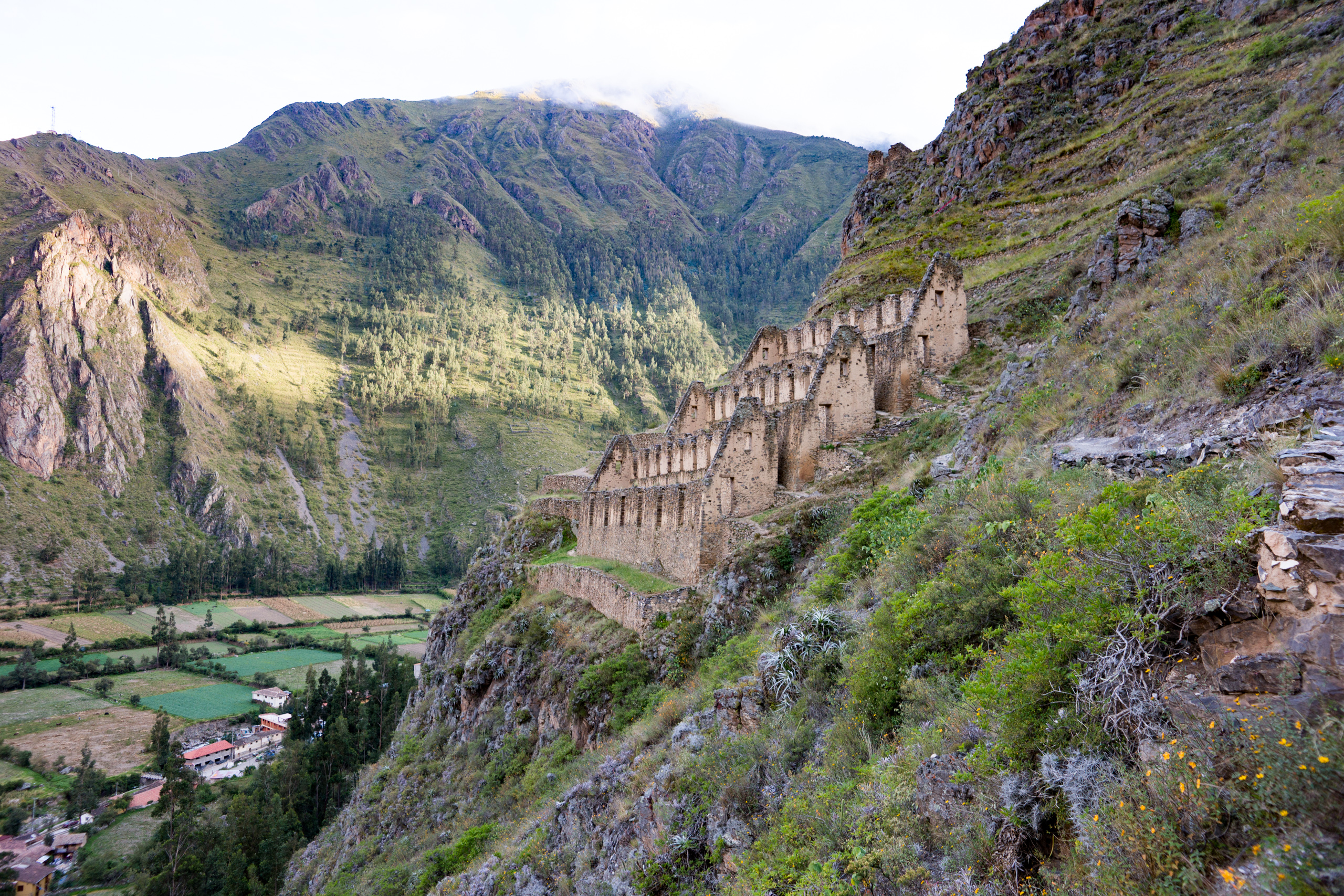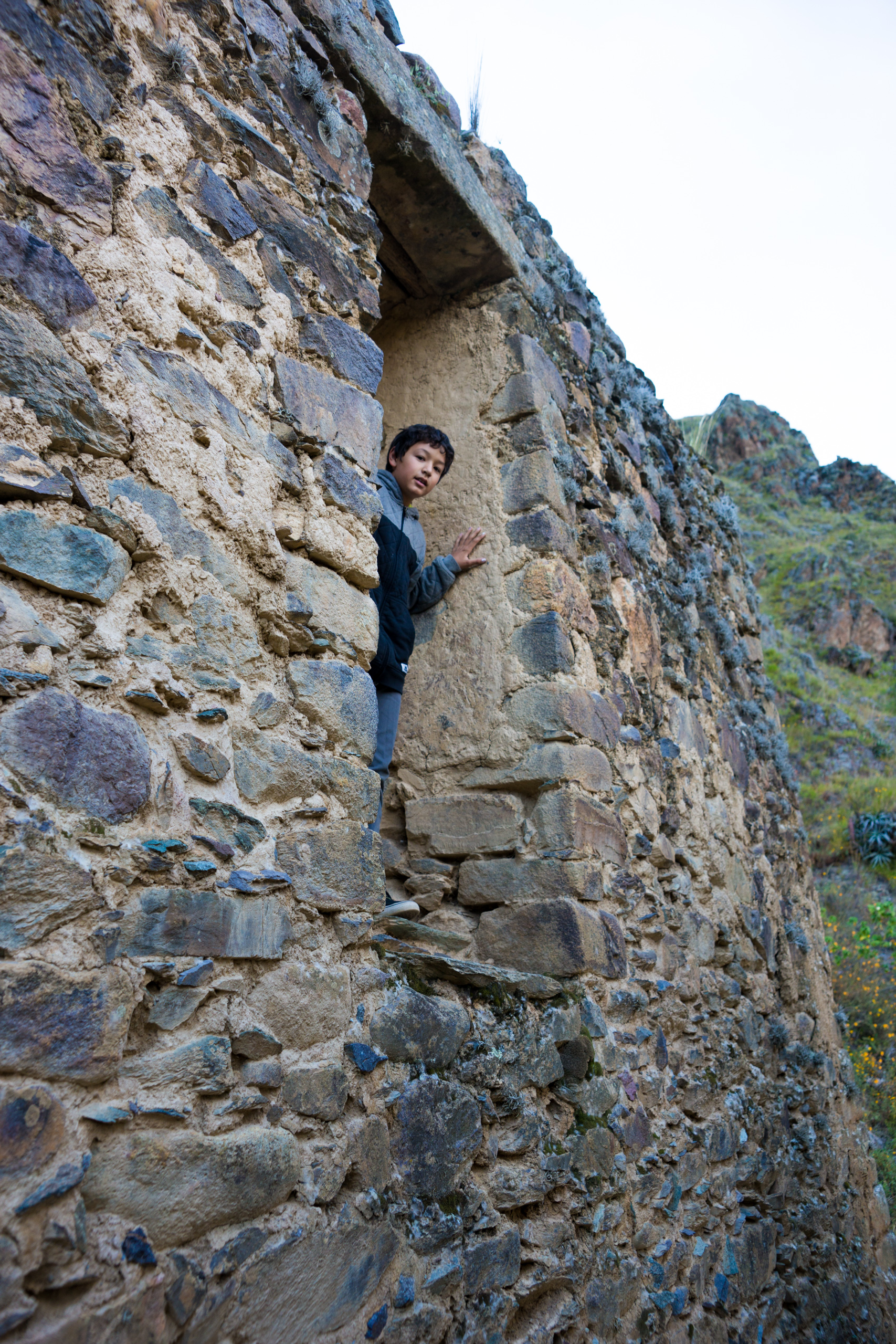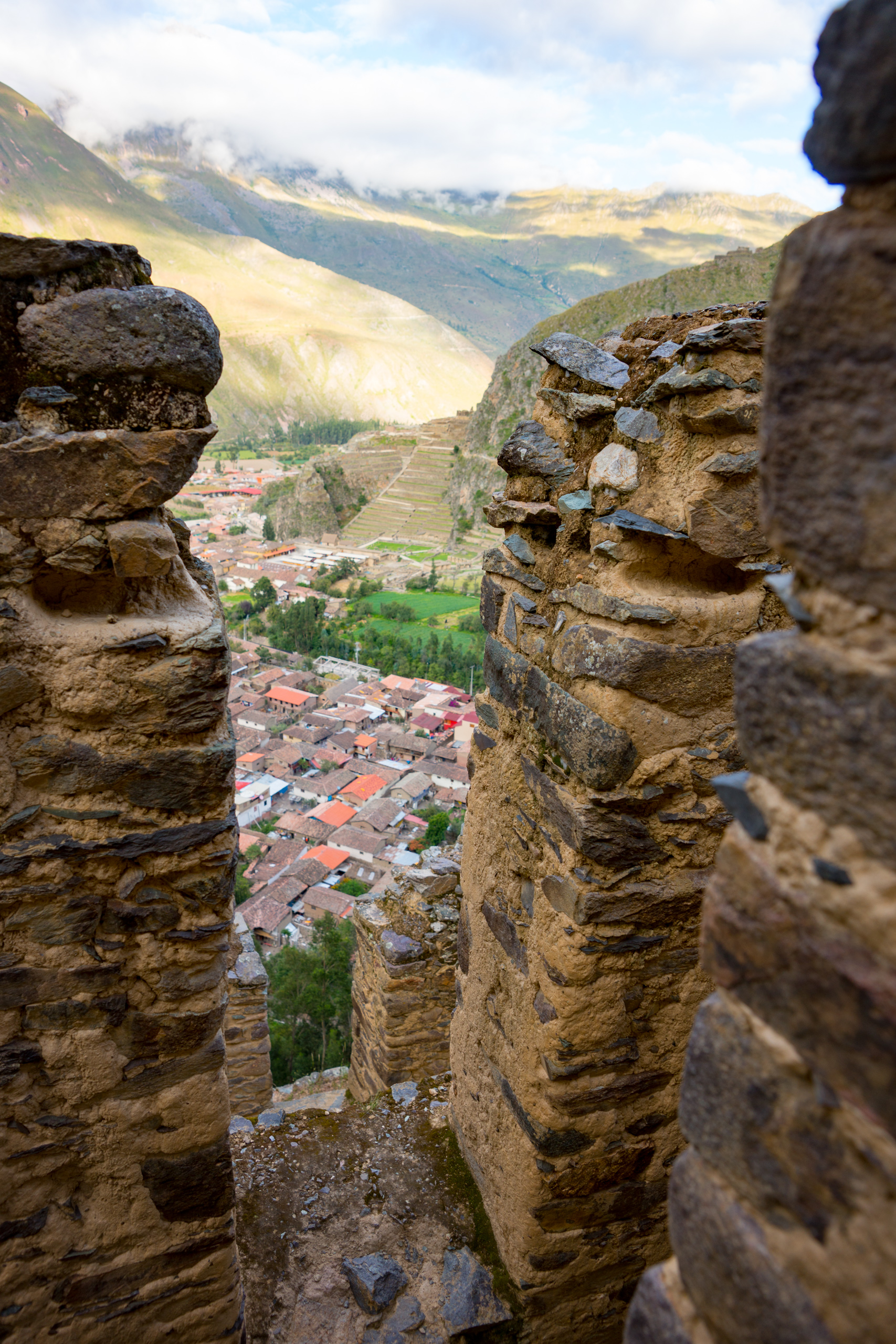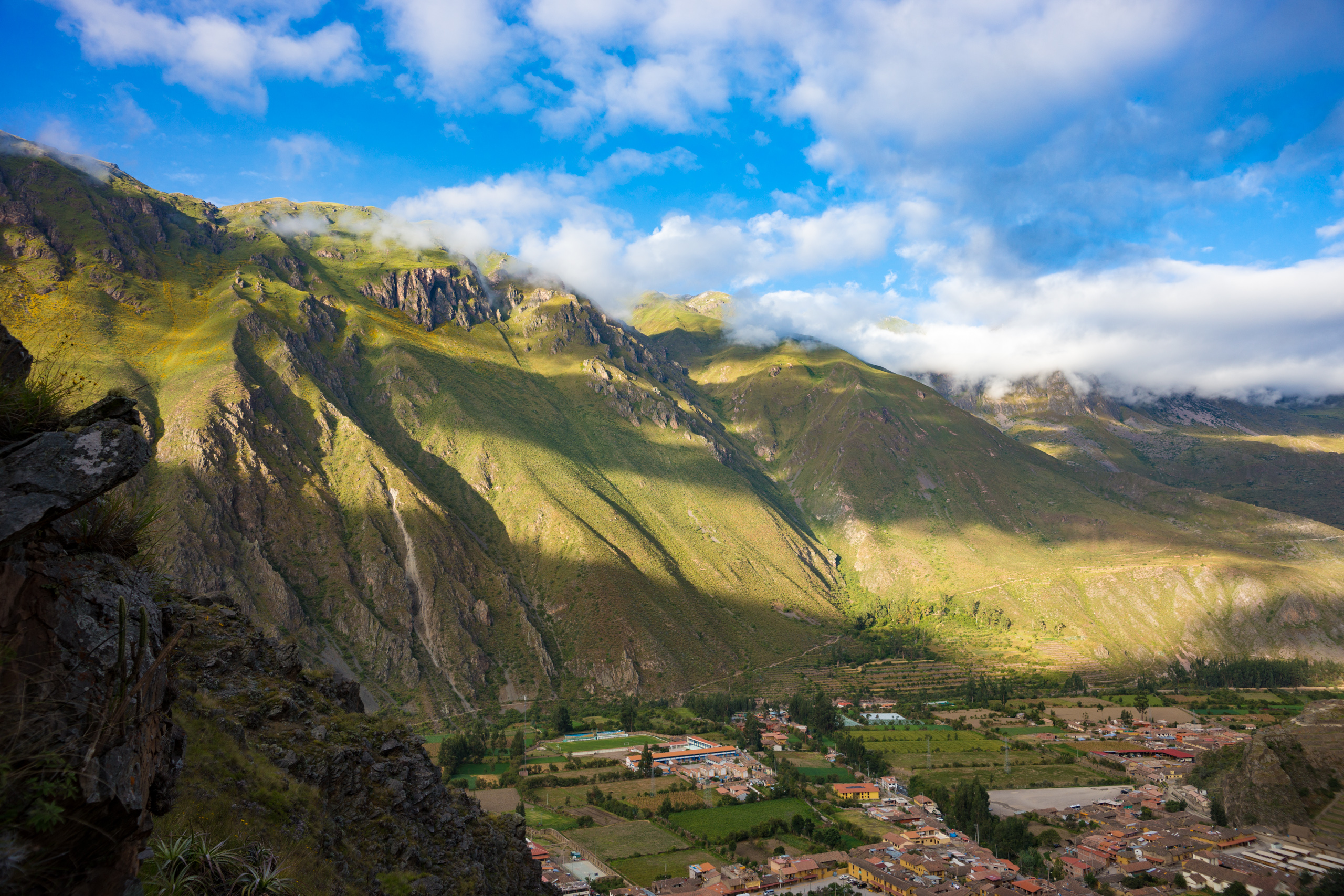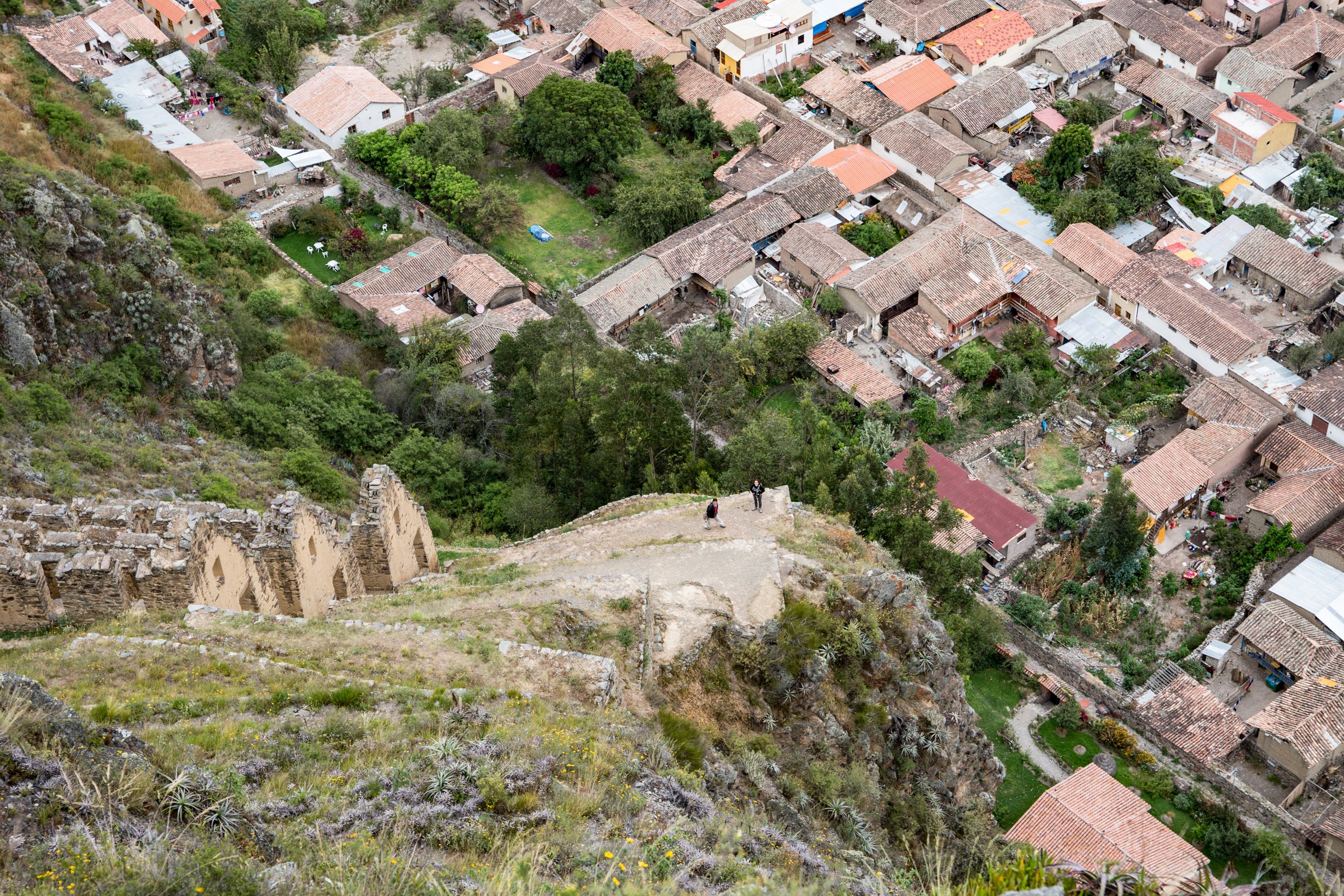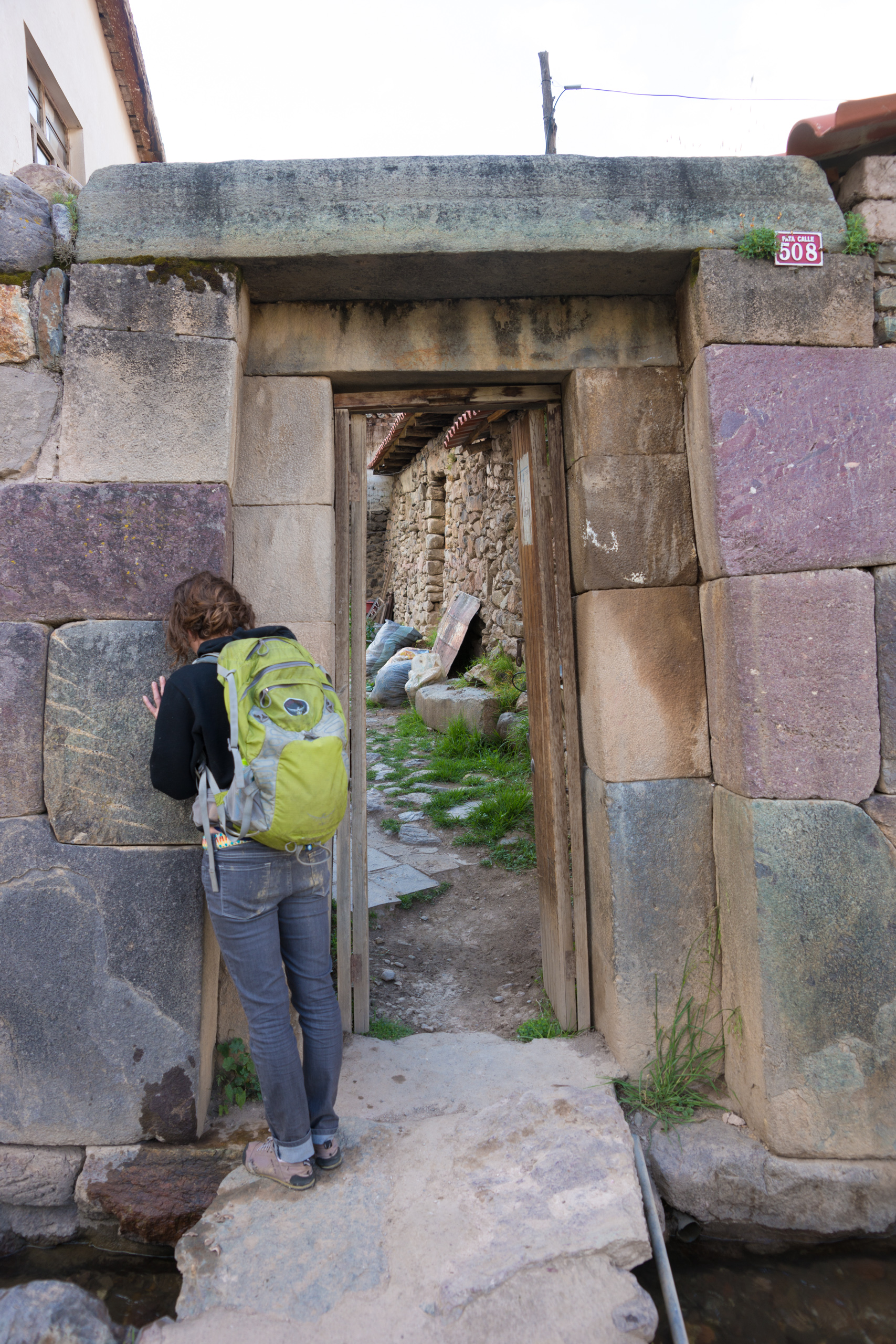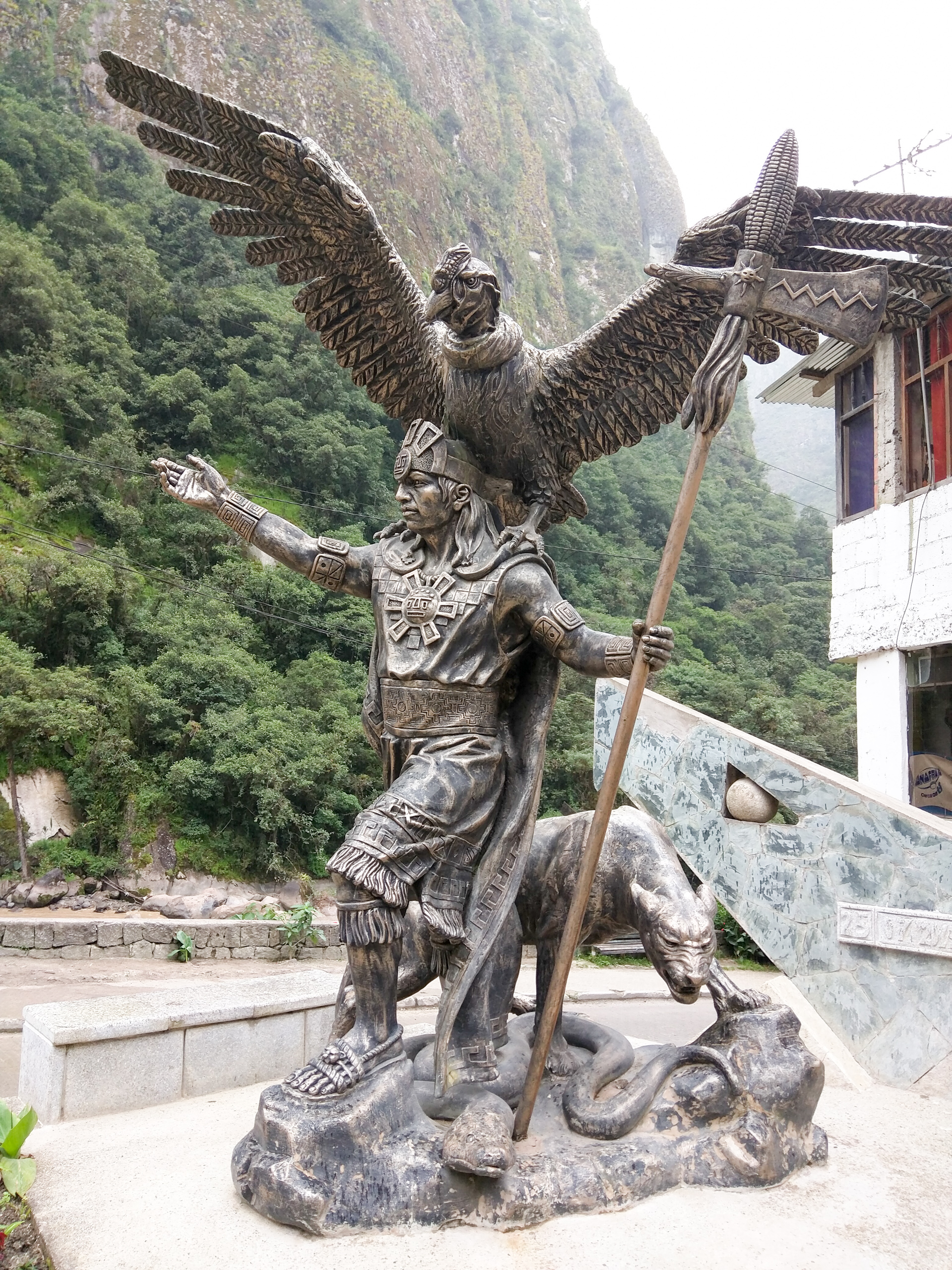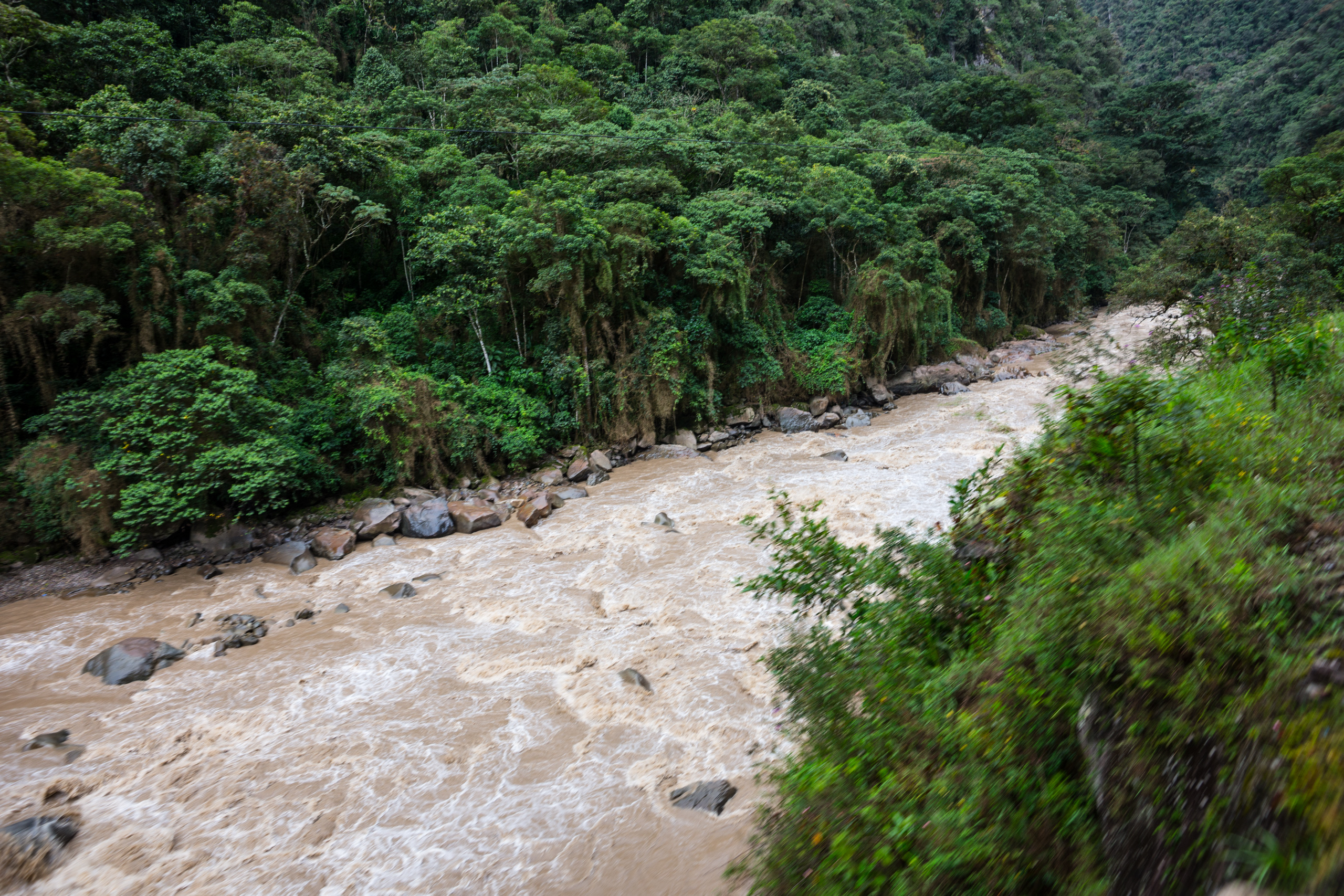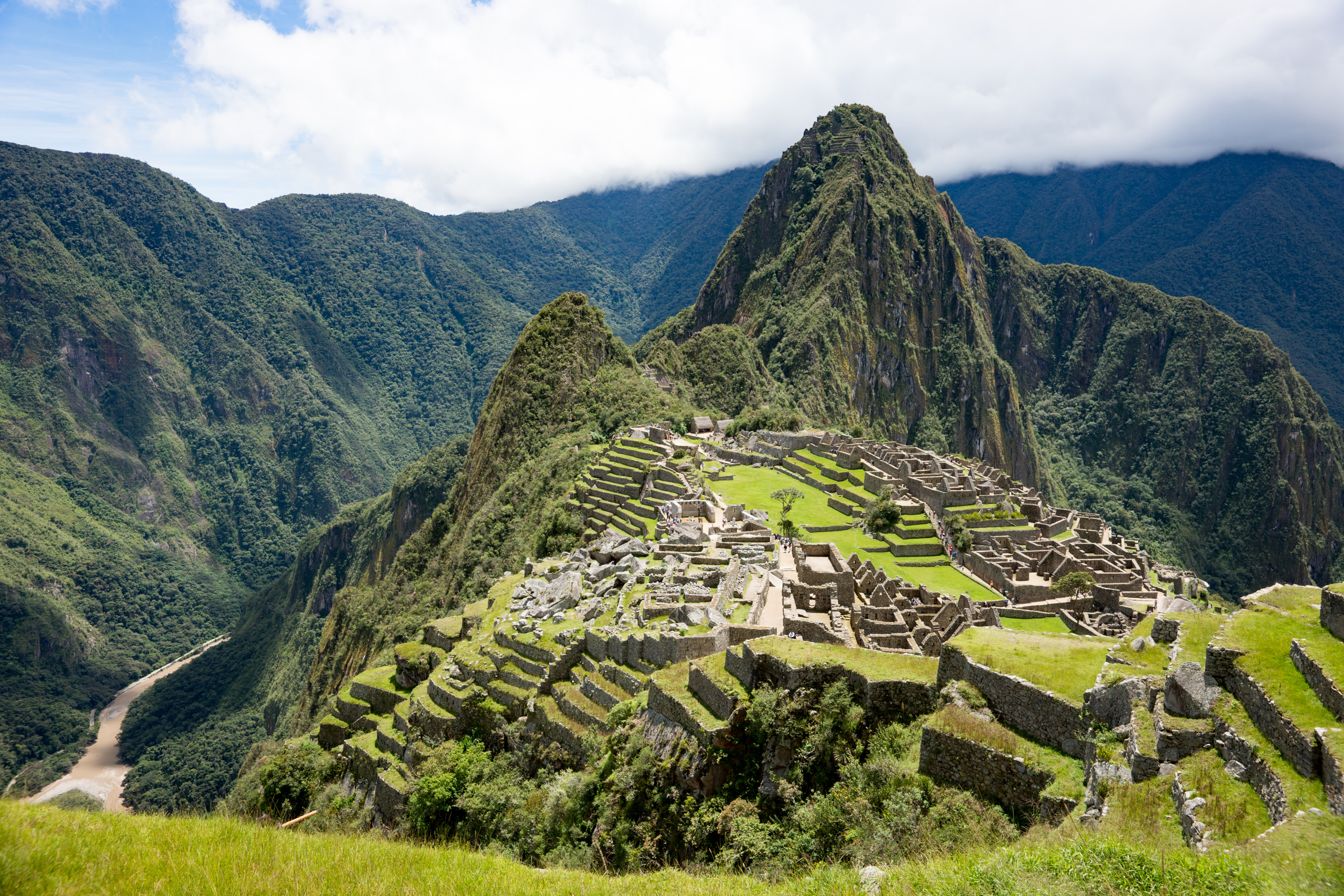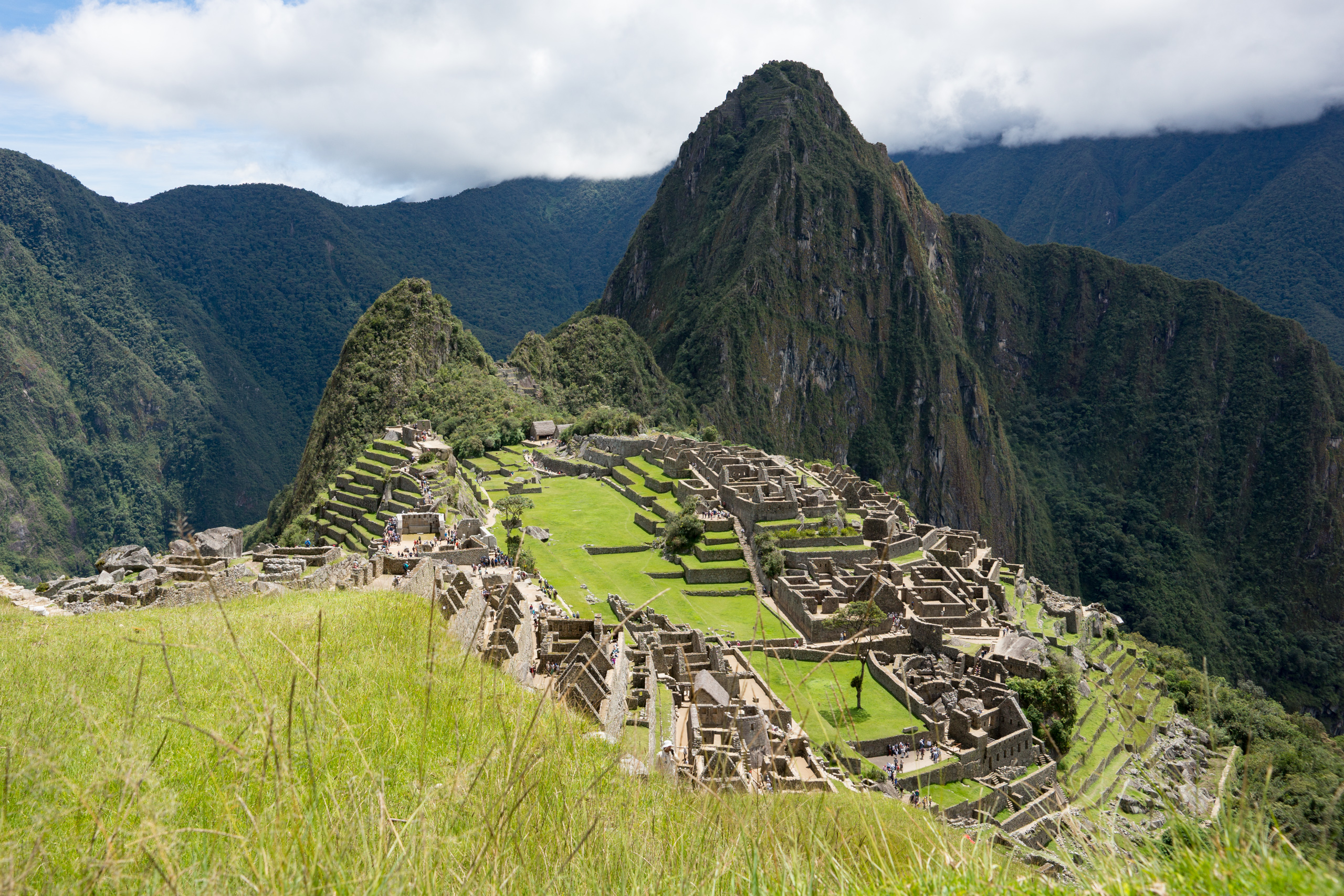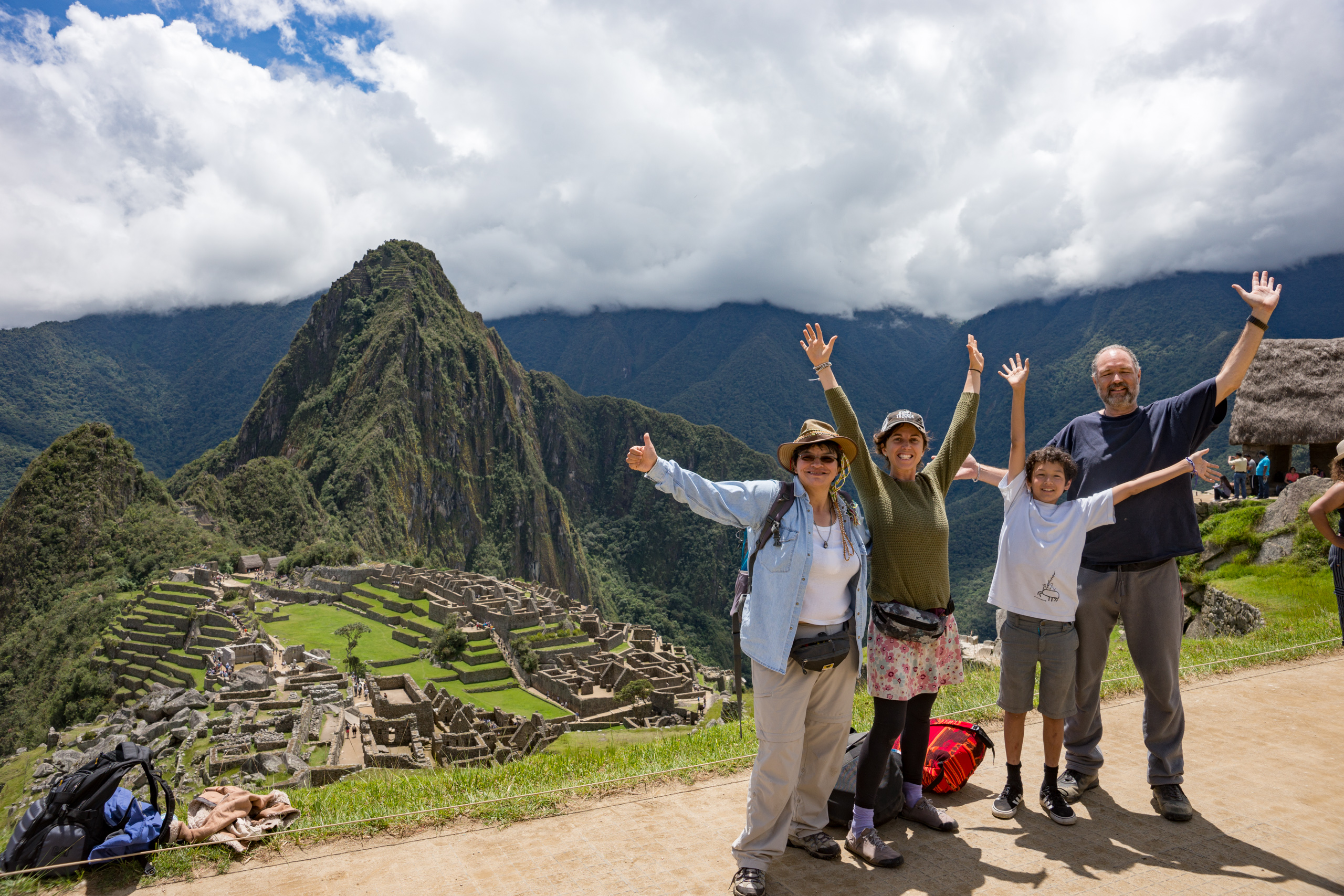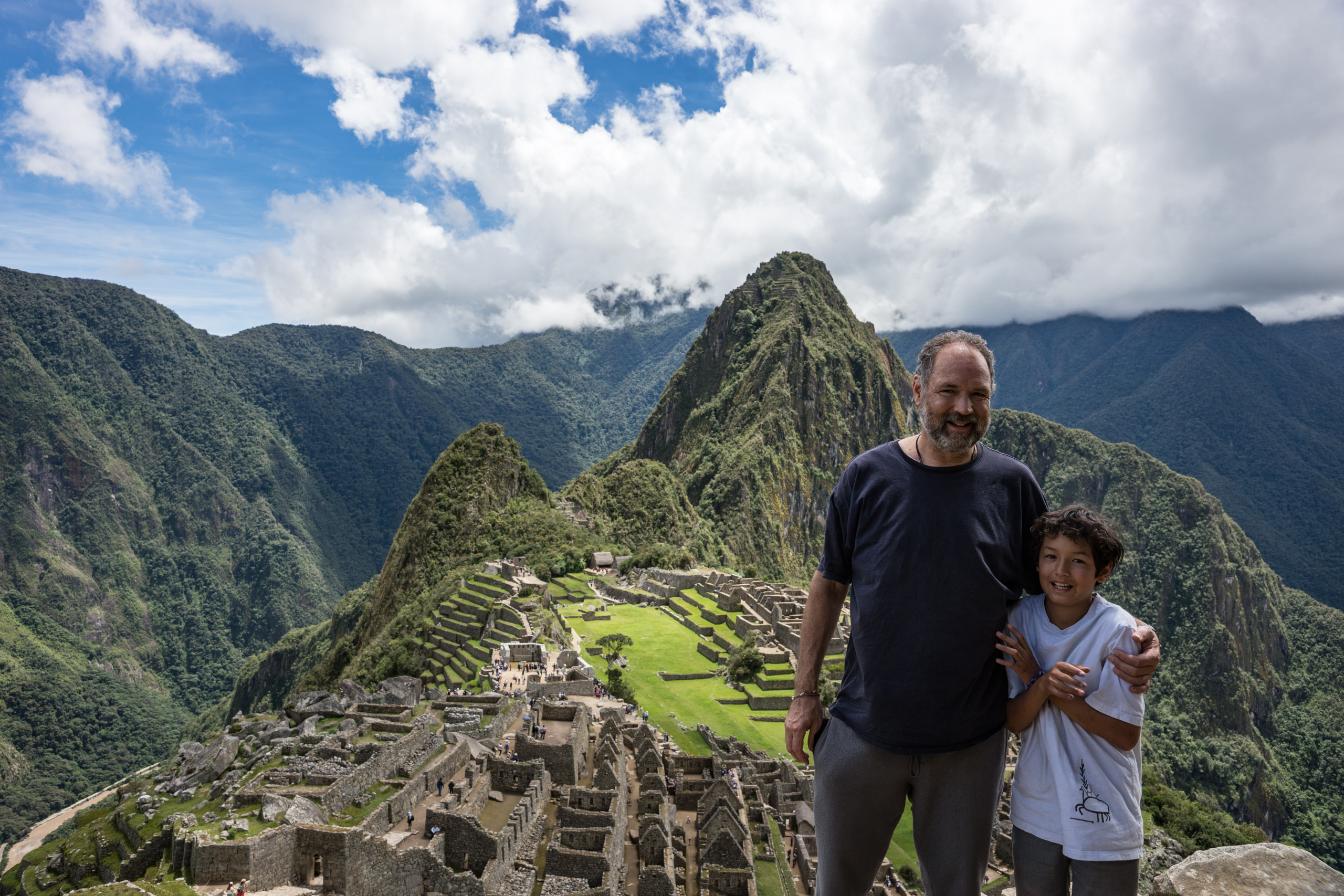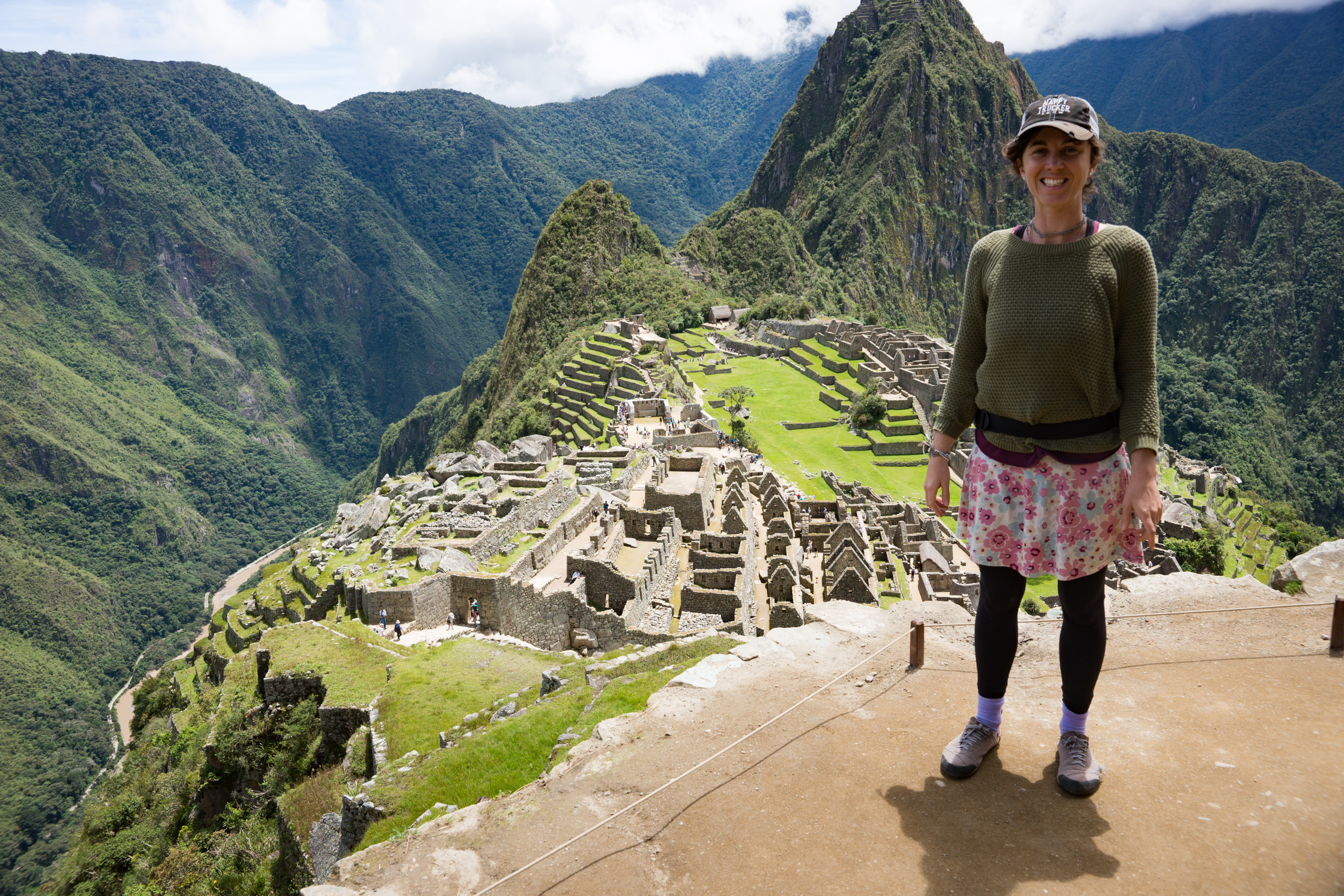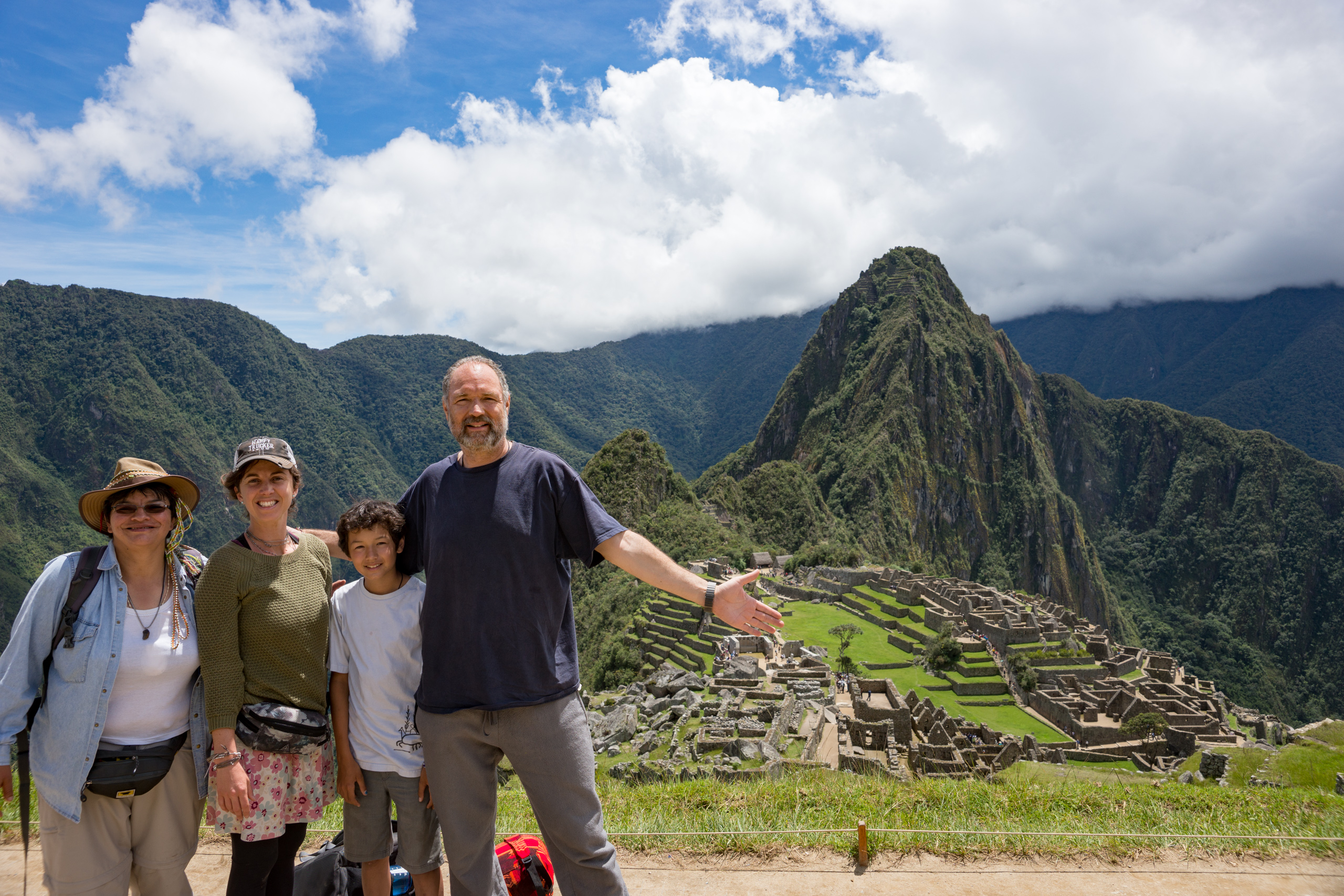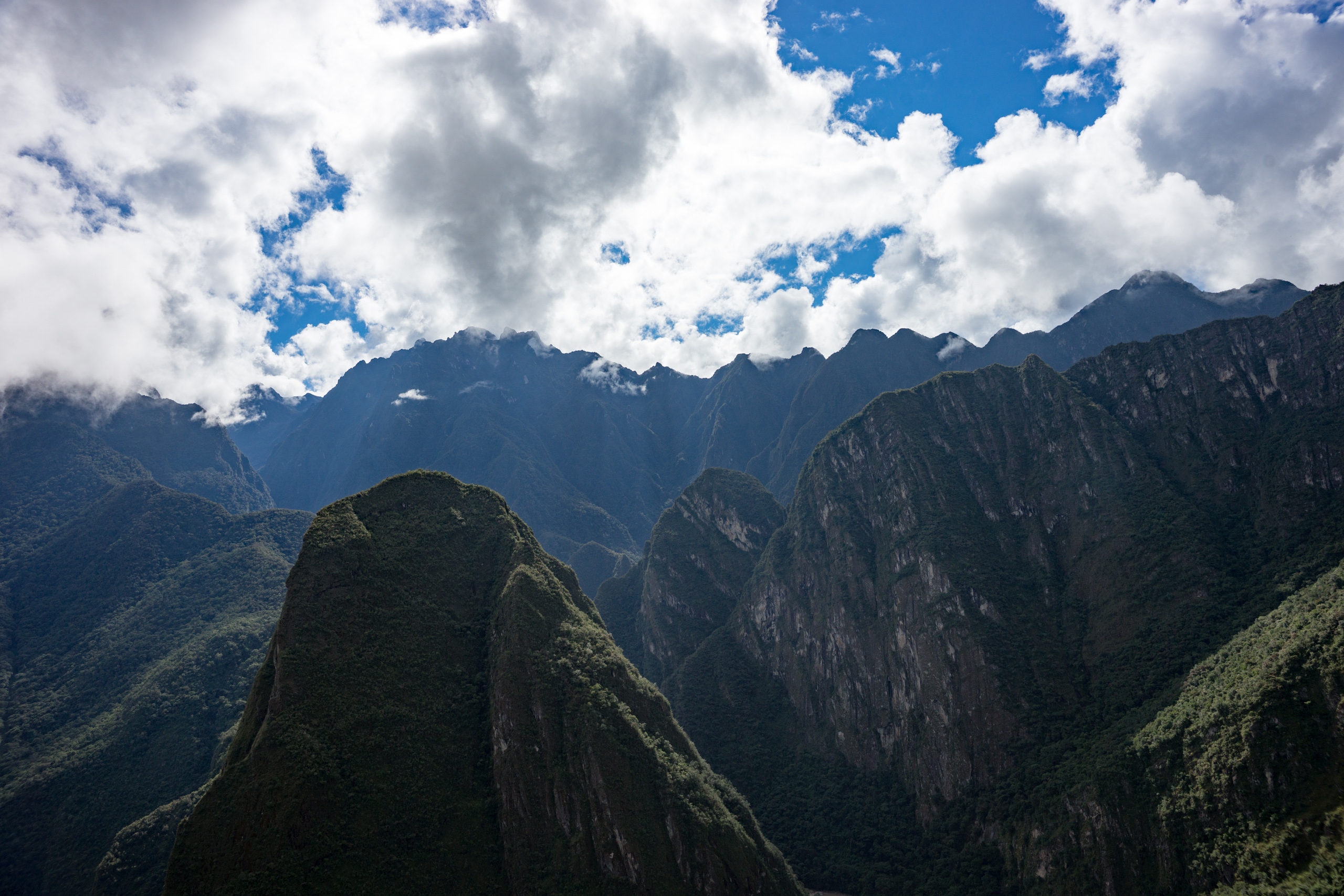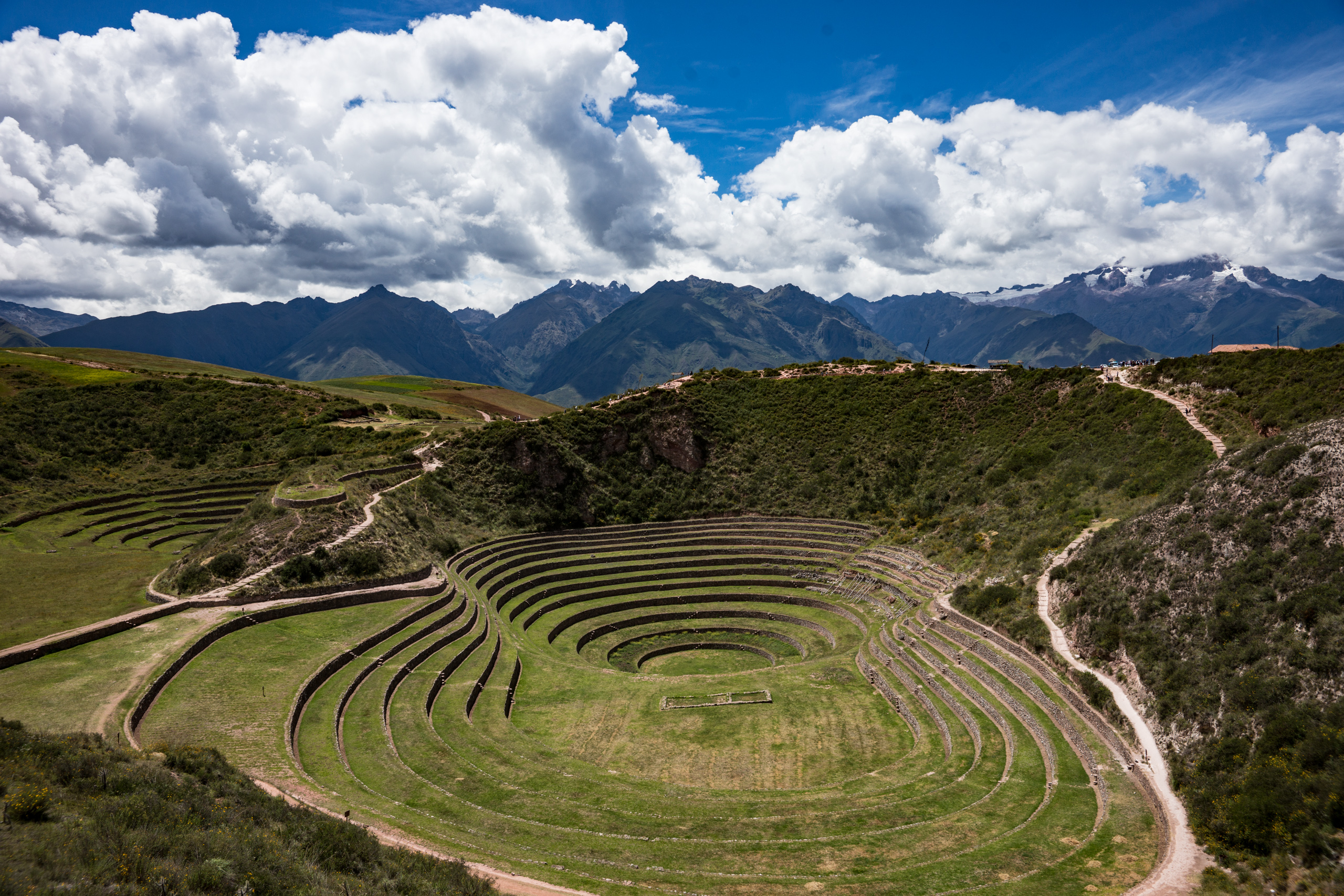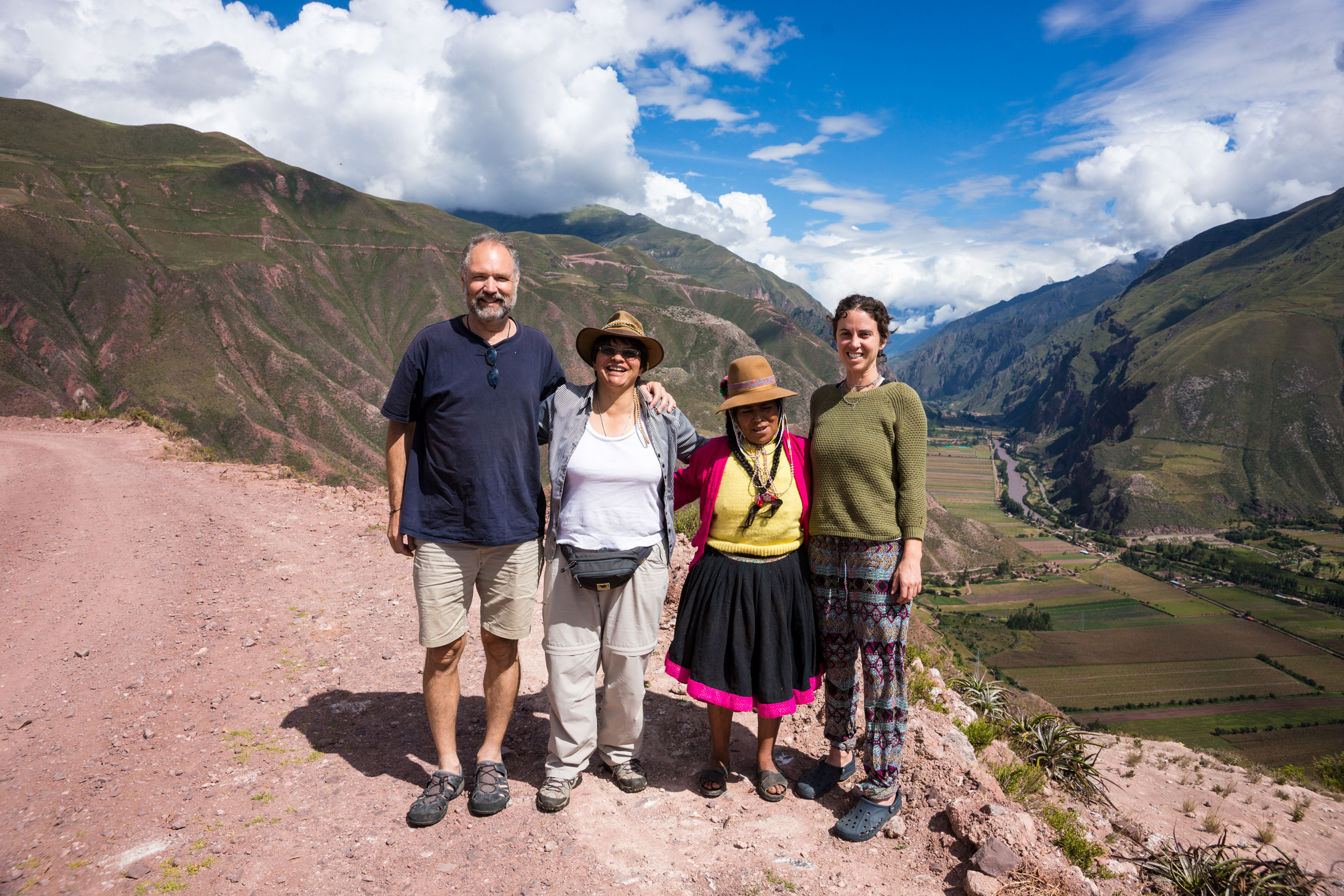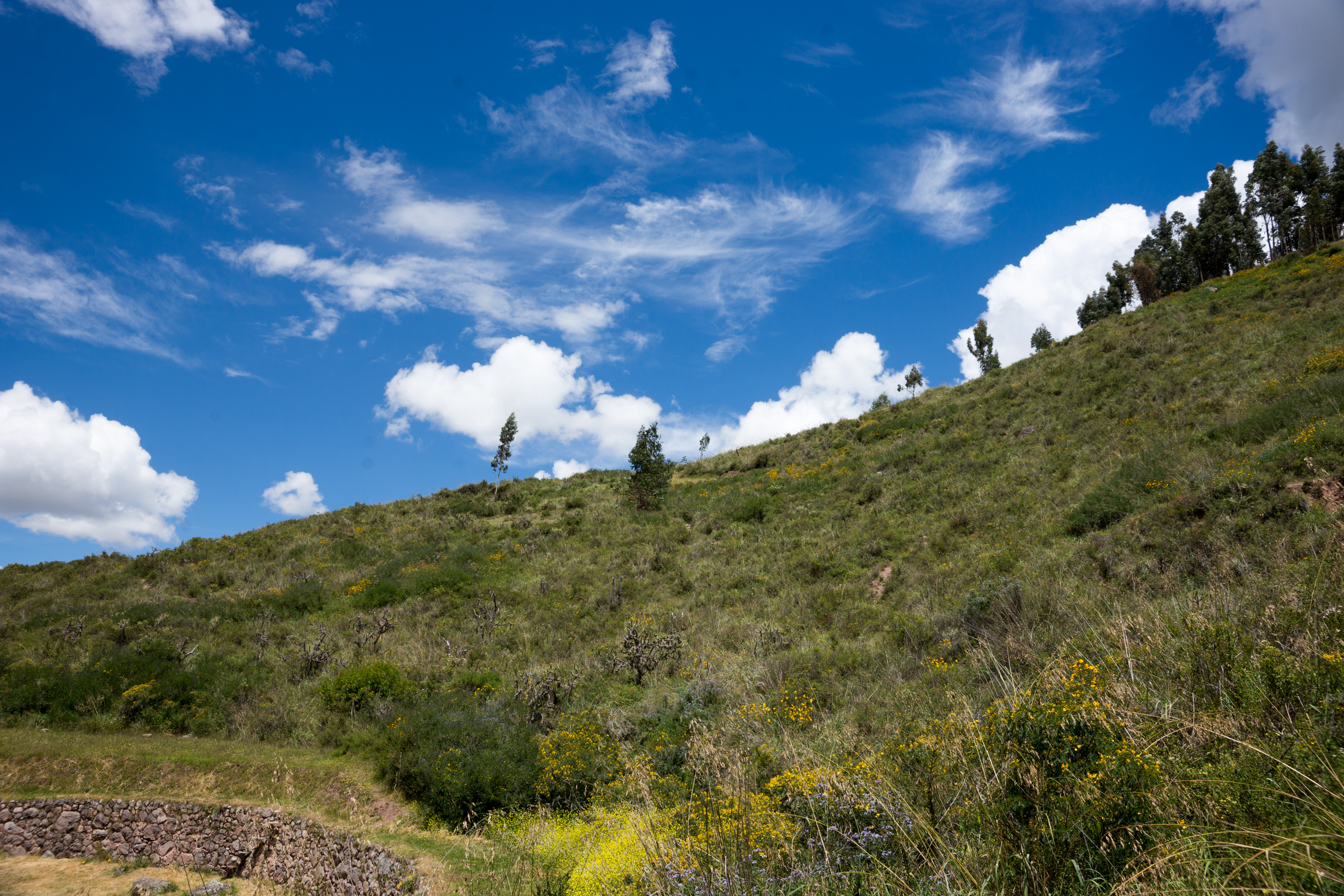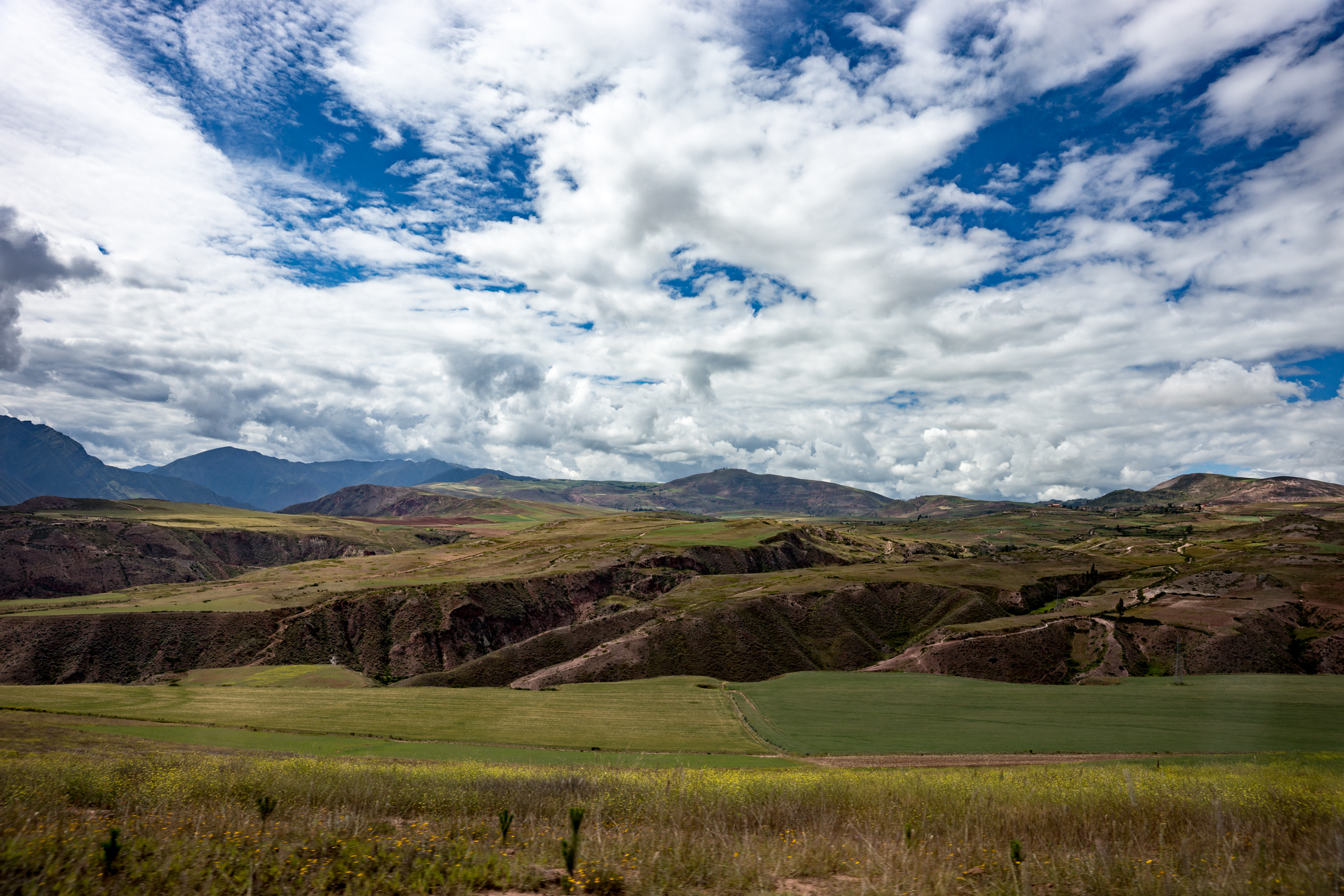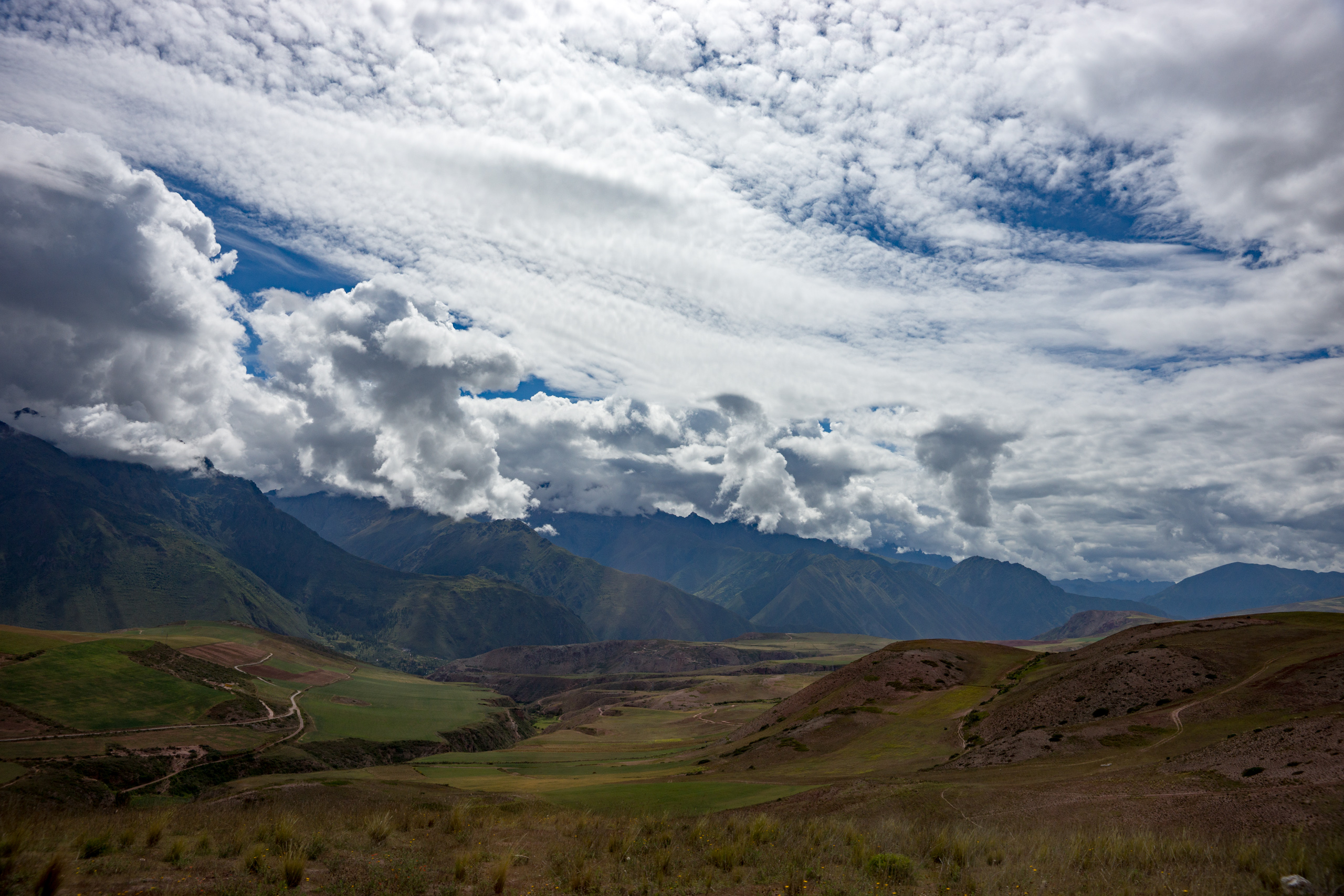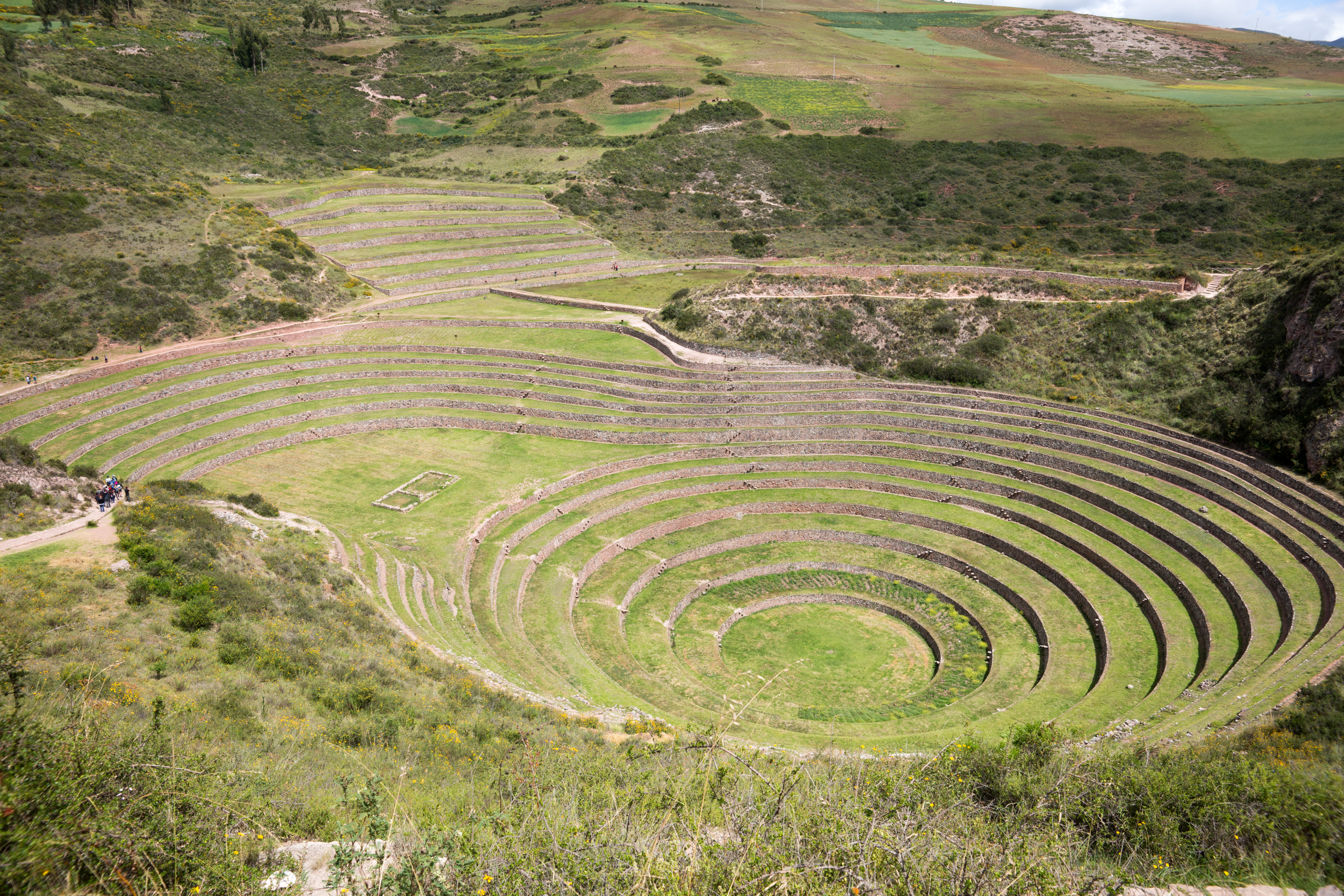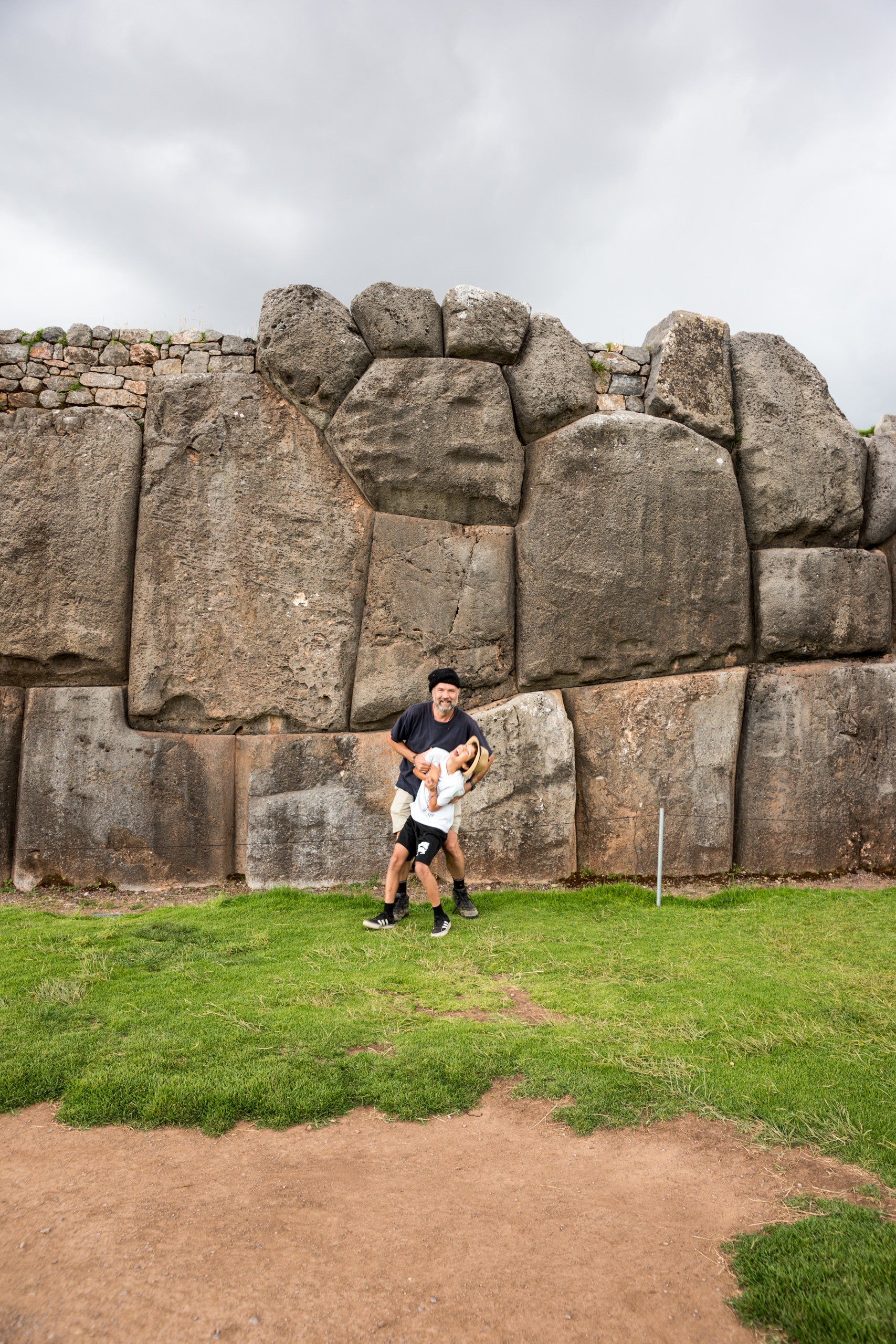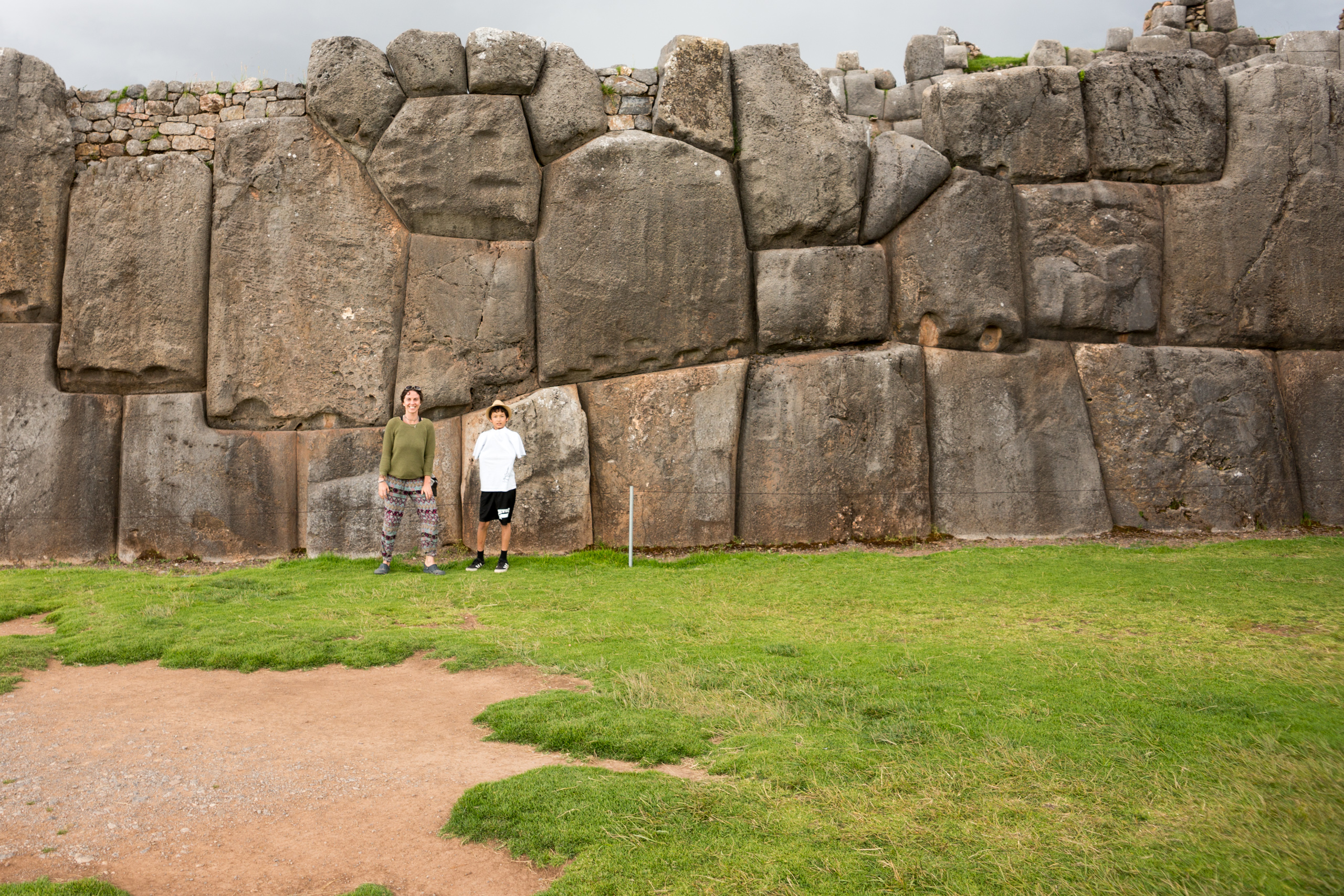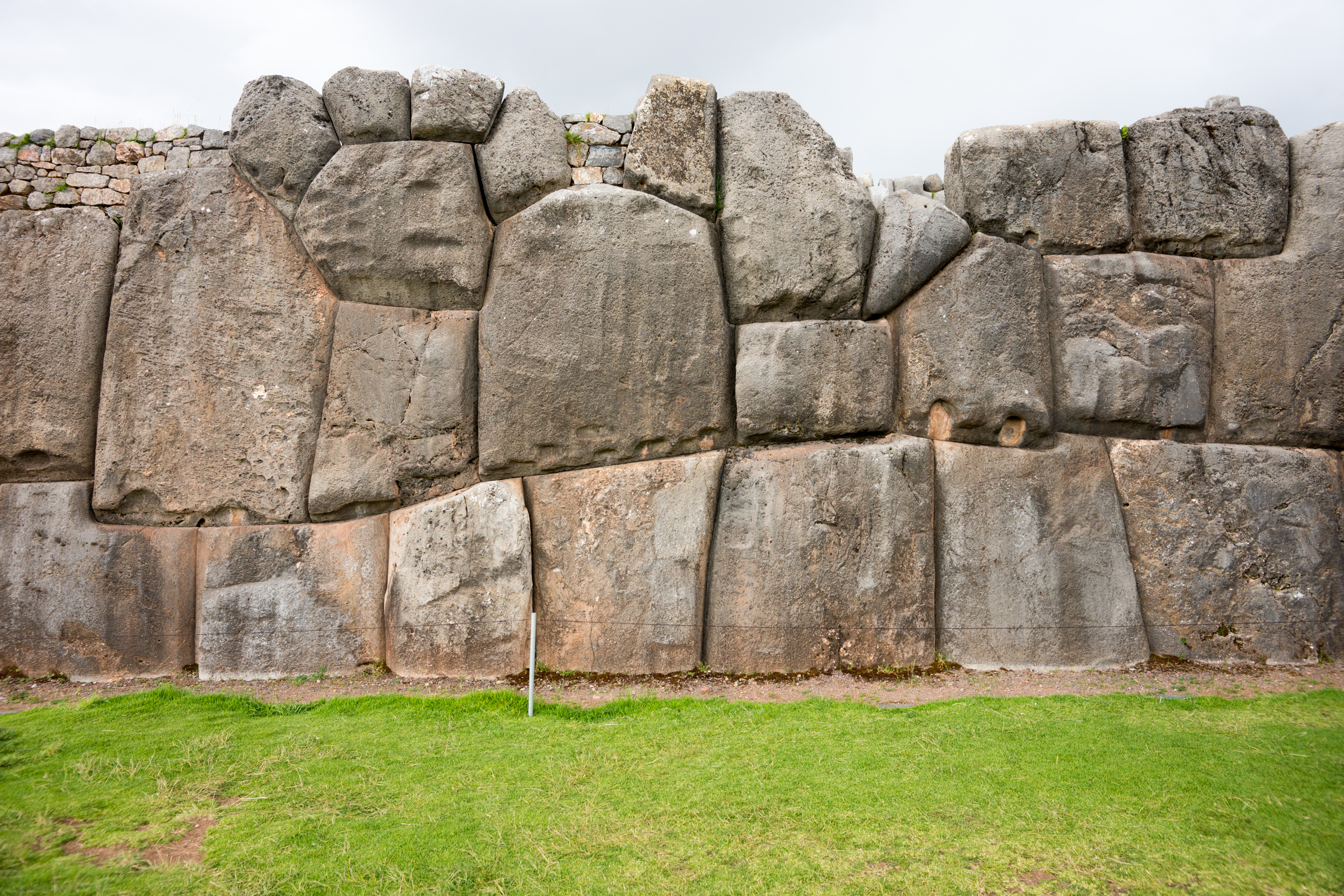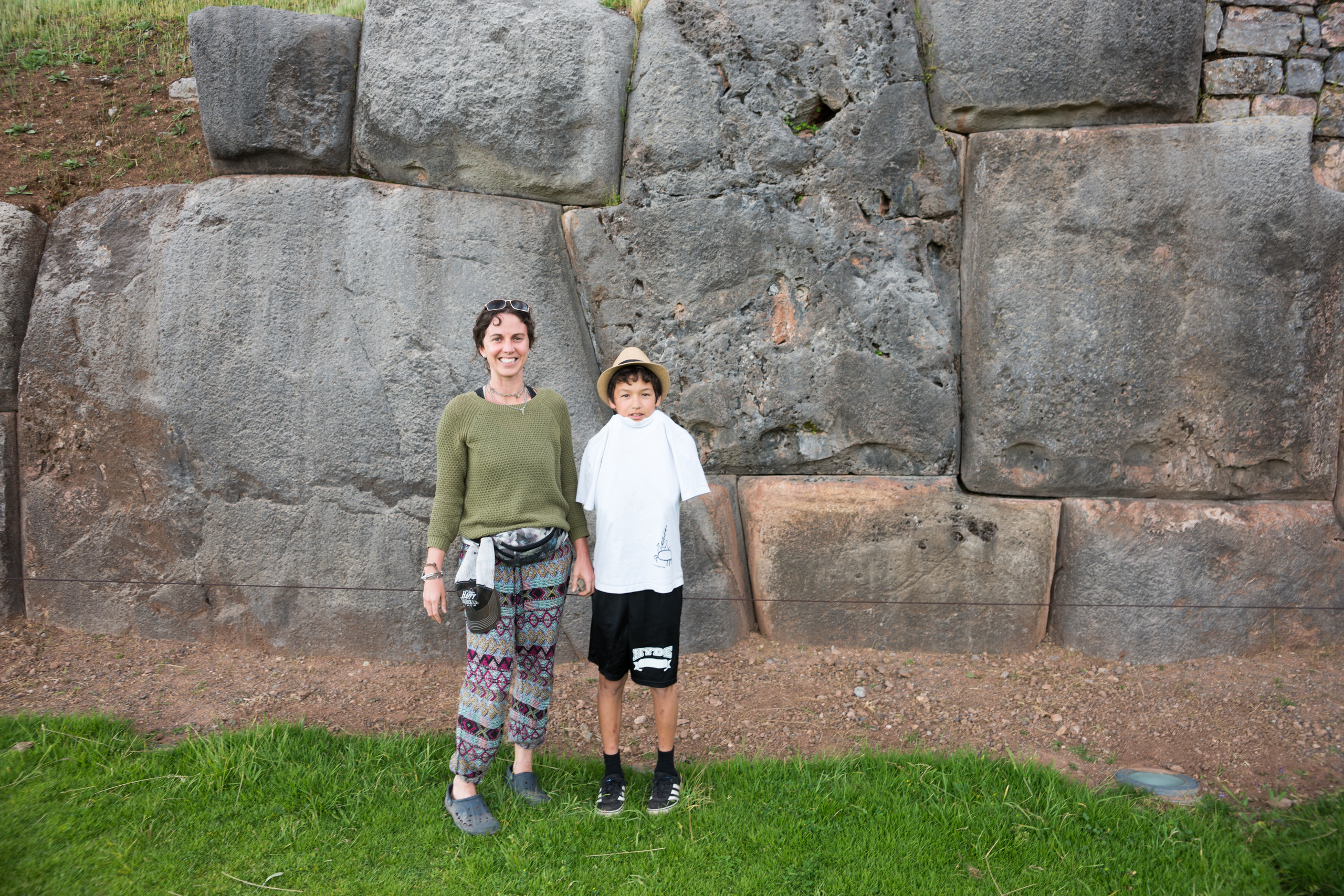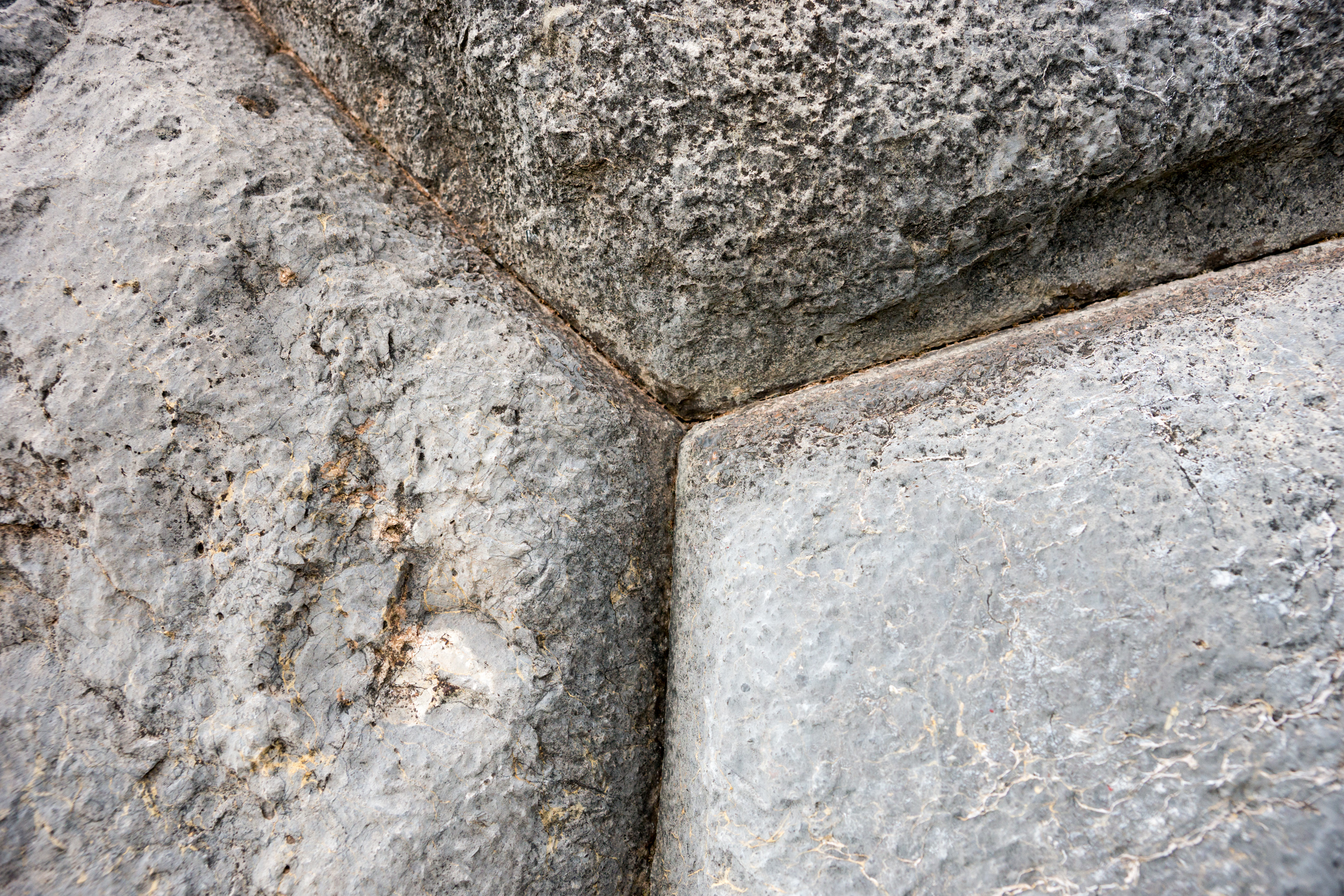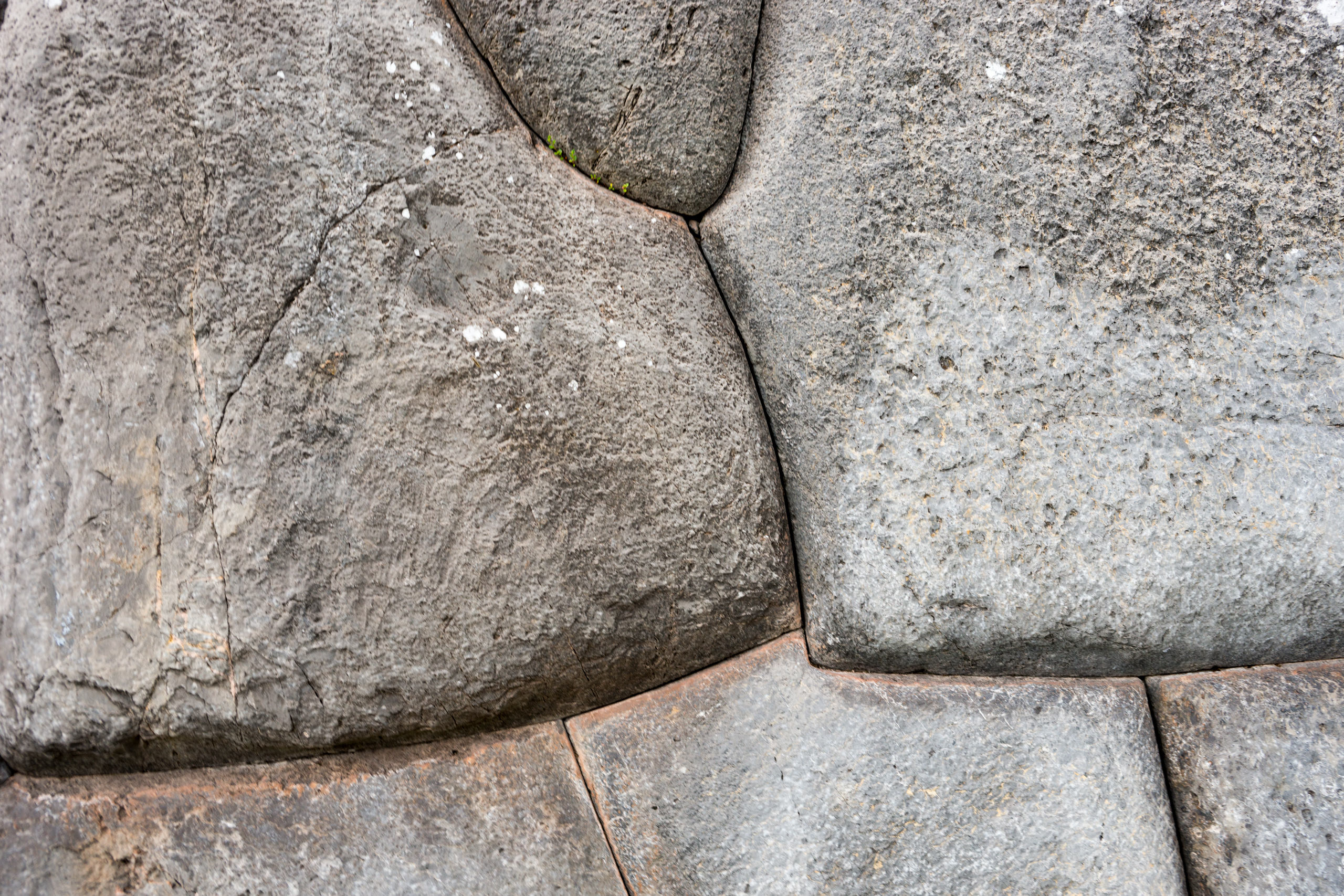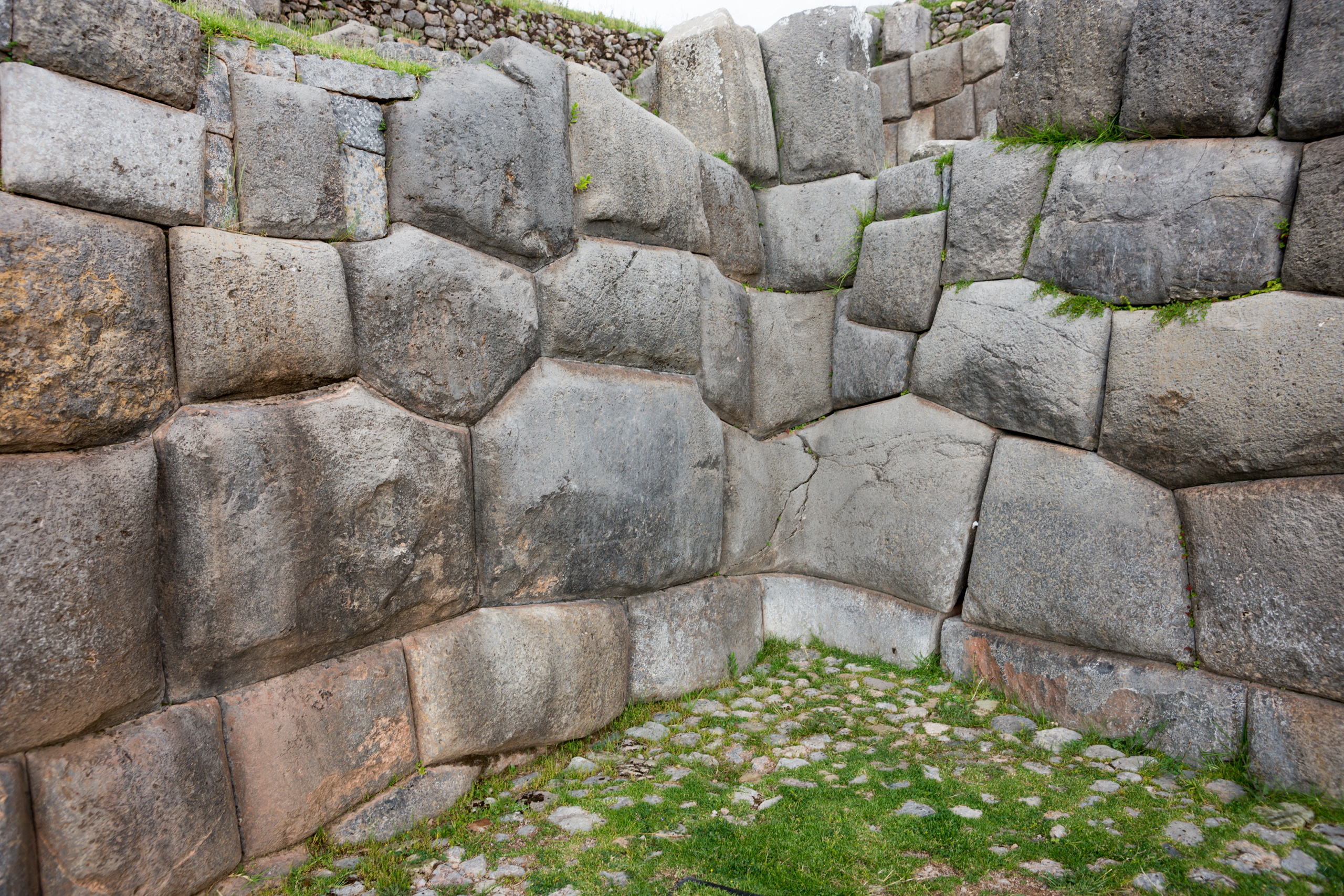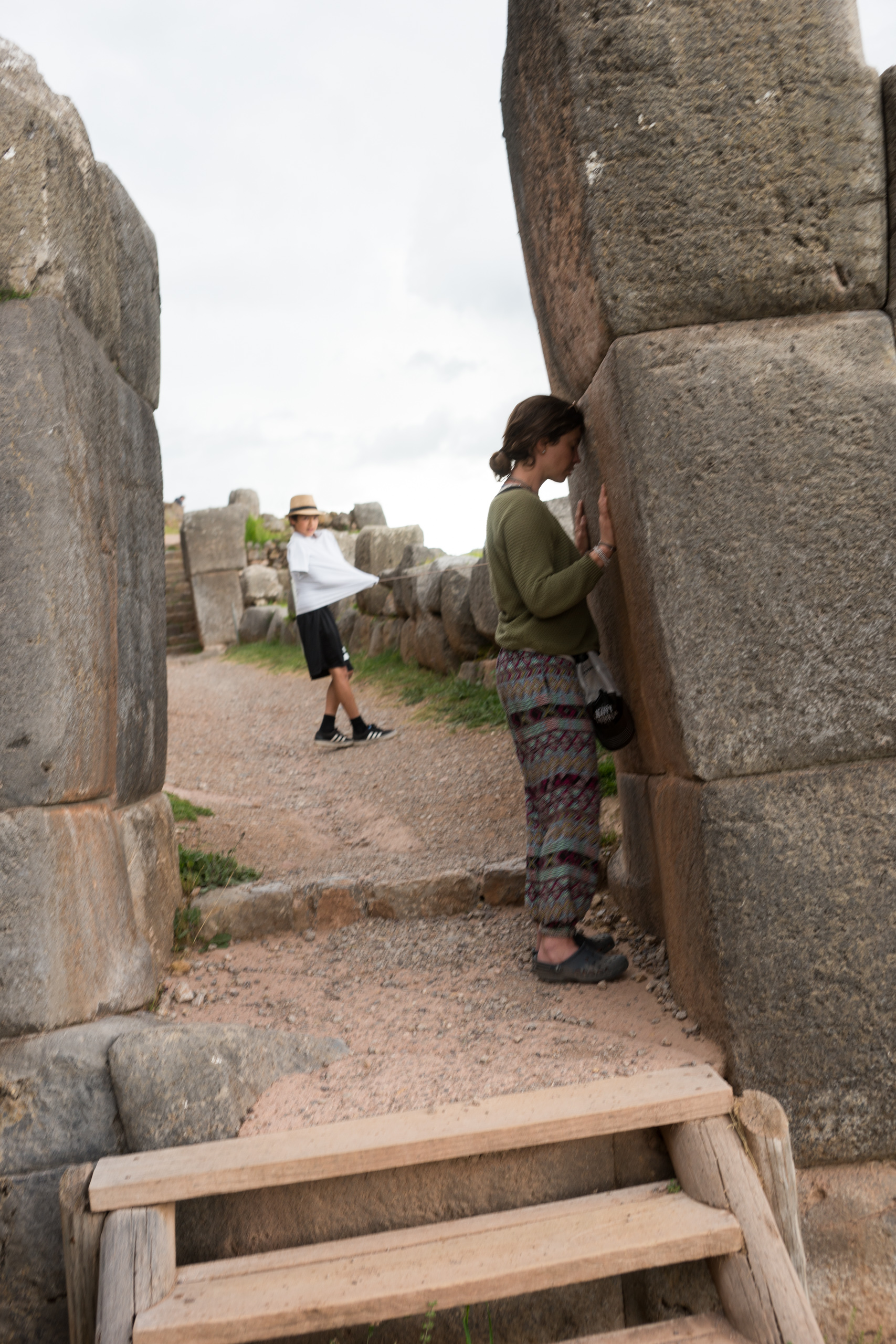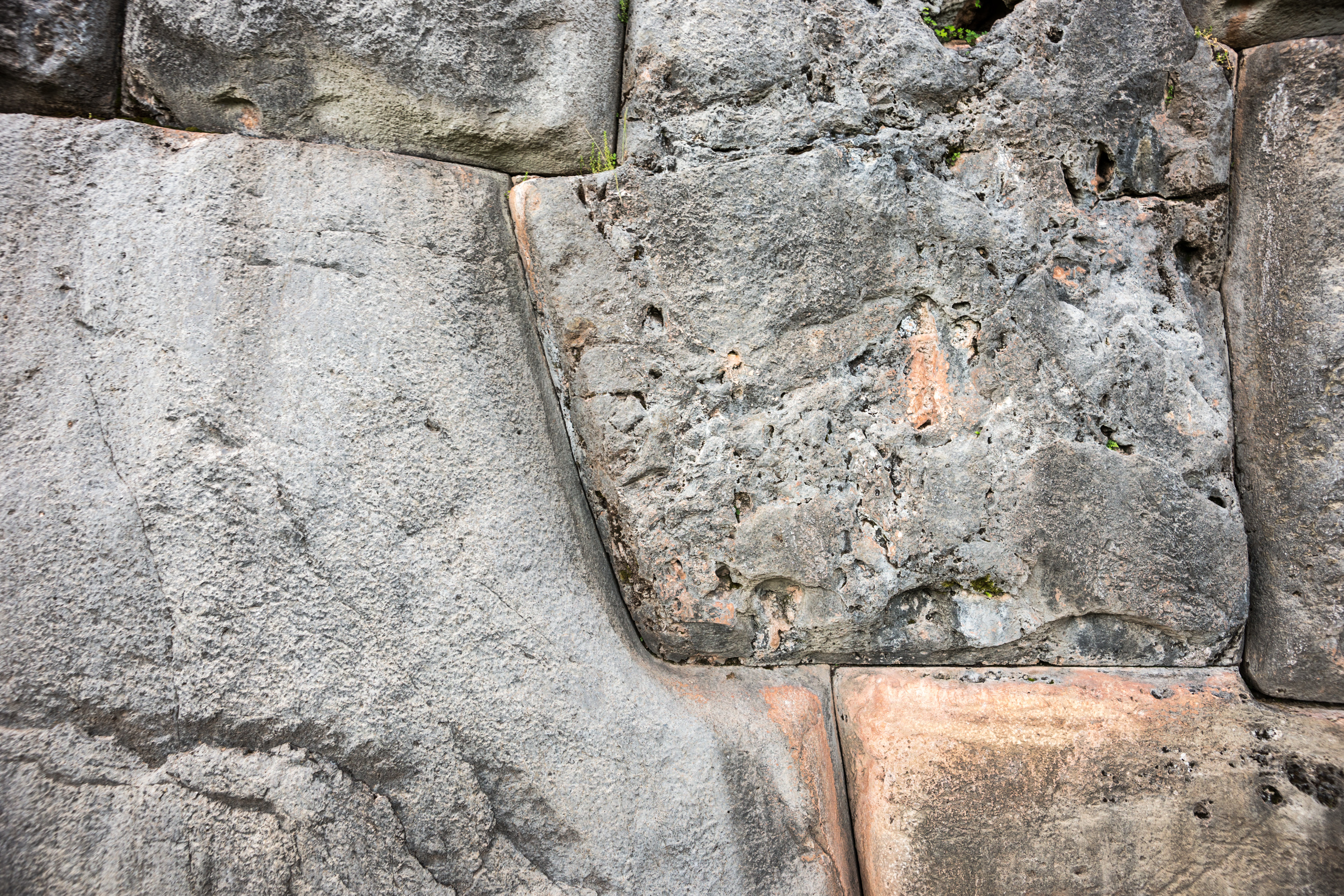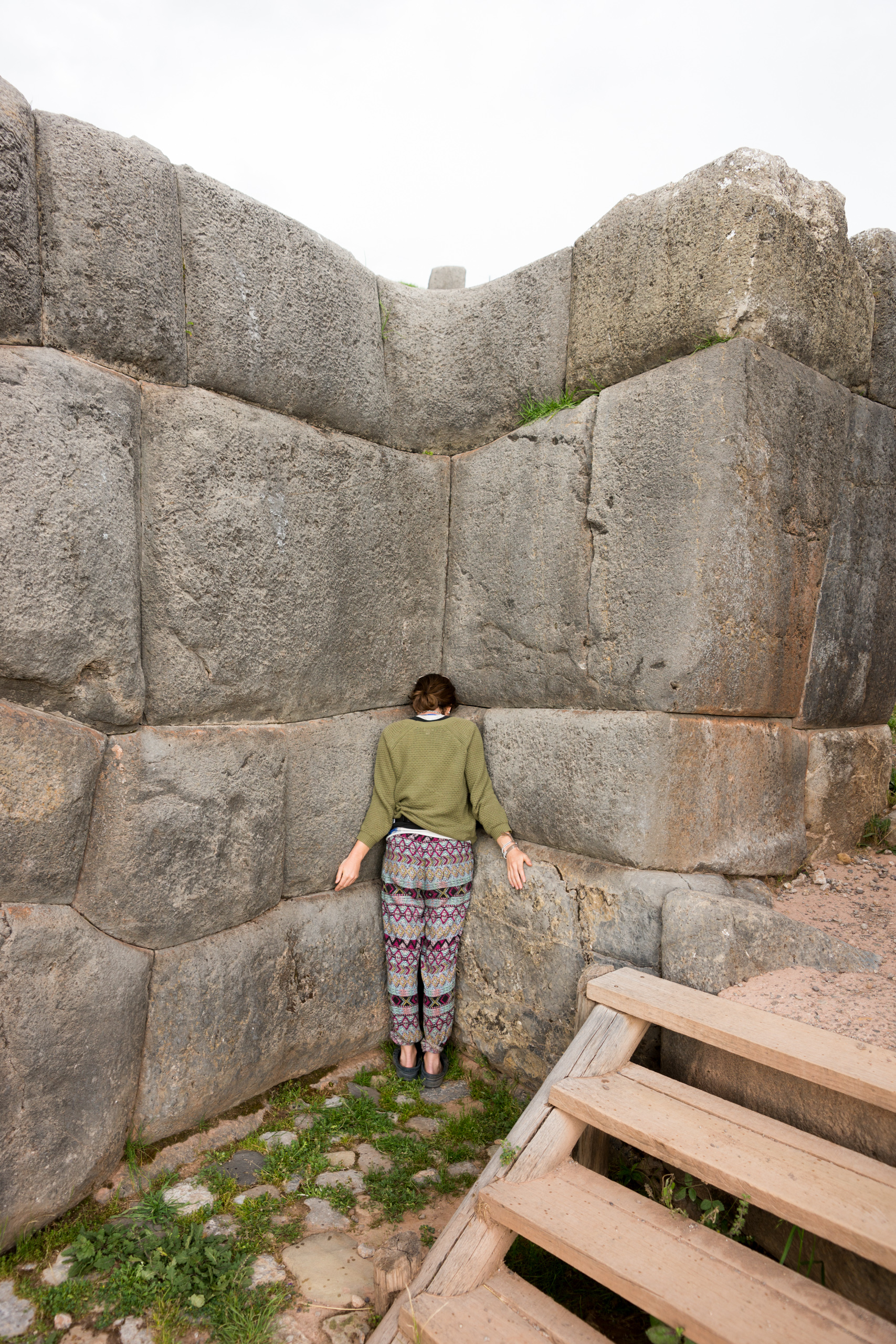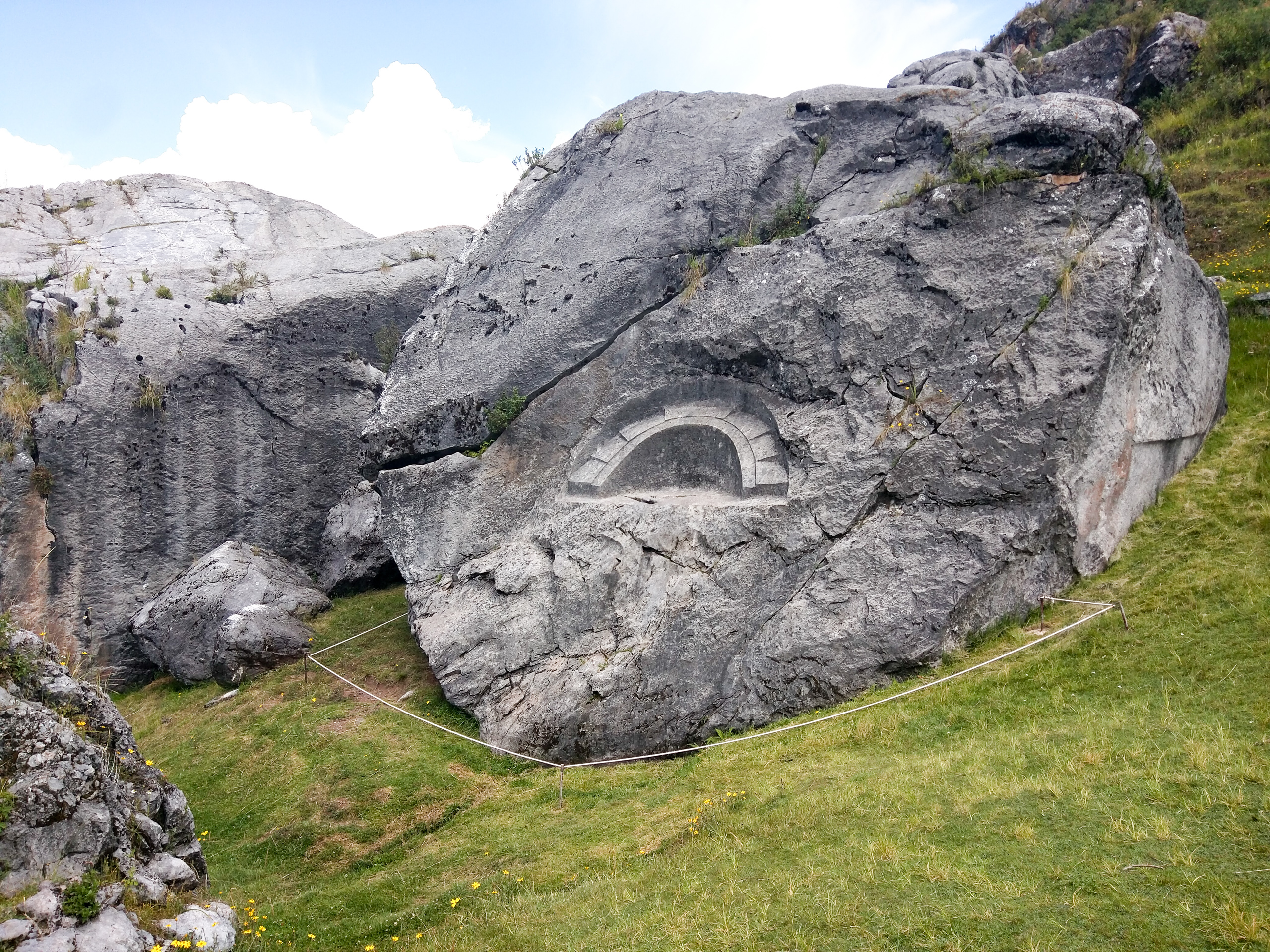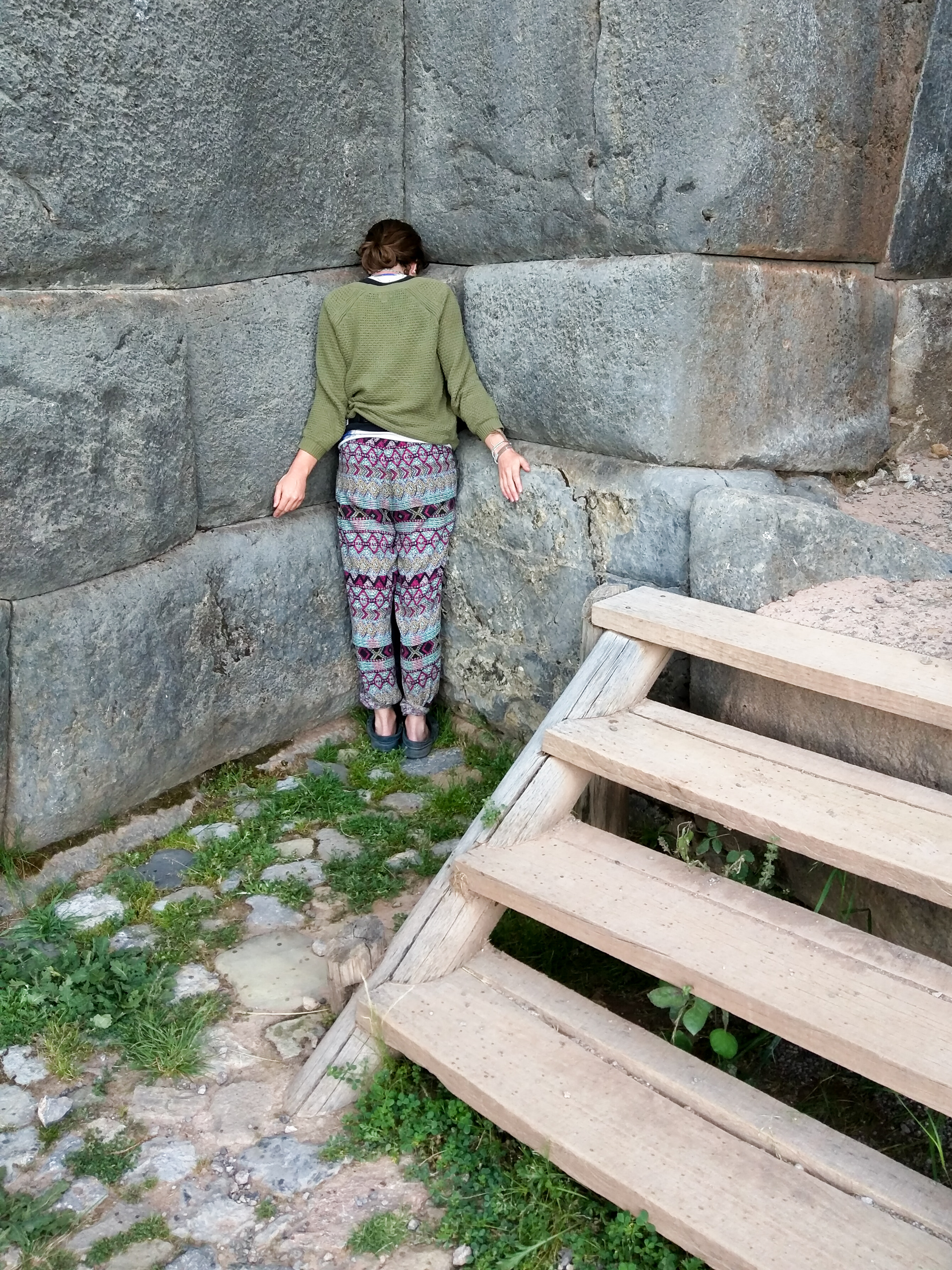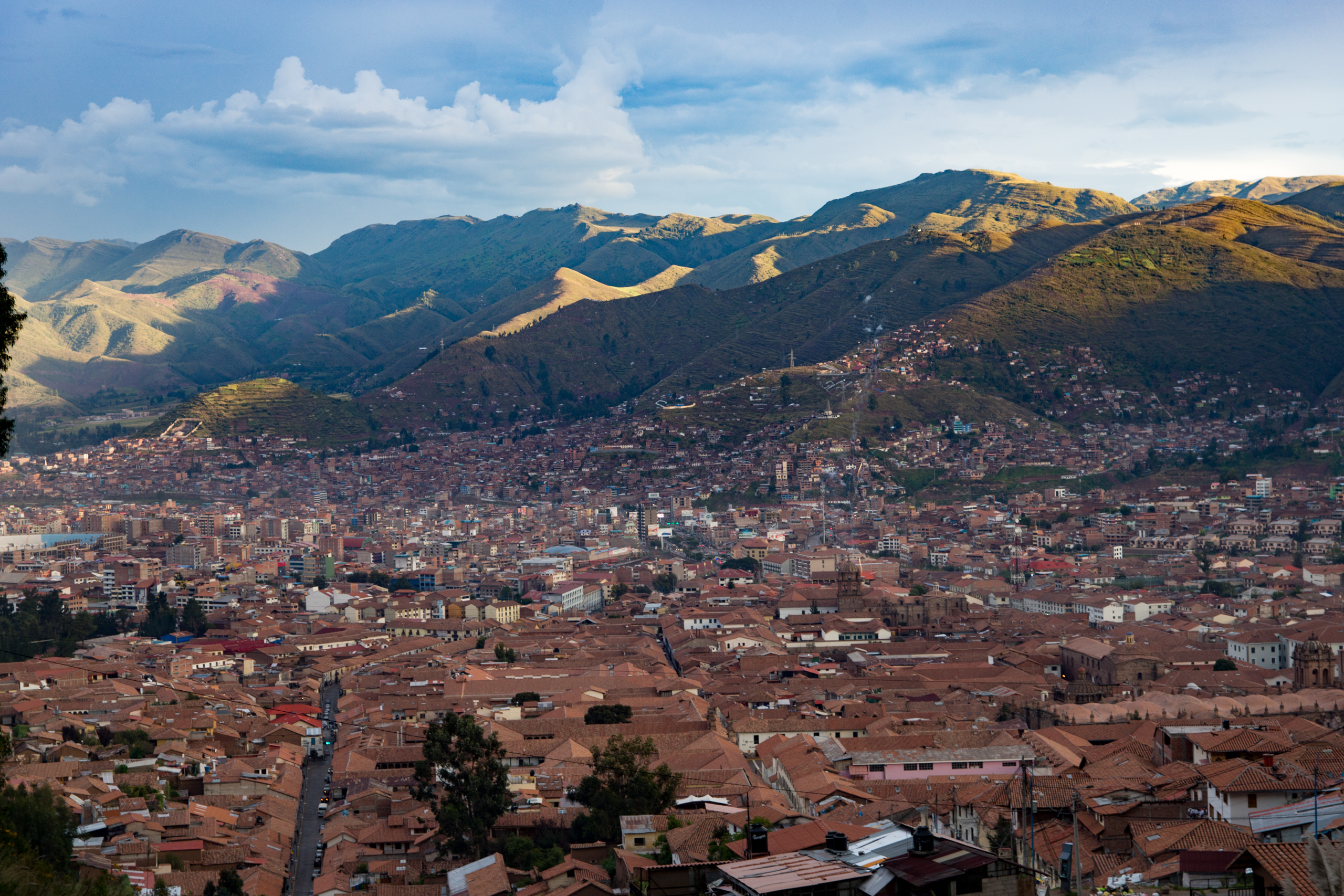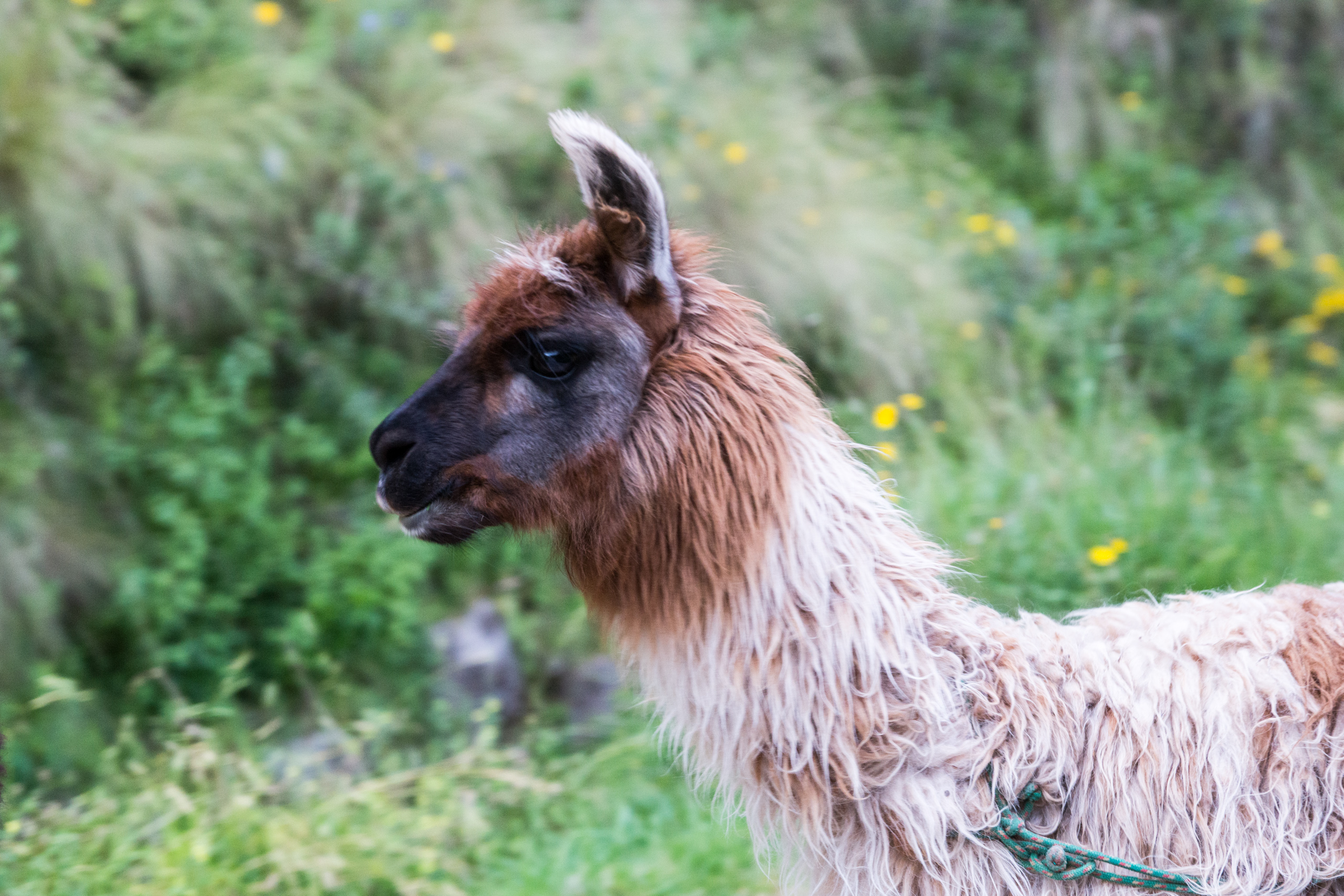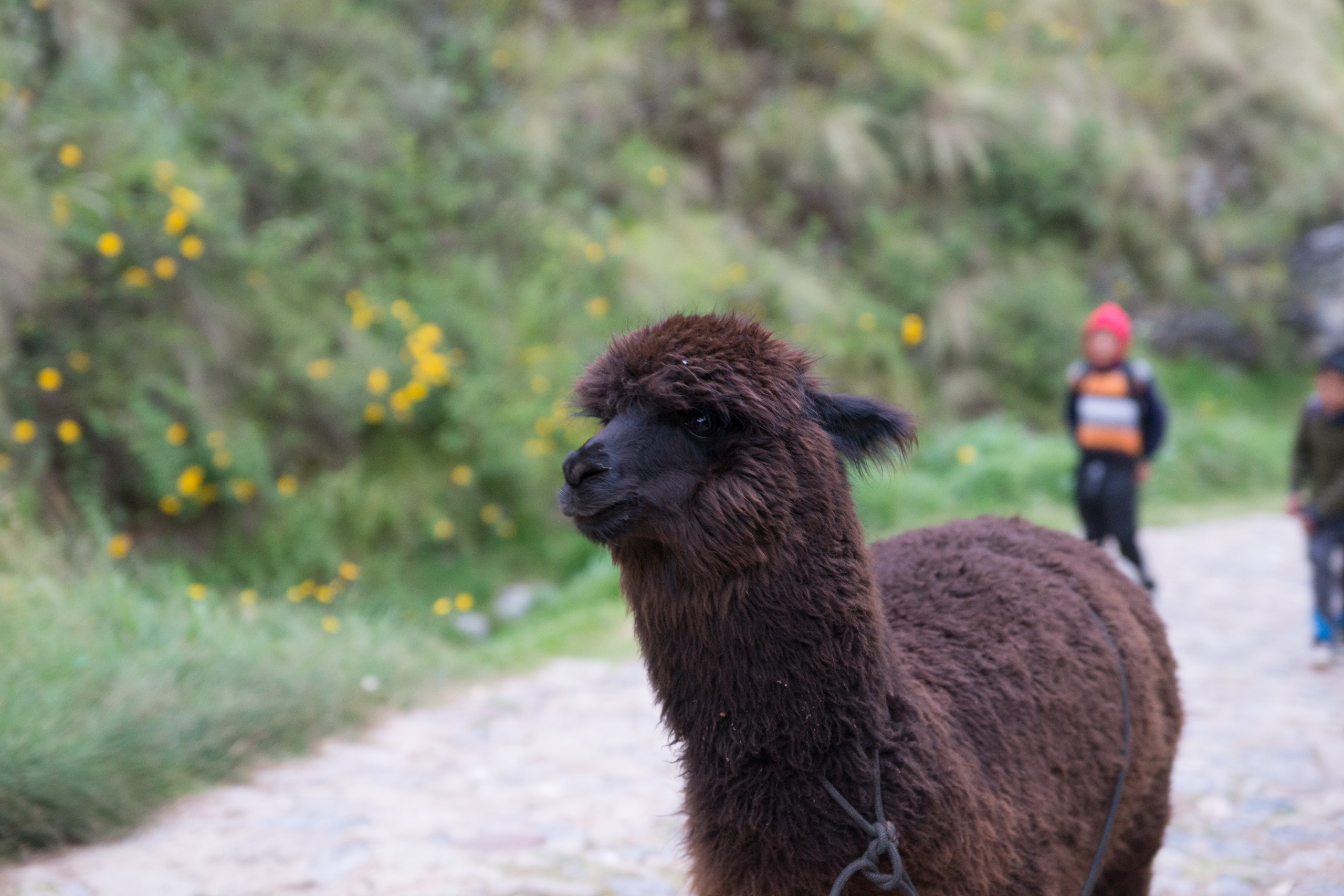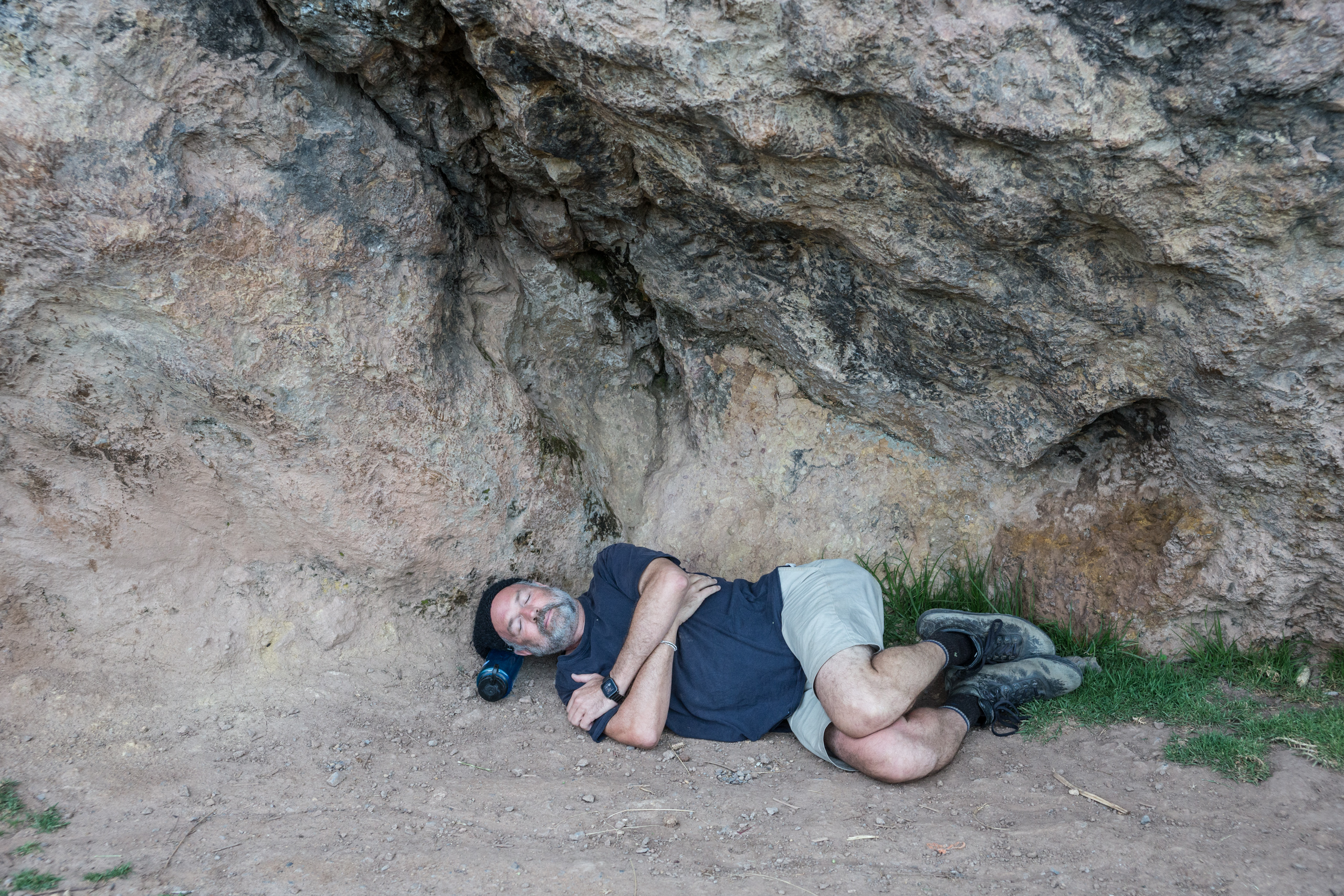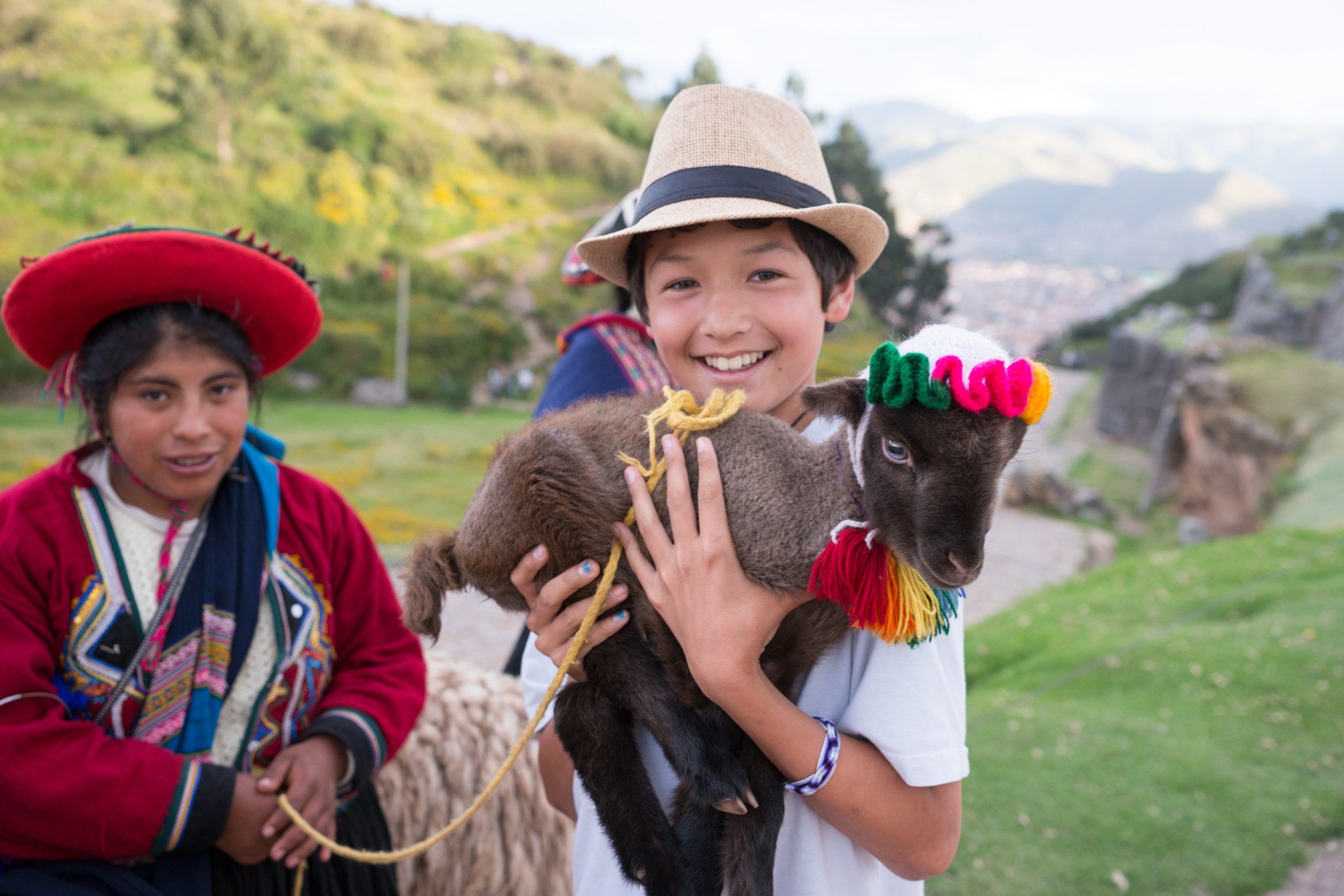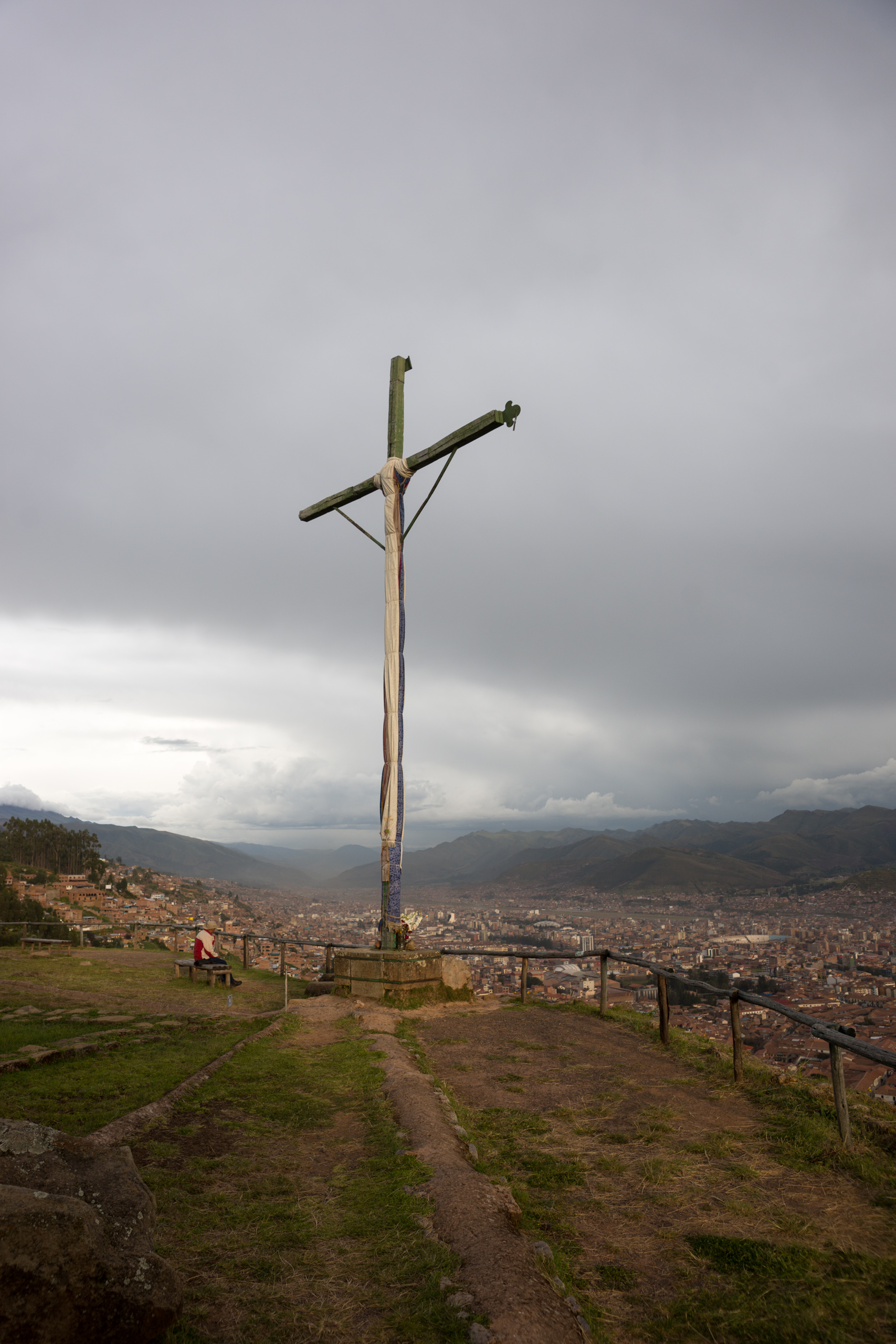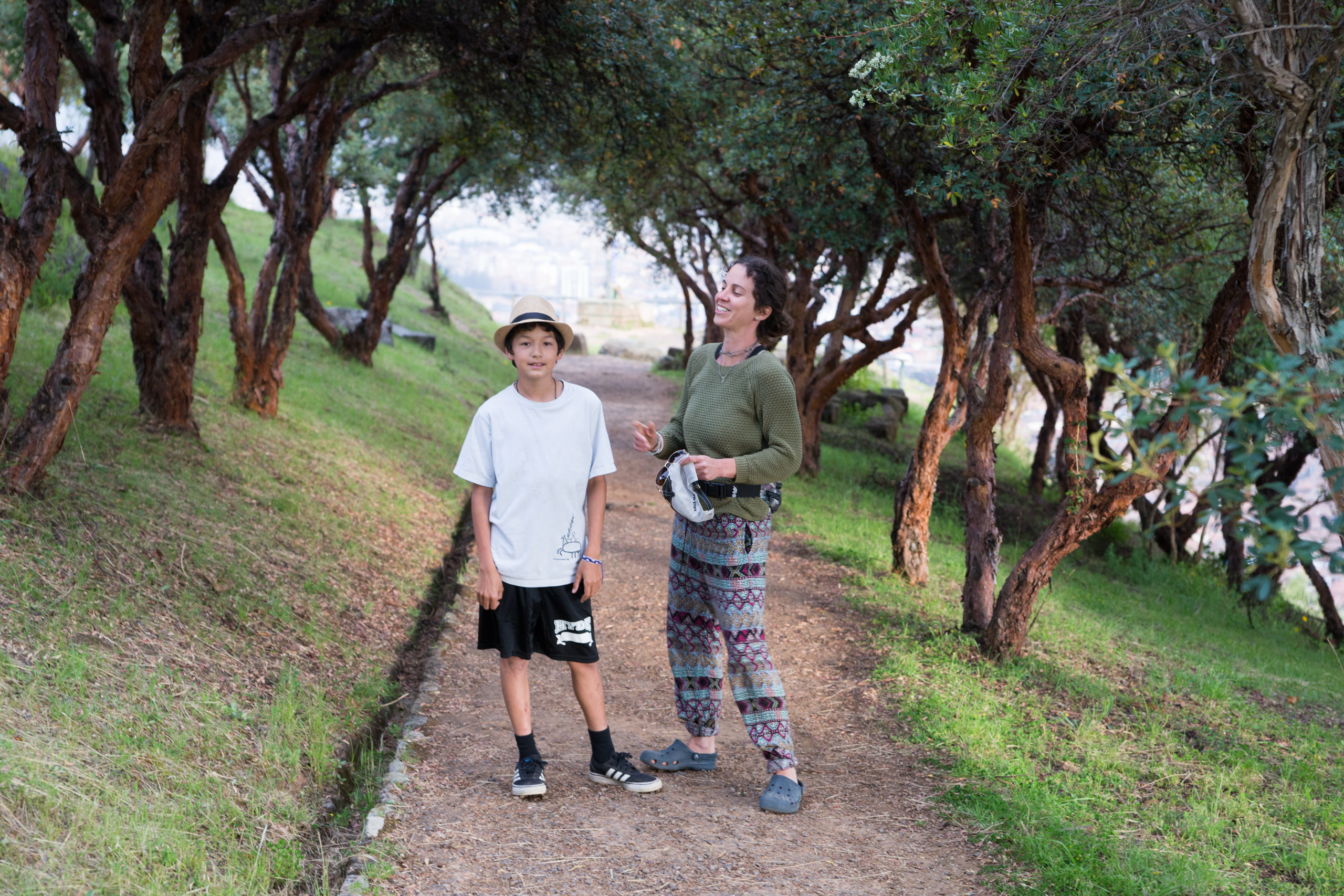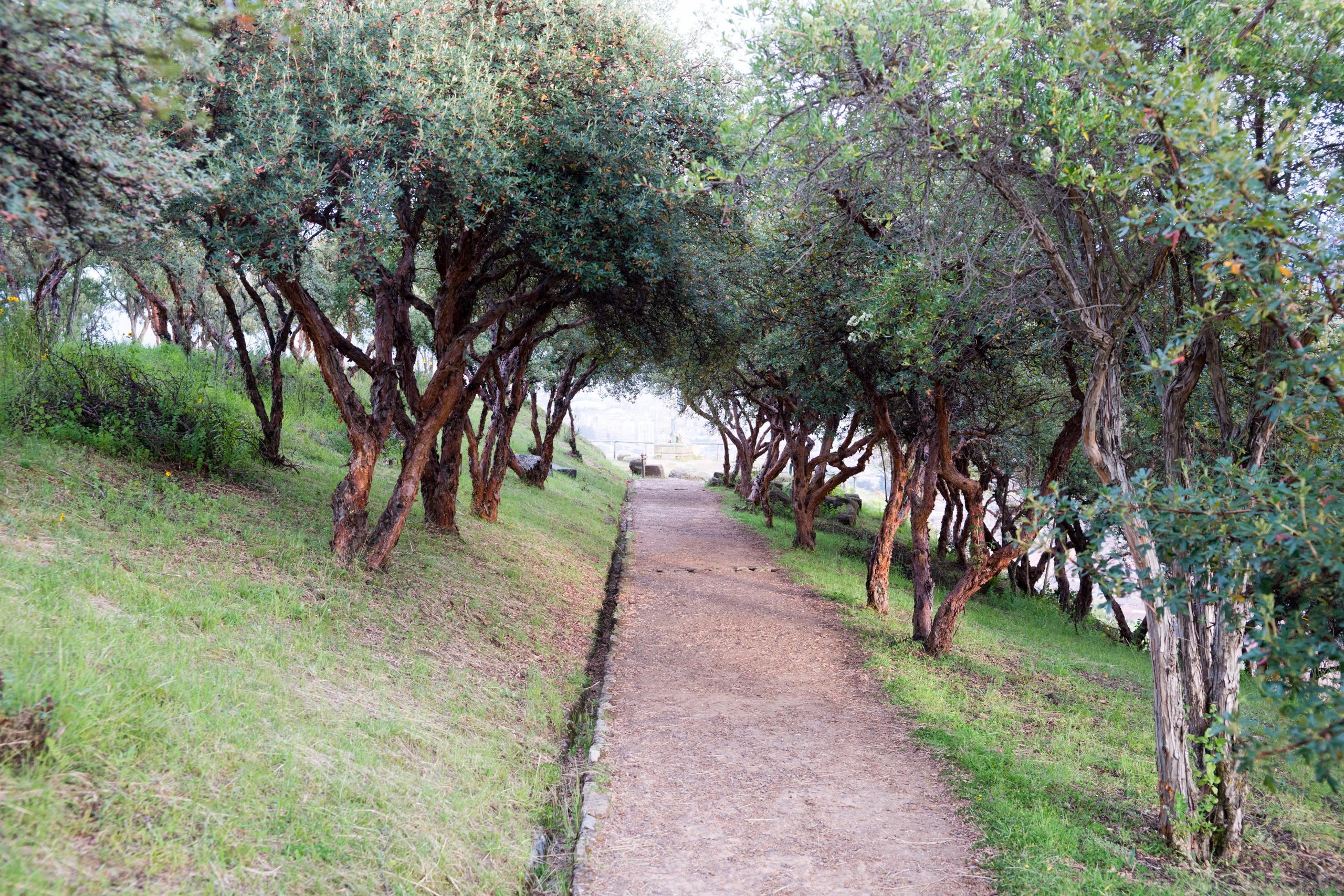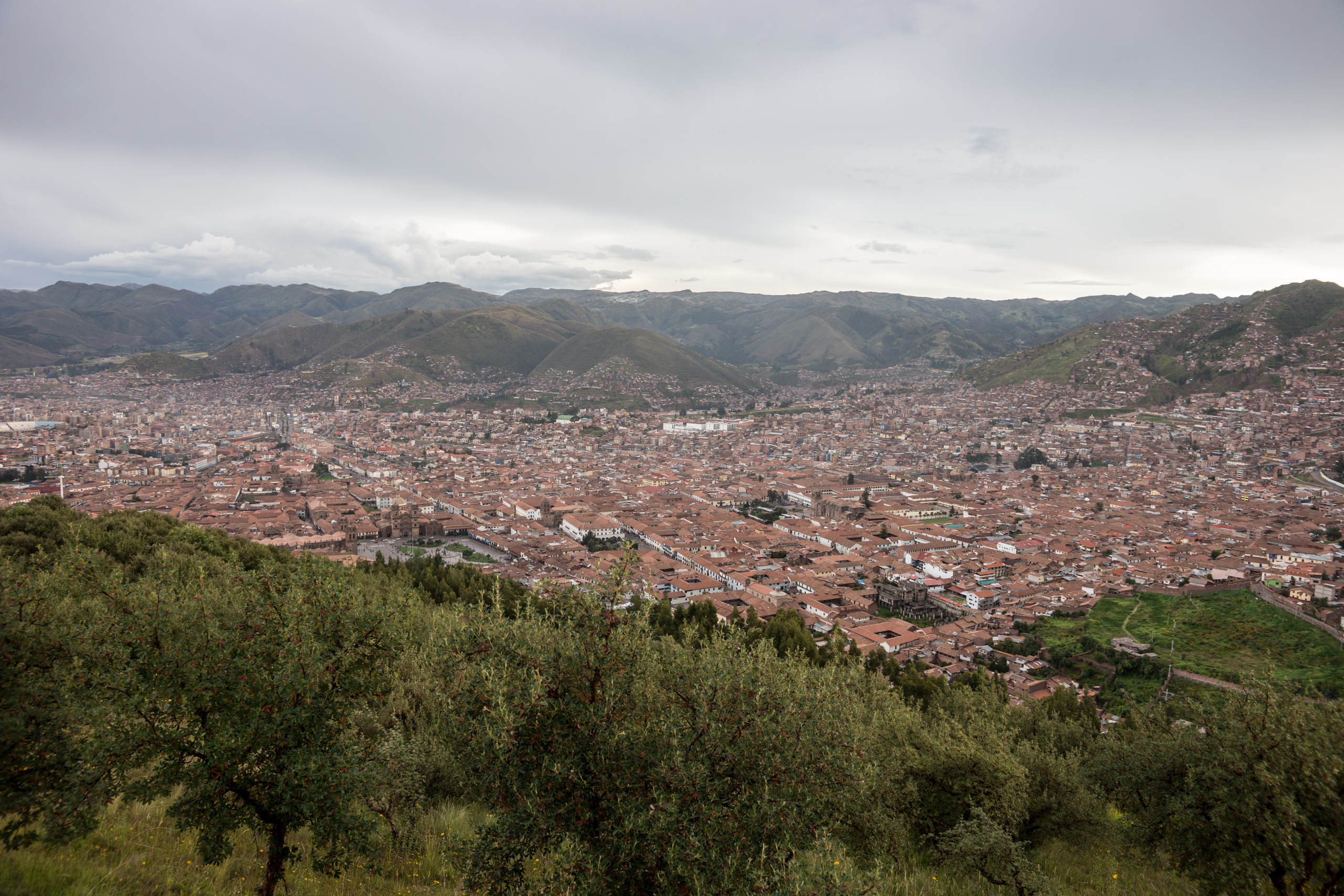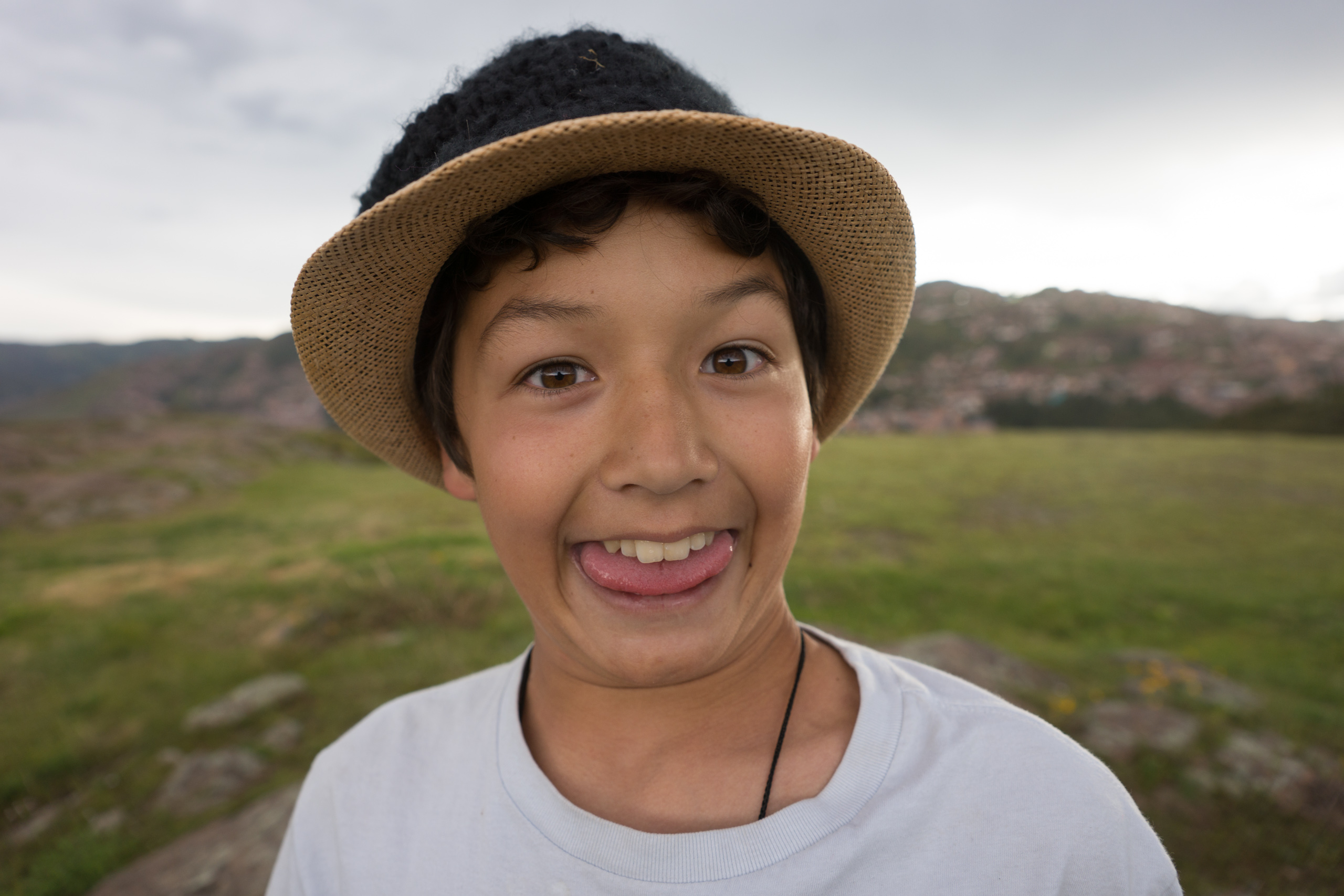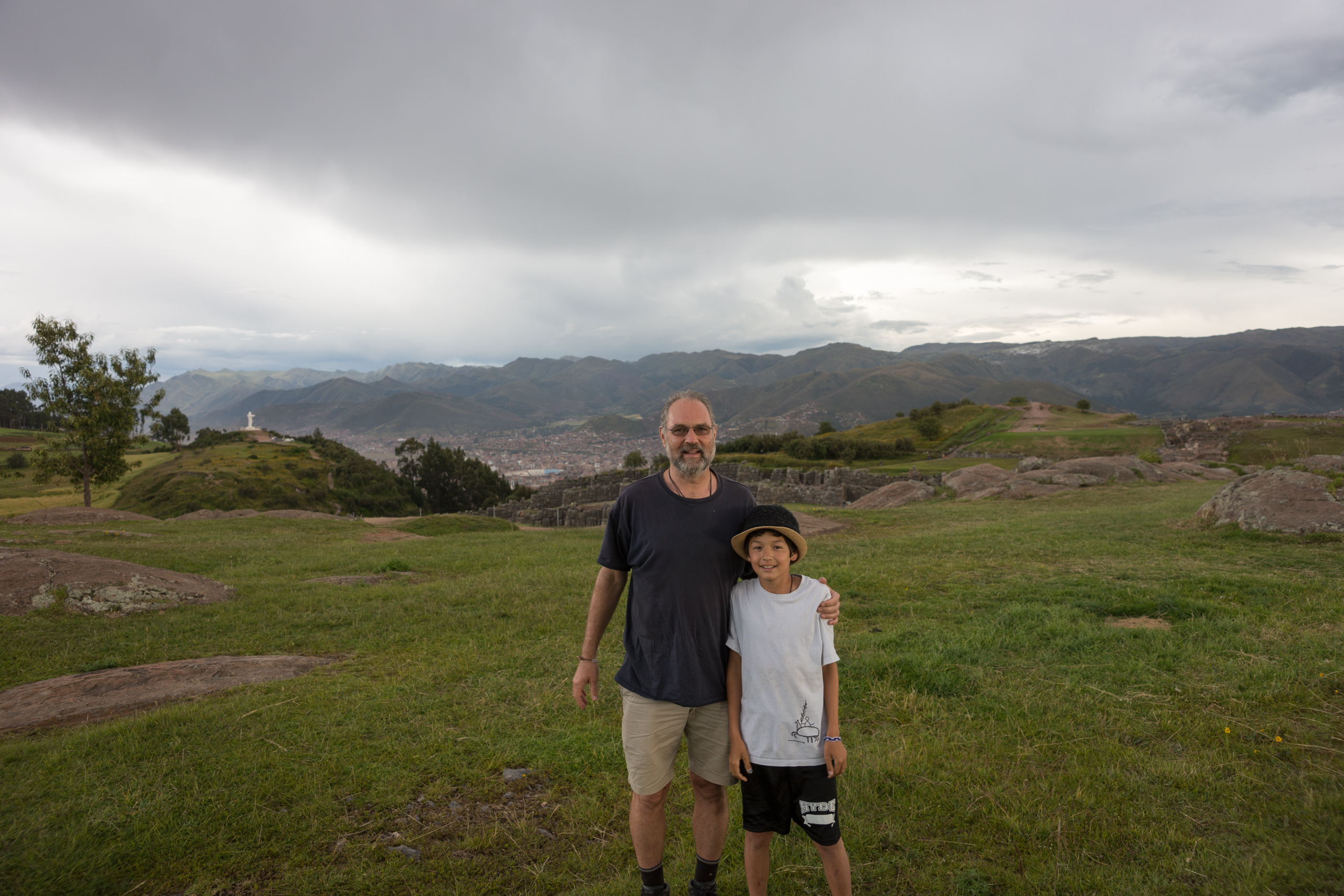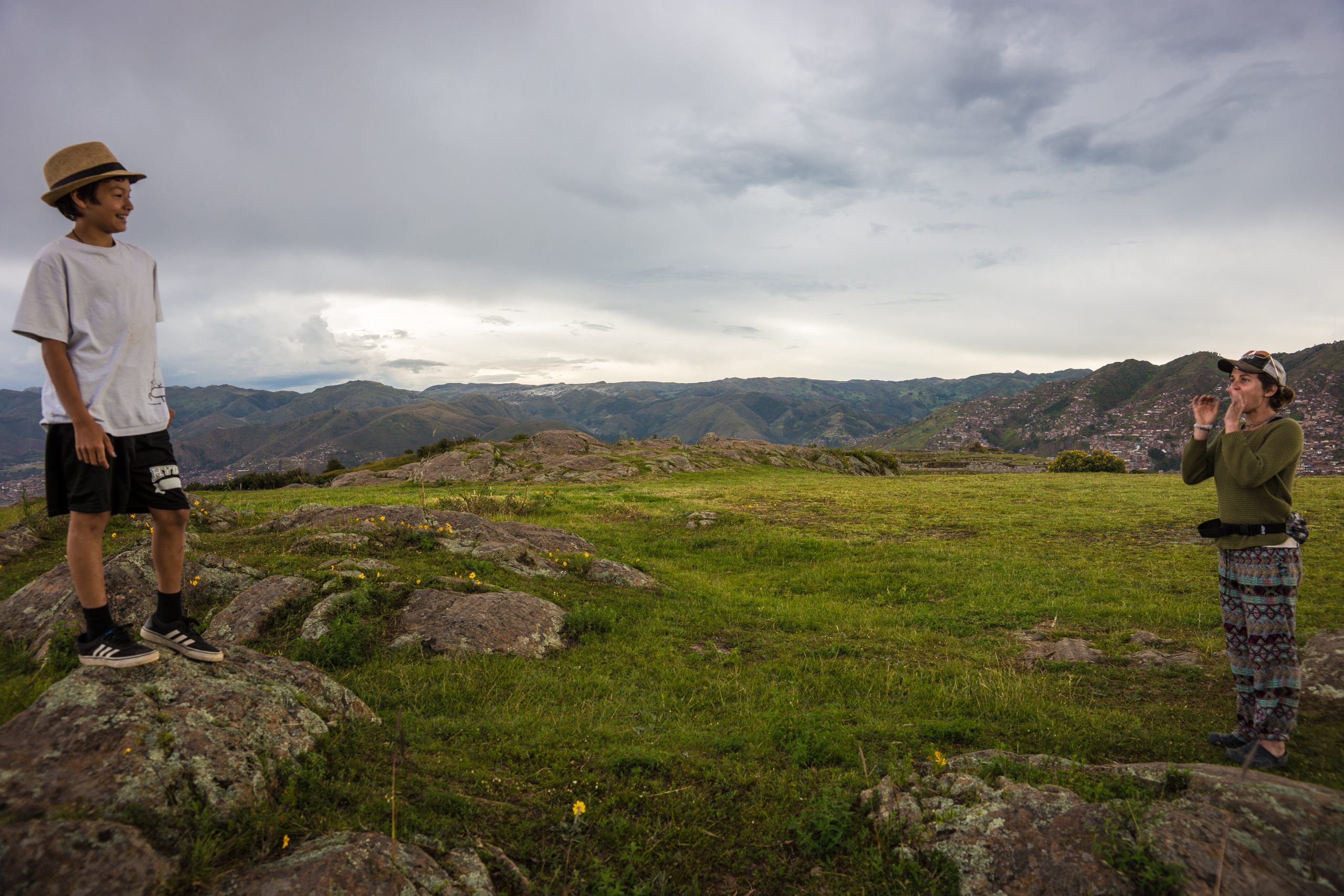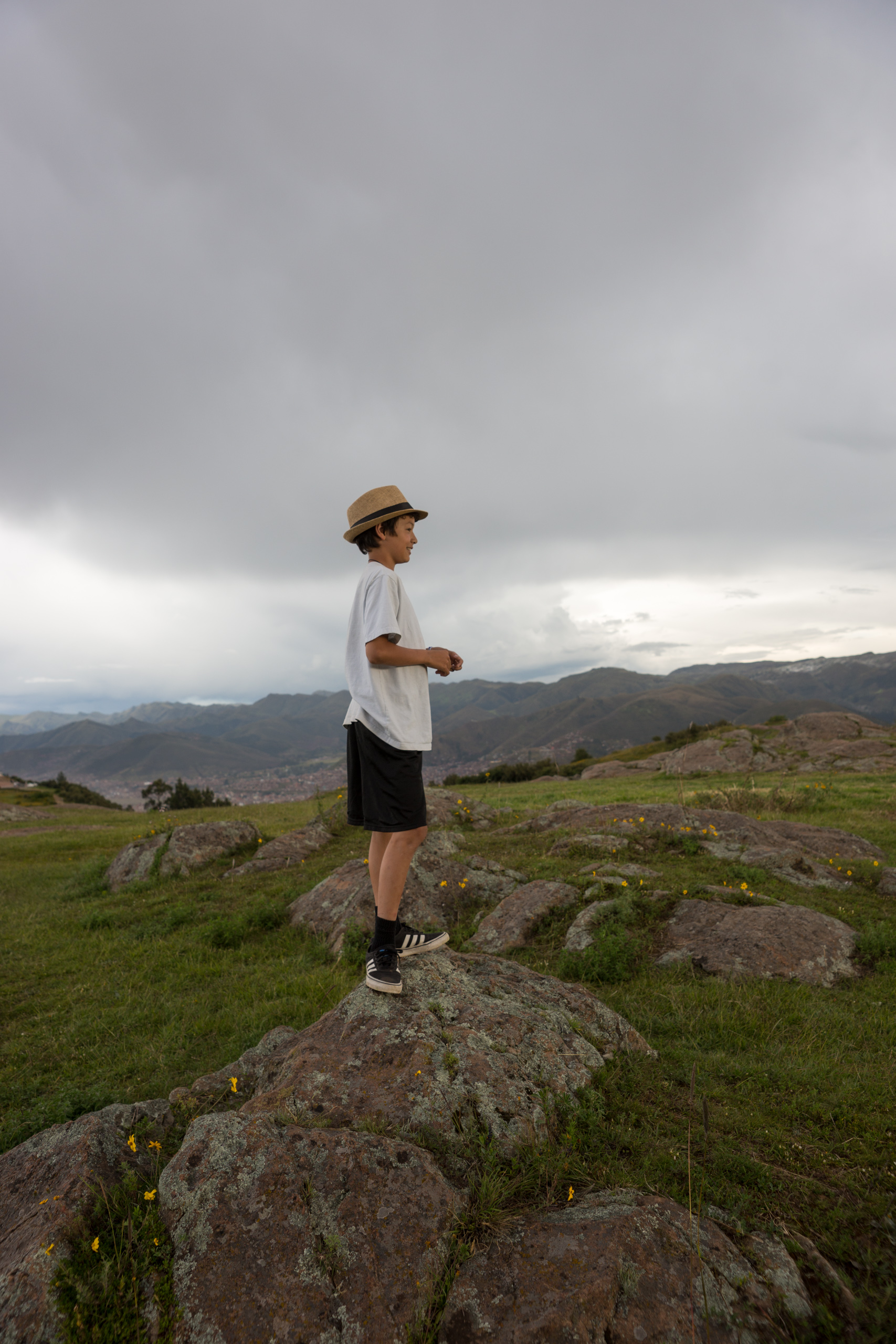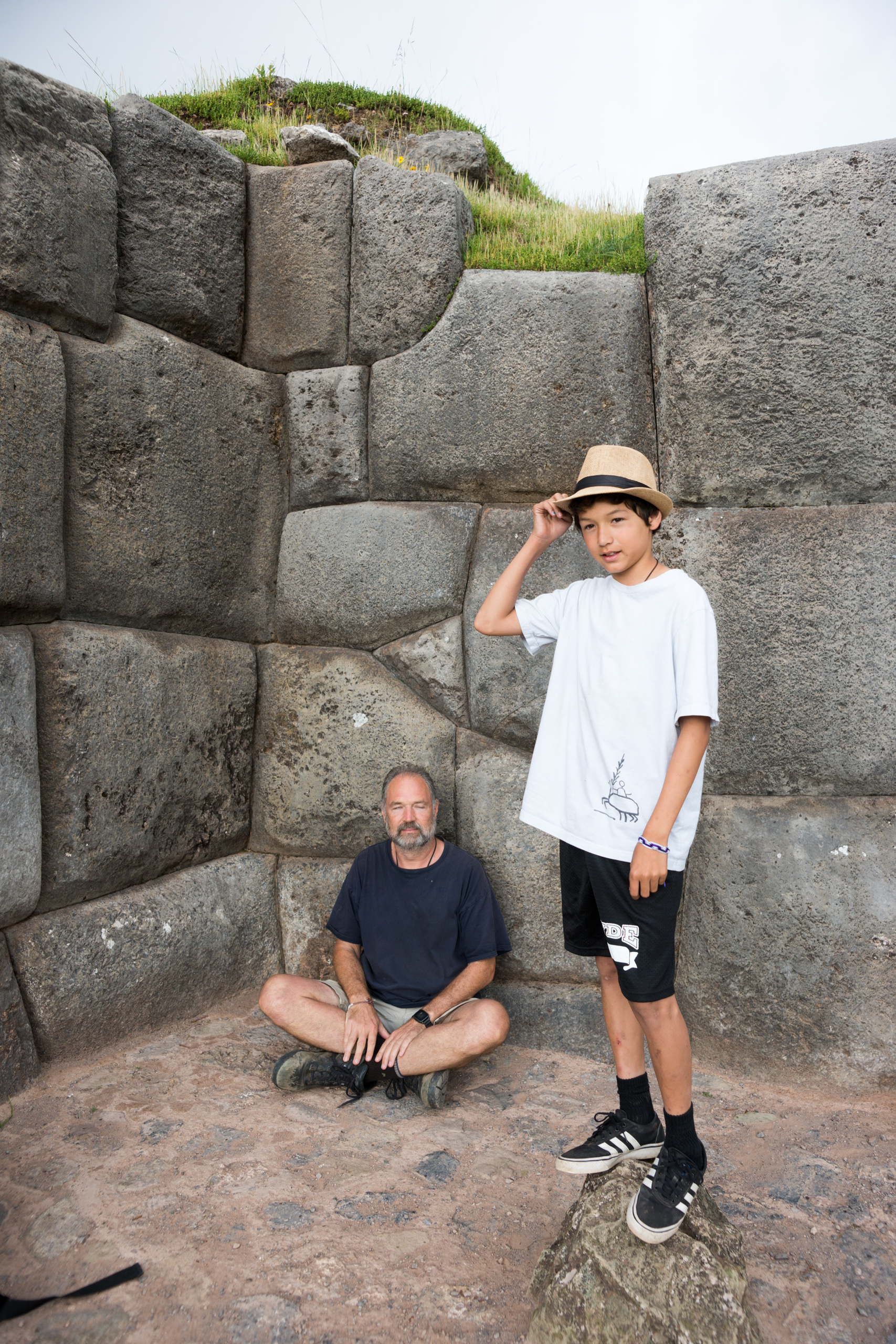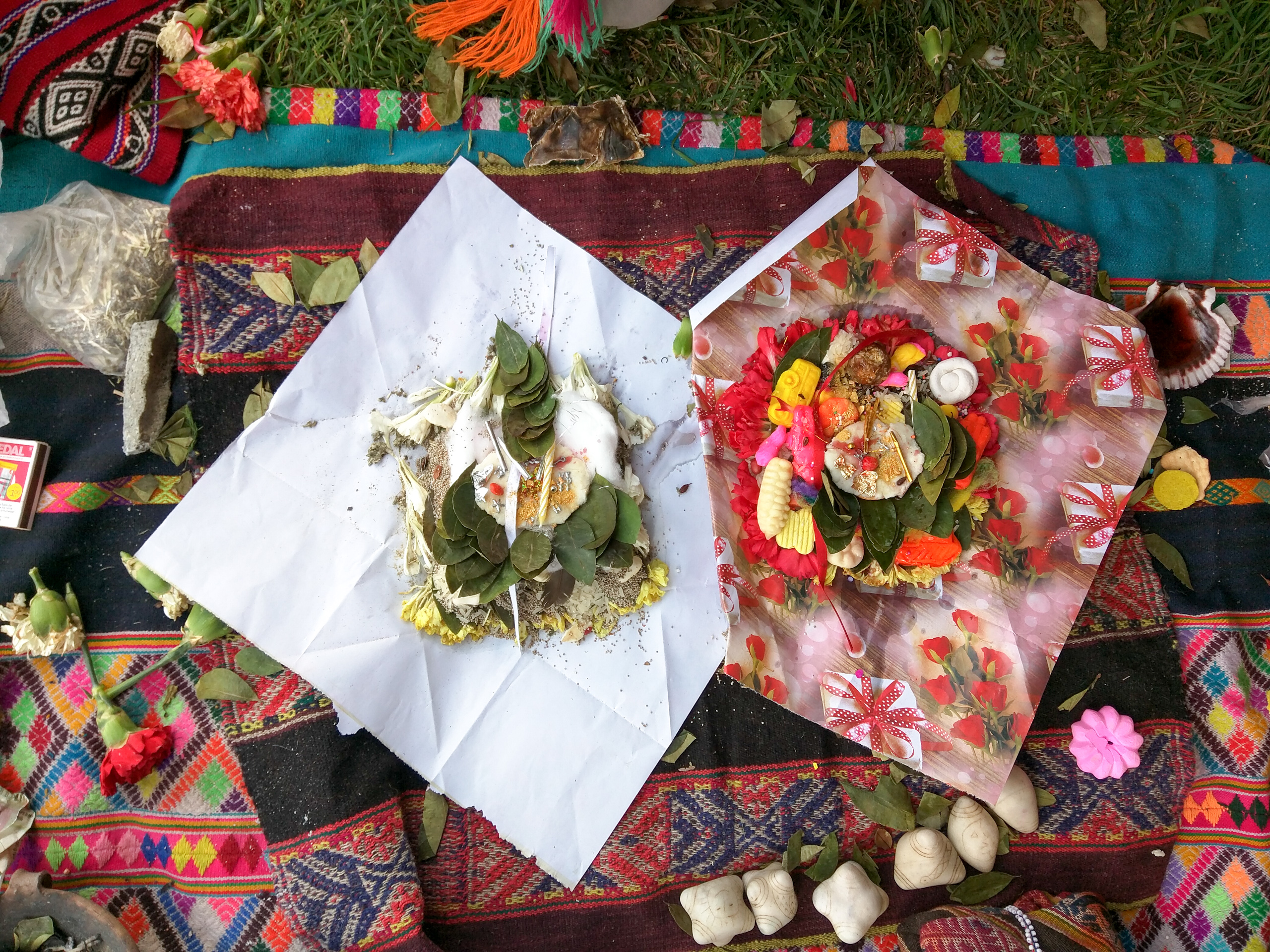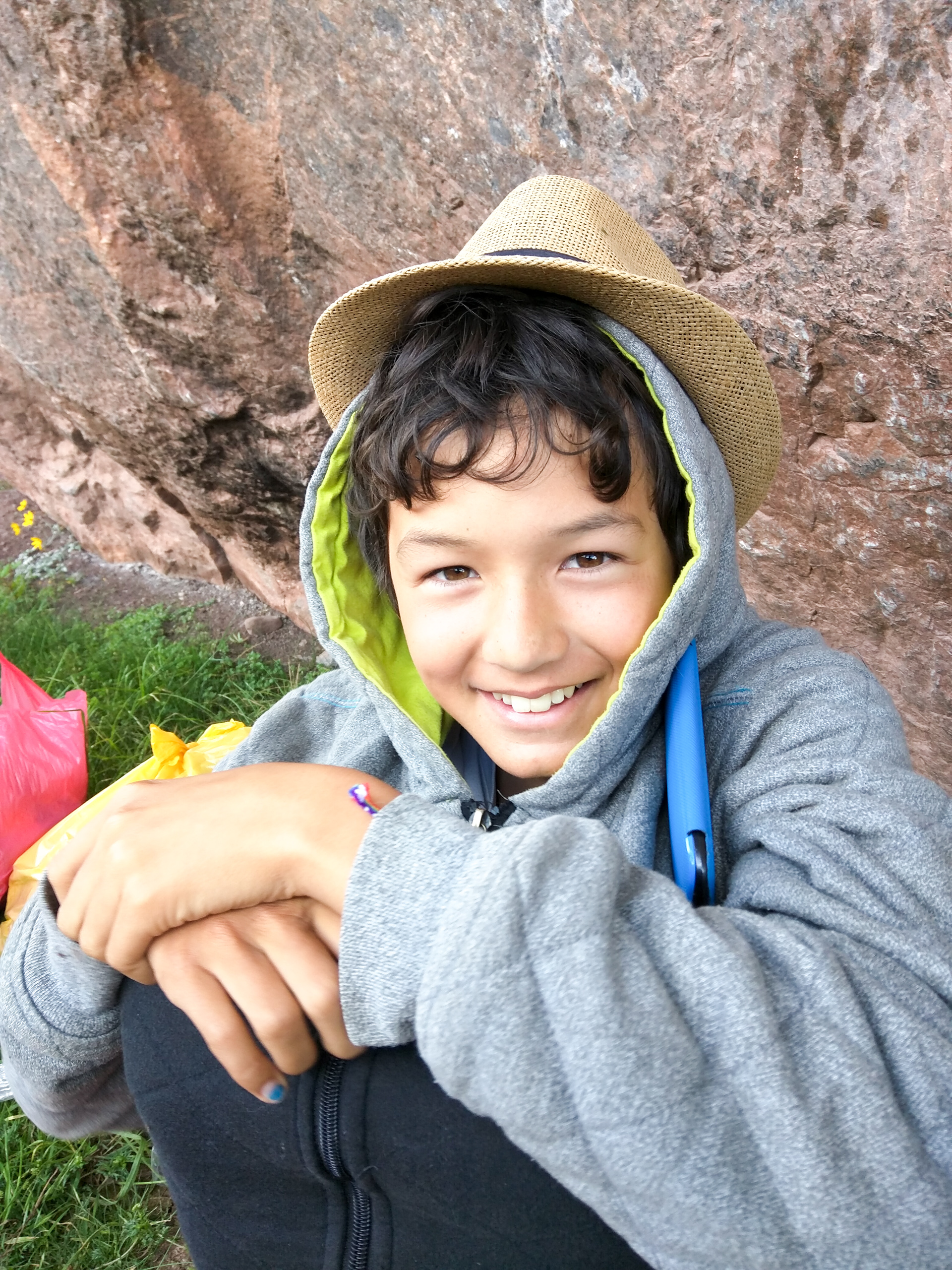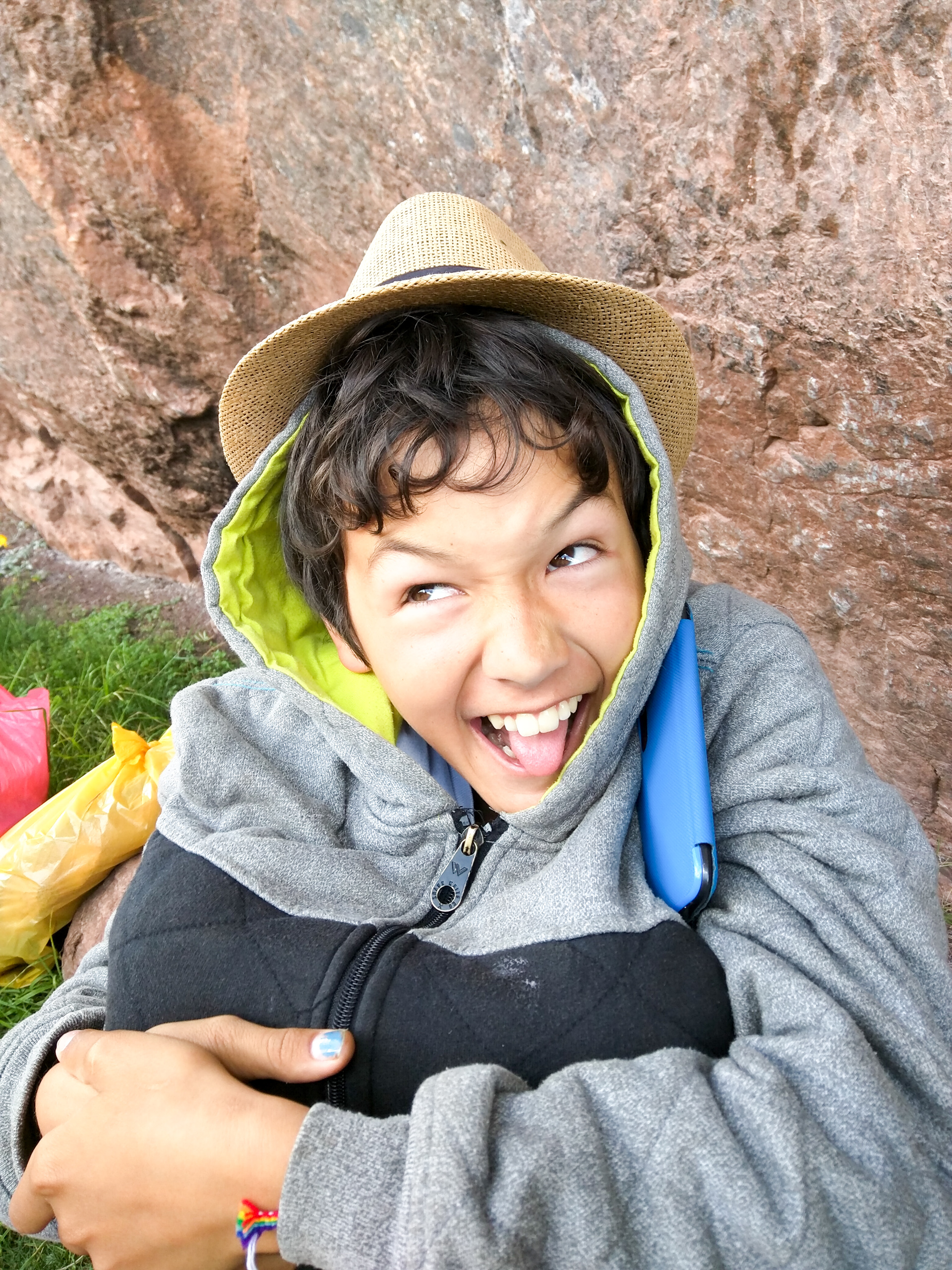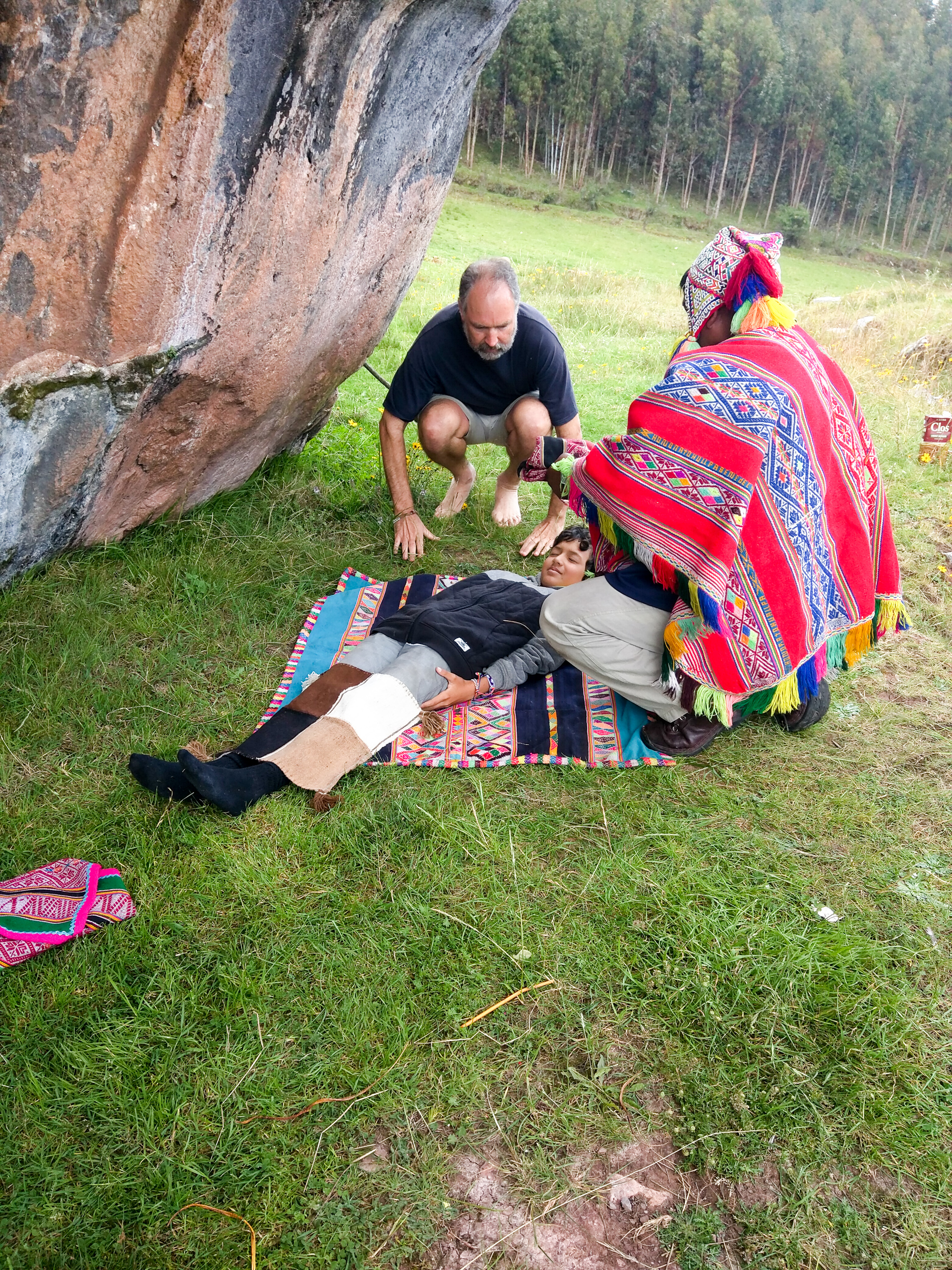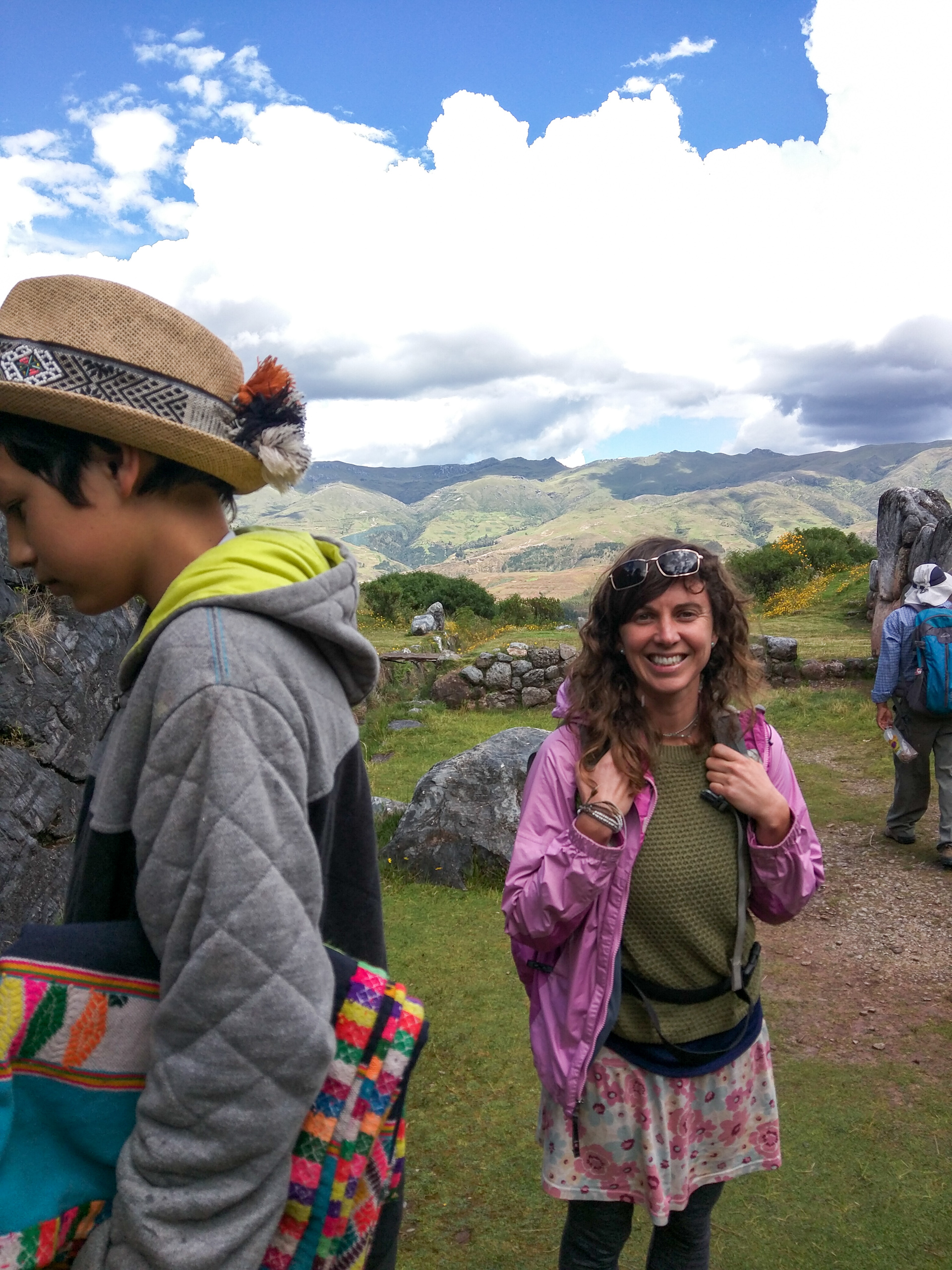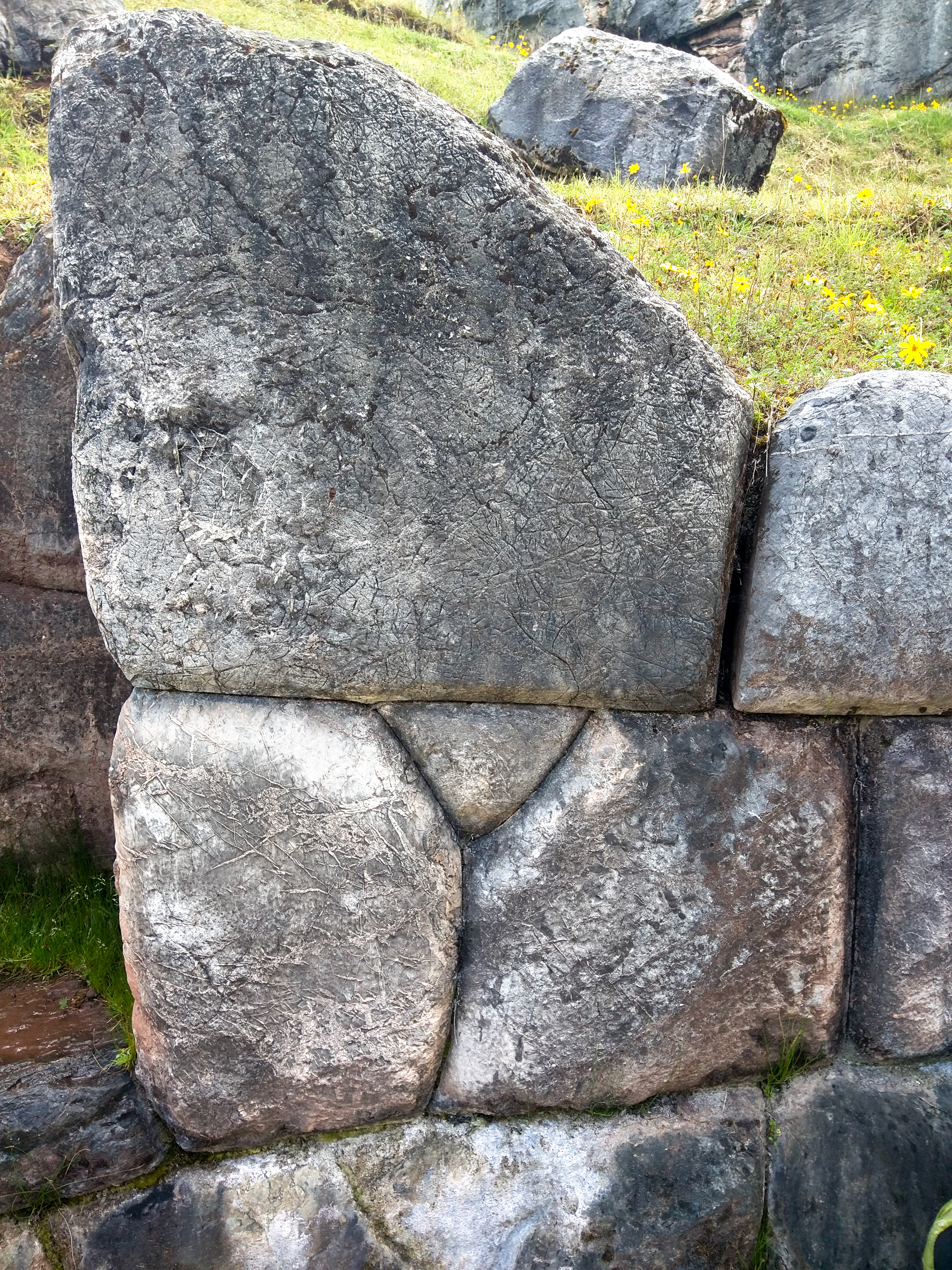Peru
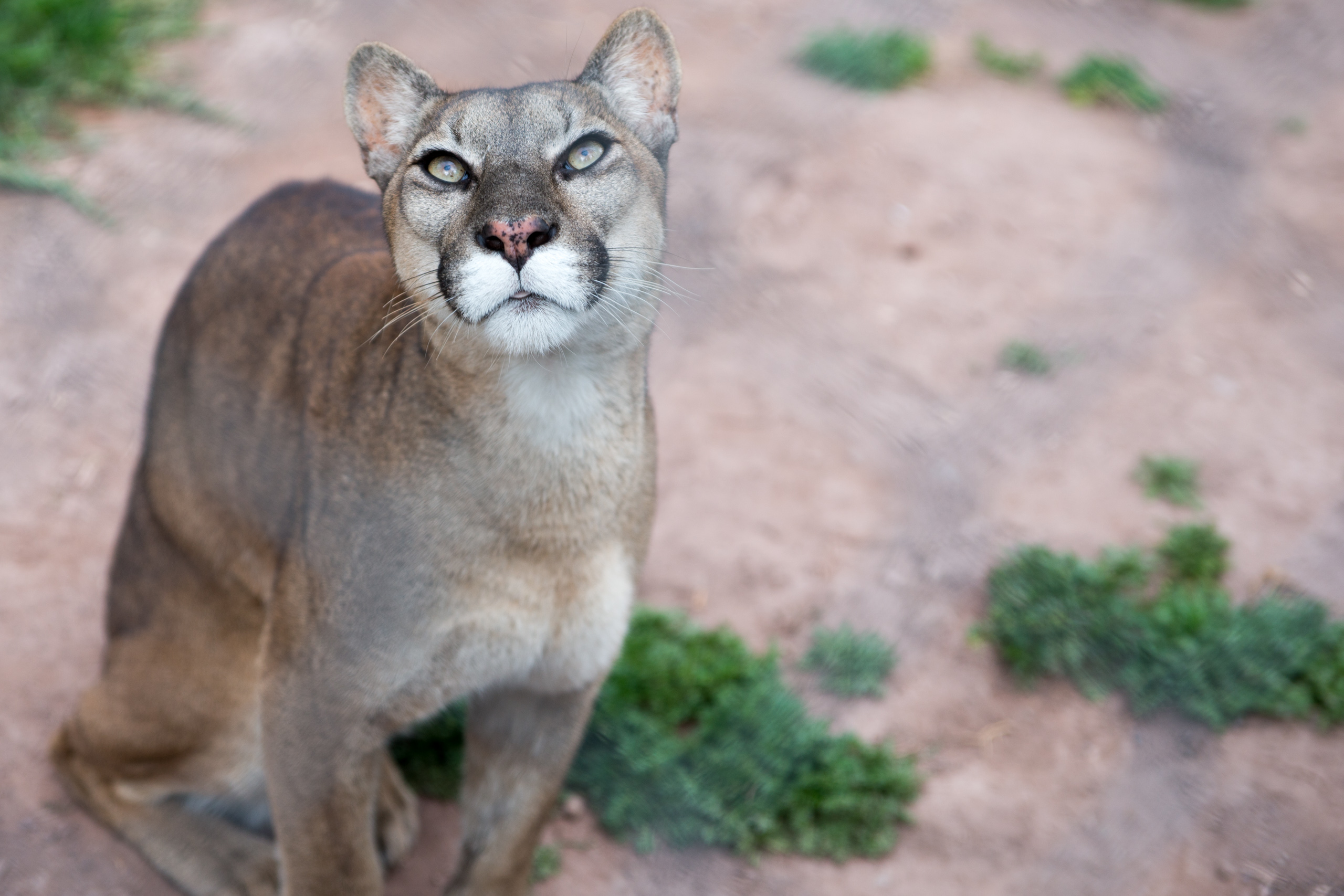
March, 2016. Each year we try to do something for spring break, something fun, different, or important. This year we decided to go to Peru, high in the Andes, around Cusco, which was the center of the Inca civilization. We wanted to see the archeological sights, but also I have been hearing the call of the apus, the high mountains, and we wanted the trip to be filled with ceremony.
It was really happy, but also sad in many ways. Alex never seems to have school break at the same time as Nobu, so she and Kathy would not be able to go with us. Imagine going to such a spiritually important place divided from the people who you love so deeply. Yet, the signs have been clear about this journey.
Fortunately, Megan had spring break at the same time, so she was able to go with us, woohoo!!! Megan had met Karina Davalos Concha. Karina lives in Cusco, and she arranged an itinerary for the week that would take us through the sacred valley, to Machu Picchu, and back to Cusco. Karina also arranged for shamans Doña Asunta and Don Ysidro to accompany us on the trip (Karina is absolutely amazing, if you ever plan to go to Peru, you must contact her). The trip would include not only sightseeing, but it would be filled with deeply spiritual ceremony from the Q’Ero tradition. Here is a photo of all us together, near Moray. From left to right, Jason, Nobu, Doña Asunta, Karina, and Megan.
Pisac
The trip was absolutely spectacular in so many different ways. The scenery is breathtaking, the archeology is stunning, and the ceremonies were deeply moving. We had seven days, and every day was full. We started by flying from San Francisco to Cusco. Remarkably, the flight was long but easy, and we slept most of the way. Cusco is about 11,000′ elevation, so on the first day we descended to Pisac, which is in the Sacred Valley, a little lower at 9,700′. Here, Nobu and I, are looking over the Sacred Valley. We also stopped at a kind of zoo along the way, where we saw a puma (or mountain lion, otorongo in Quechua), condor, and falcon. The Puma and Condor are two of the Inca trinity: Condor represents the upper world, Puma is the middle world (this world), and Snake is the lower world.
They also had a display of textiles and the natural dyes used to dye the alpaca wool.
Temple of the Falcon
The next morning, we went with Doña Asunta to the Temple of the Falcon, in the Pisaq Archeological Park. I had thought that this was one of the big reasons why I was going to Peru, because I thought the temple was home to the Nusta Huana Huaman Tklla. but, as it turns out, the temple was closed due to an accident the previous month, and it wasn’t the right home either. Regardless, it was our first exposure to Inca archeology, and it is spectacular. You can see the terracing that is such a park of the Incan landscape.
After the Temple of the Falcon, we went to a nearby river where Doña Asunta performed a despacho. A Despacho is a gift to spirit, or the organizing principles of the Universe, and is a ritual of energetic exchange for healing, re-establishing right relationship and protection. There are many types of despacho; they can be for healing, cleansing, love, for requests, or any number of things. A central element in all despachos is gratitude — gratitude for the Earth, gratitude for the apus, gratitude for healing, anything you are grateful for can be part of the despacho. The ceremony itself places a set of offerings to spirit that symbolize this gratitude. Everyone participates in the building of the despacho, and afterward it is burned. The man in the photo below is our driver Juan.
I had been feeling a strong urge to climb the mountains, like I was being called. So, before we returned to our hotel in Pisac, Karina directed me to a trail that ascended from the Pisac market into the mountains toward some Inca ruins. Though the trail was over 10,500′, I felt like I was flying up the mountain, like I was being pulled upward. Karina warned me not to be late, but I was able to make it to the very top, where I sat and performed my own private ceremony of gratitude.
Inkariy
The next day, we performed another despacho in Inkariy (I believe that is what it is called), where there is a large stone snake. Where the previous despacho had been focused on gratitude, this was a despacho of cleansing. First we walked up to the the snake and put our head against its mouth, just as in the original Inca ceremonies there.
Ollantaytambo
After Inkariy, we left for Ollantaytambo, where we had the afternoon to do as we wished. First up was getting lunch. Megan and Nobu were in good spirits.
There are some spectacular Inca ruins in Ollantaytambo, so we took the afternoon to climb the mountains.
Machu Picchu
The next day we headed toward Macchu Picchu, which is quite lower in elevation than the Sacred Valley. IT was amazing to see how we descended from the high Andes down into the upper rainforest. The climate changed drastically.
The next day we left for Machu Picchu itself. It turns out that I contracted a fever overnight, and I felt sick as a dog. So, instead of walking the ruins (which I was really looking forward to), we found a cave and I fell asleep in it. Perhaps this was the intent, because of the time I spent in that cave, I felt really connected to the place. Once I had rested, I was able to get up and walk a little, and even to take some photos.
Moray
On the way back to Cusco, we stopped at Moray to perform another despacho ceremony. This was one of my favorite places. The terraces are carved into a bowl, high in the mountains. The sky was bright blue with clouds, and the shapes of the terraces formed a circular pattern like a topographical map.
Saqsaywaman
When we returned to Cusco, we had the afternoon to visit Saqsaywaman. The city of Cusco was the capitol city of the Incas. Cusco means “naval,” and it was considered to be the navel on the Earth. The city was formed in the shape of a puma, and Saqsaywaman the the head of the puma.
The stone work here is completely different from anything we have seen before, and it is astounding. The stones are massive, and the fit is perfect, so tight that it is not even possible to fit a knife in between. What’s more, the joints are not flat, some of them curve a little, and some of them curve a lot. How were these people able to fit the stones together so perfectly? It seems that this would be difficult even today, so how were they able to do it? Perhaps it is with magic.
Final day
For our final day in Cusco, the shaman Don Ysidro joined us, and we traveled north of Cusco to perform a despacho and initiation, calling in the apus.


